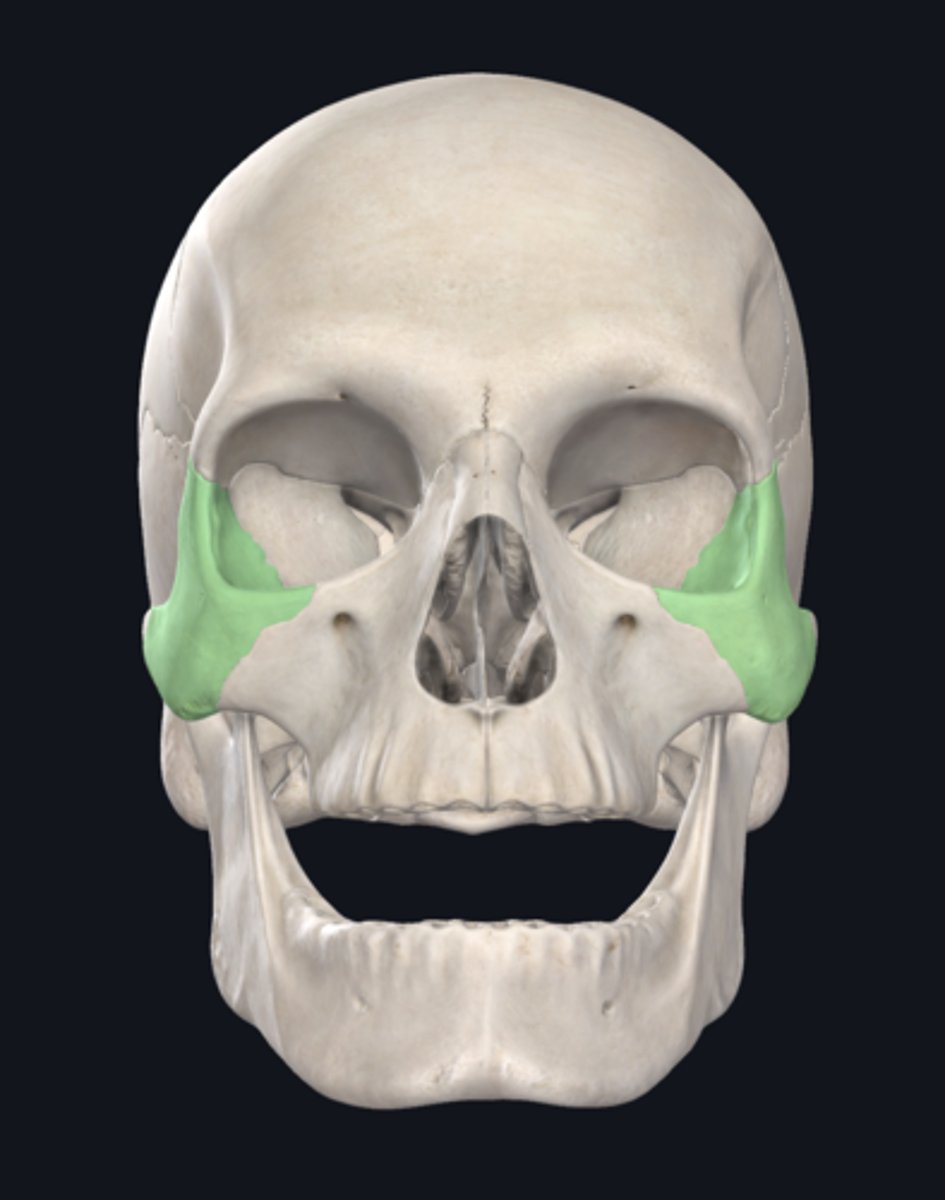Week 13: Nervous System
1/124
There's no tags or description
Looks like no tags are added yet.
Name | Mastery | Learn | Test | Matching | Spaced |
|---|
No study sessions yet.
125 Terms
nerve
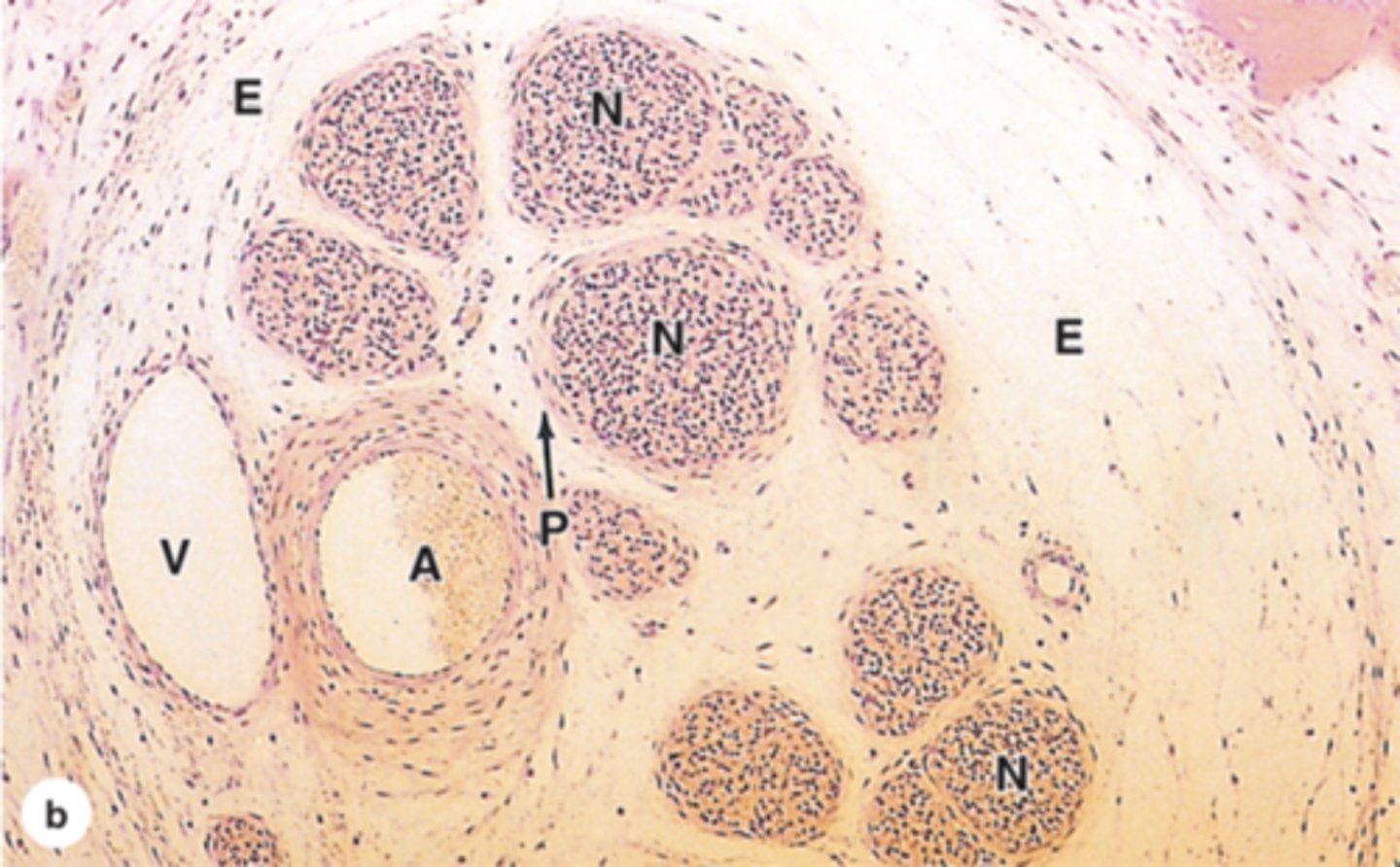
axon
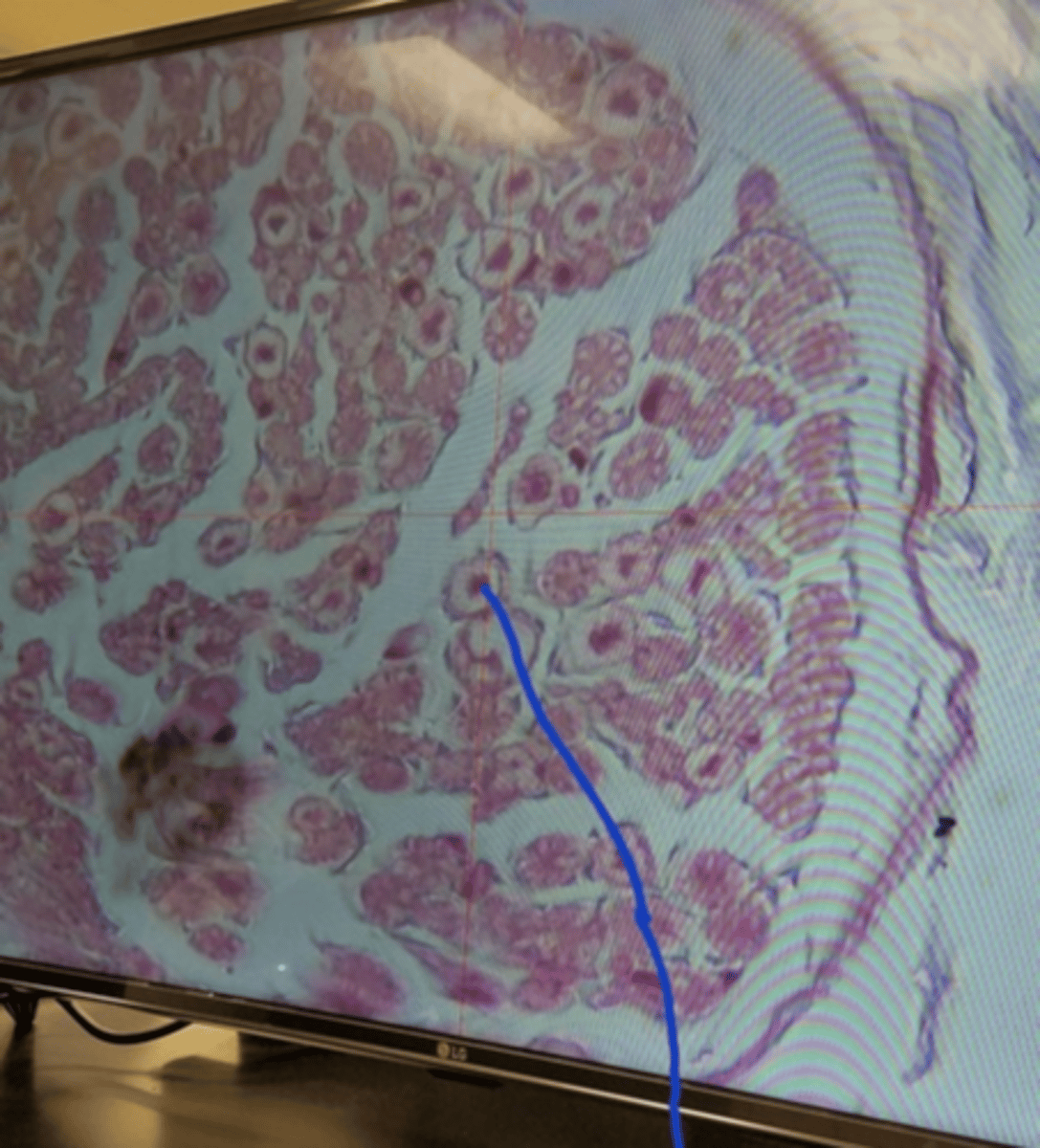
fascicle
name N

endoneurium
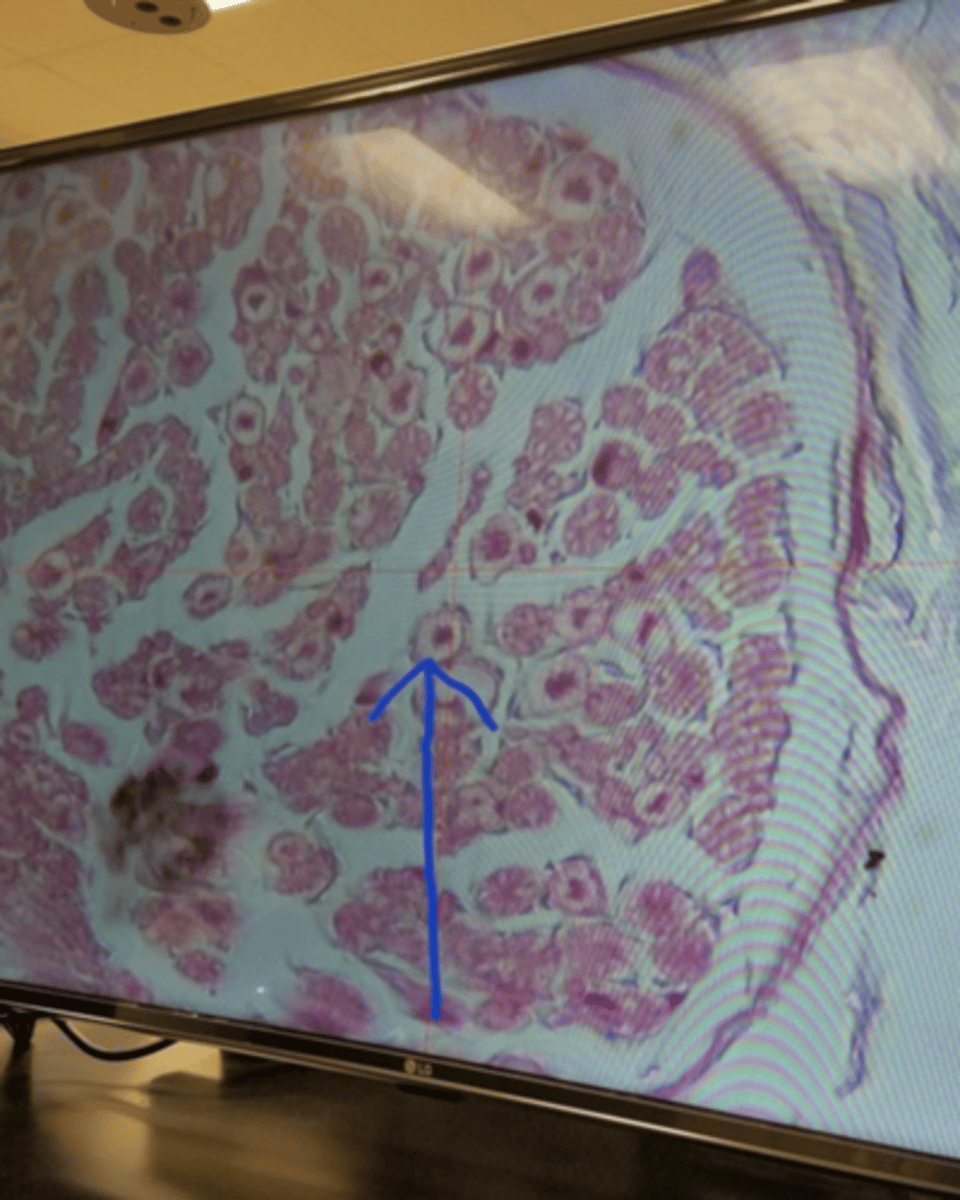
endoneurium
surrounds the axon
perineurium
name P
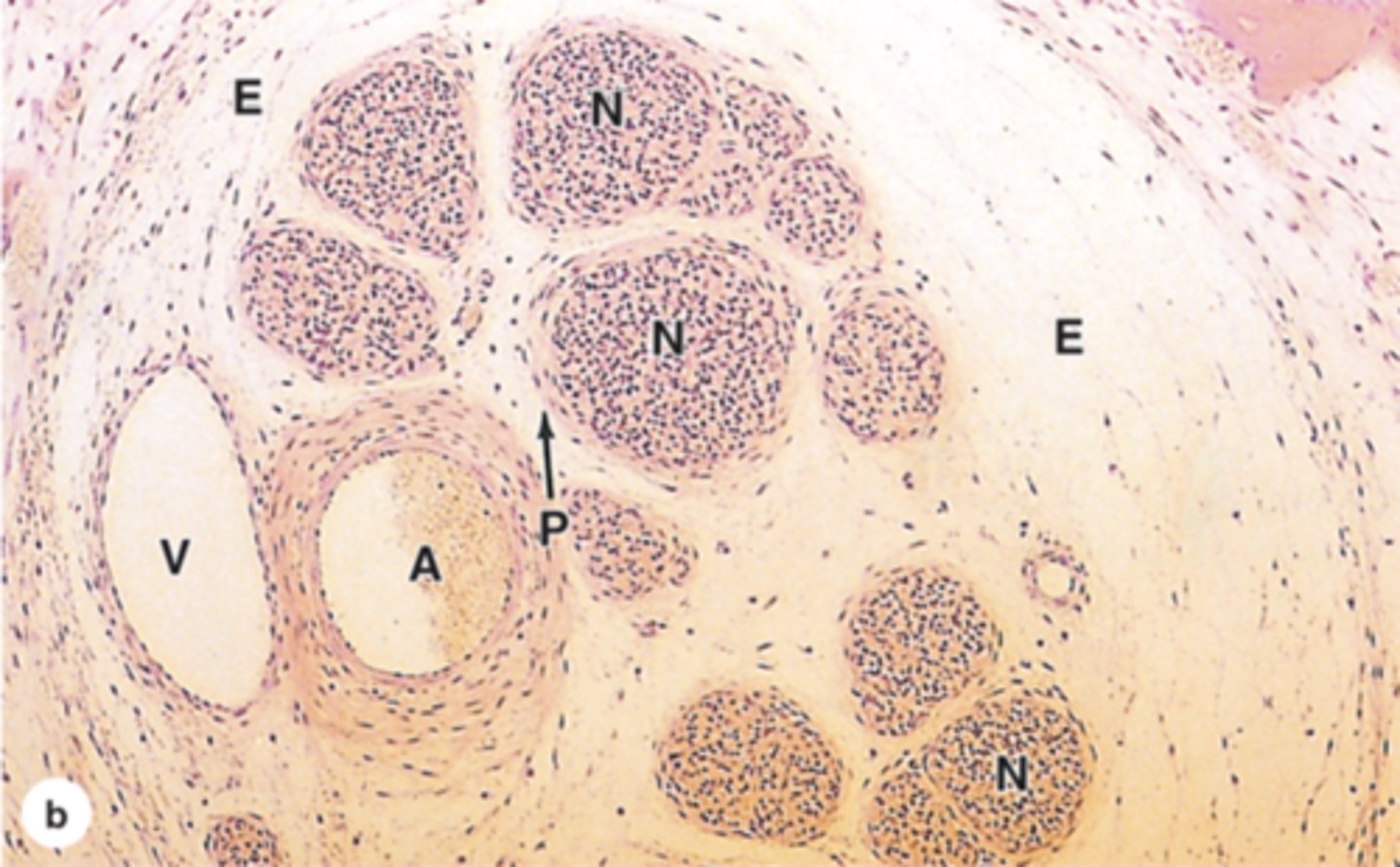
perineurium
surrounds each fascicle
epineurium
name E
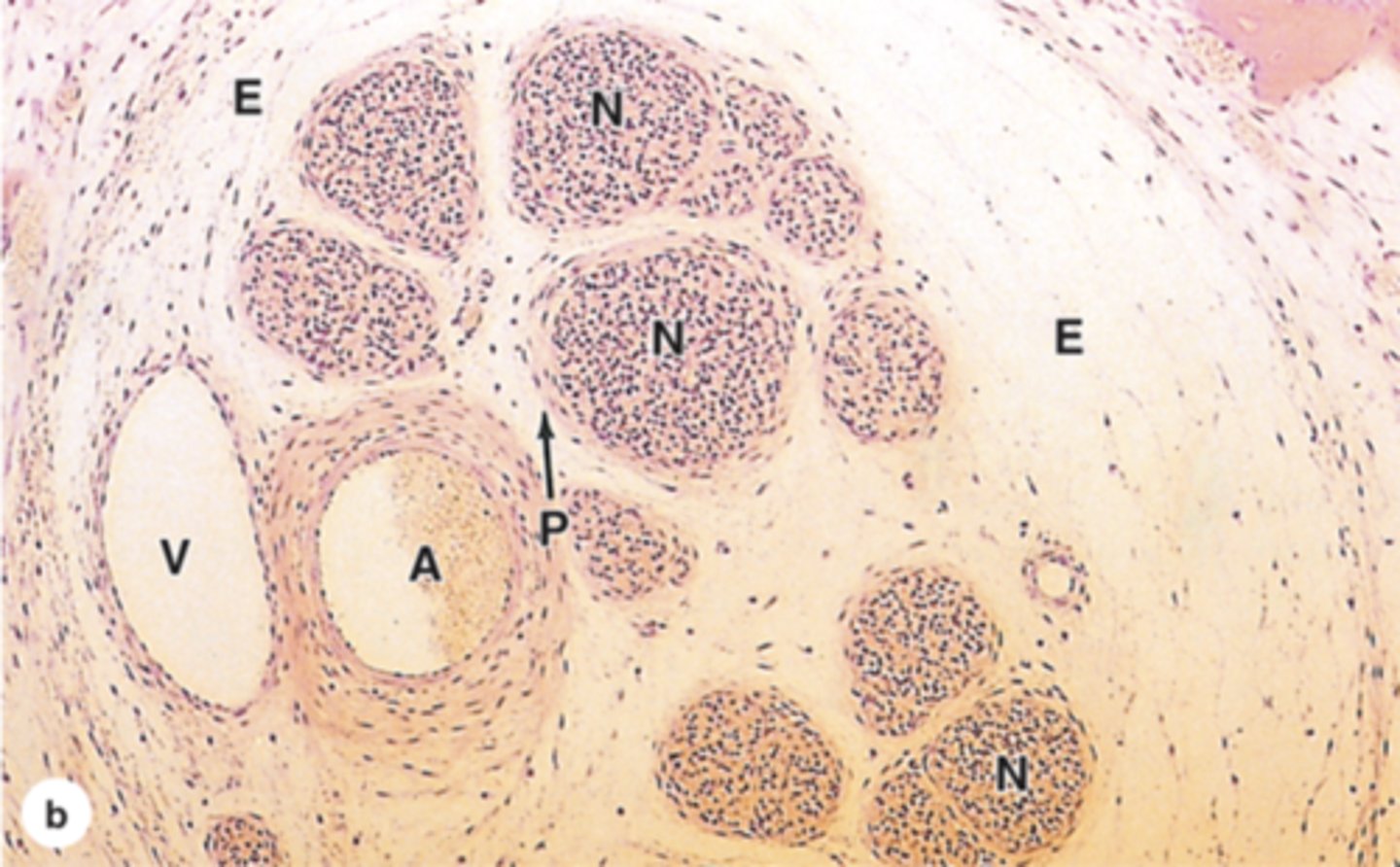
epineurium
surrounds the entire nerve
spinal cord dorsal root ganglion
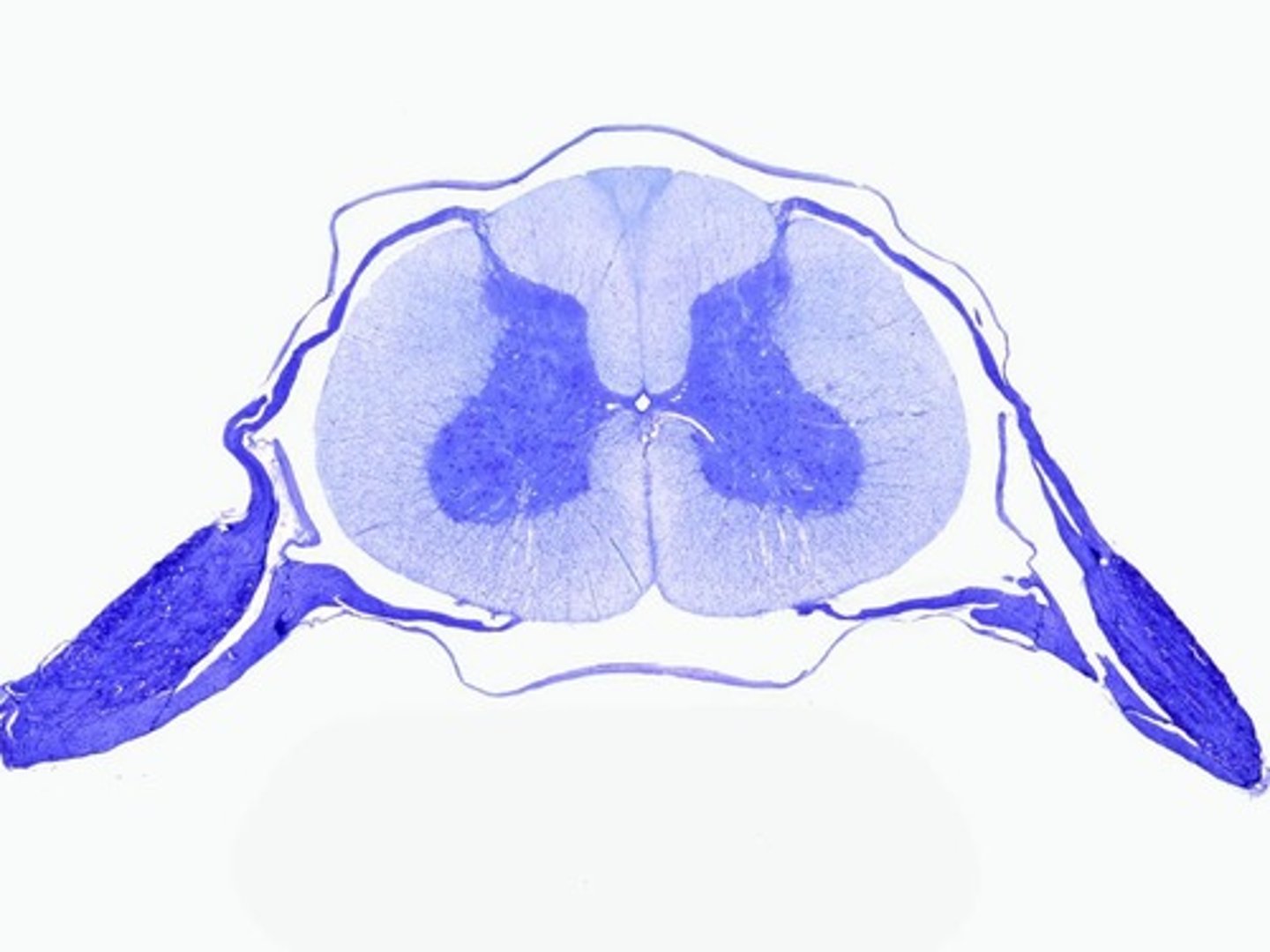
ventral horn
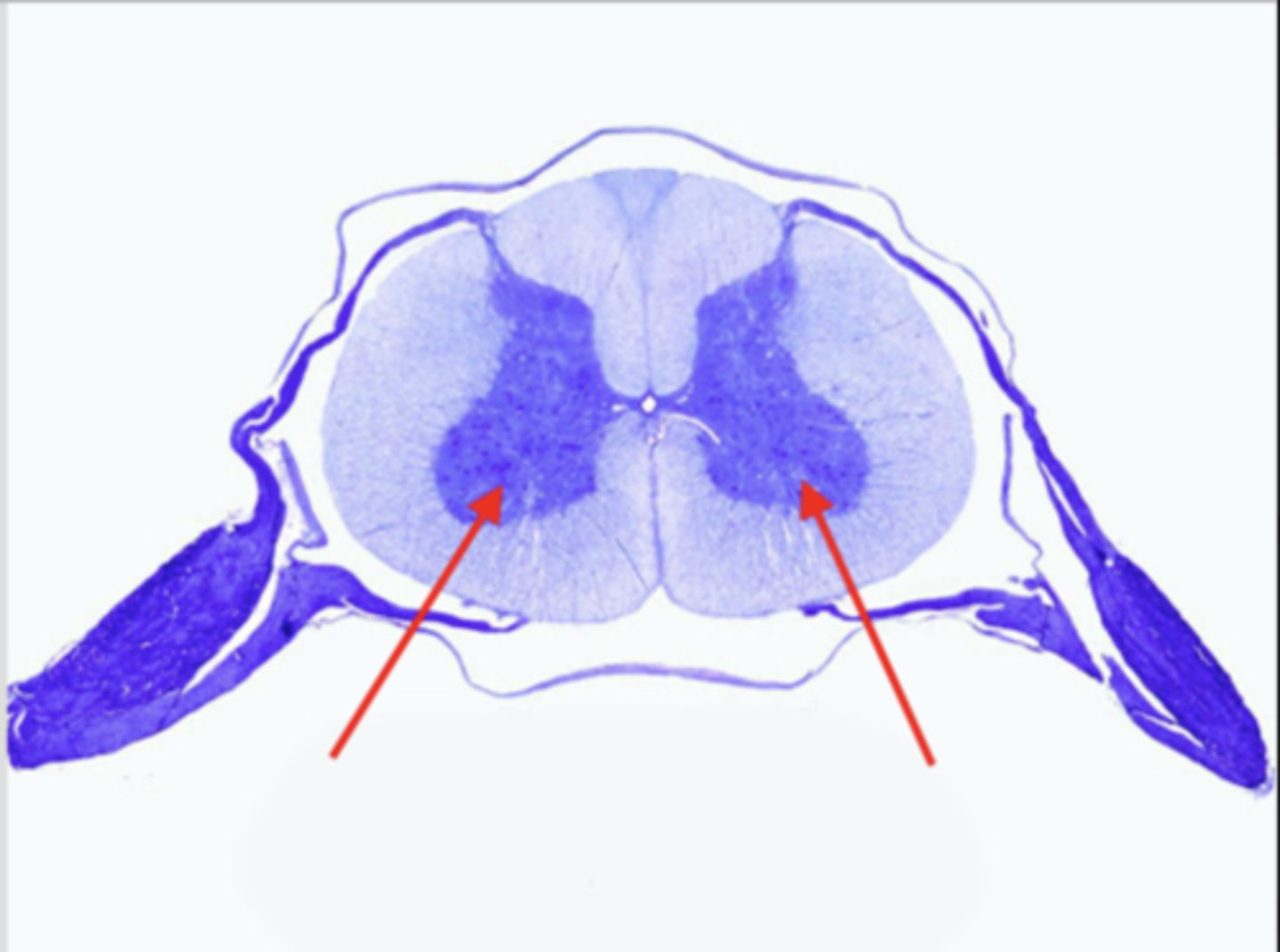
dorsal horn
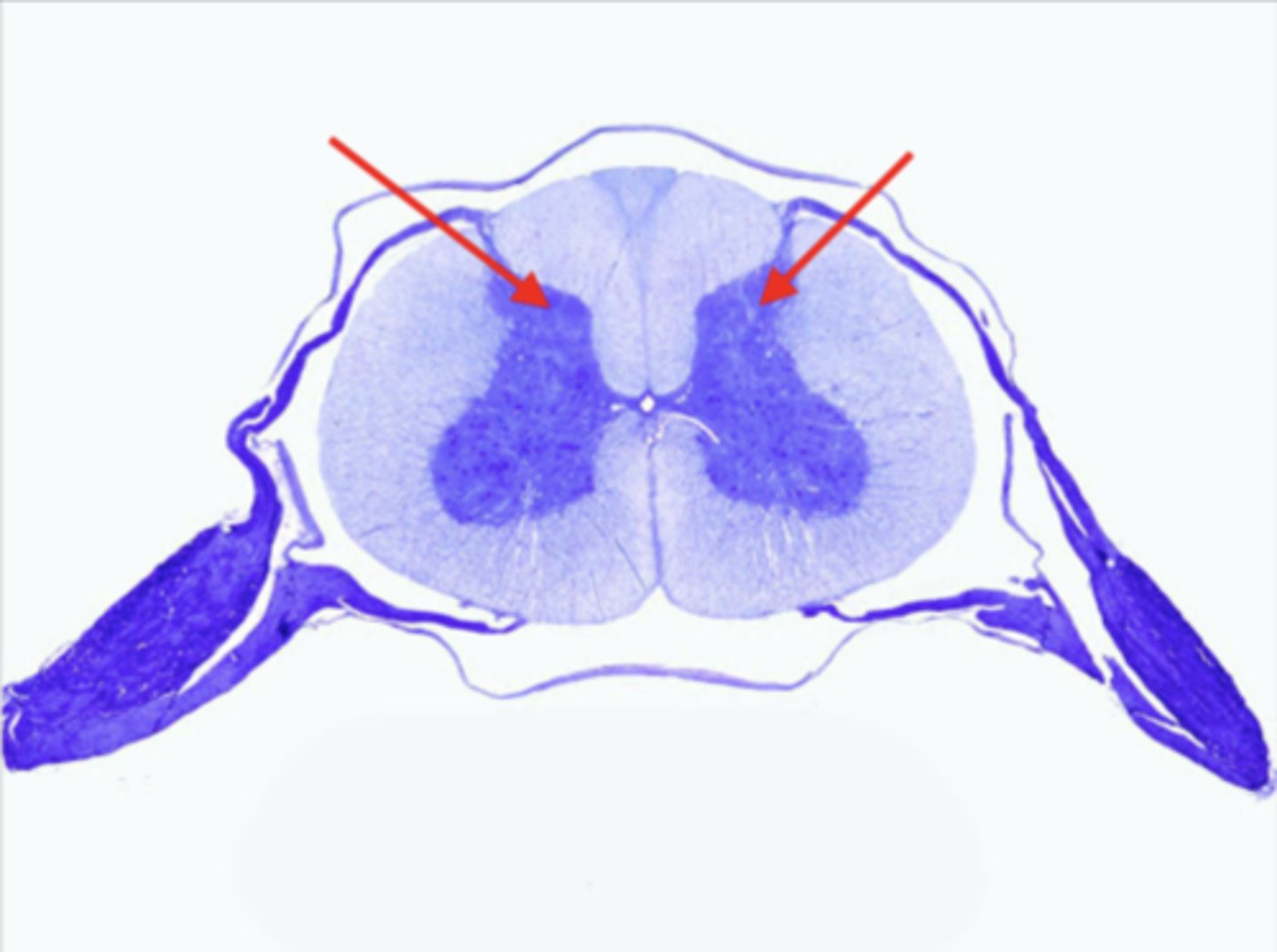
gray commissure
area around central canal
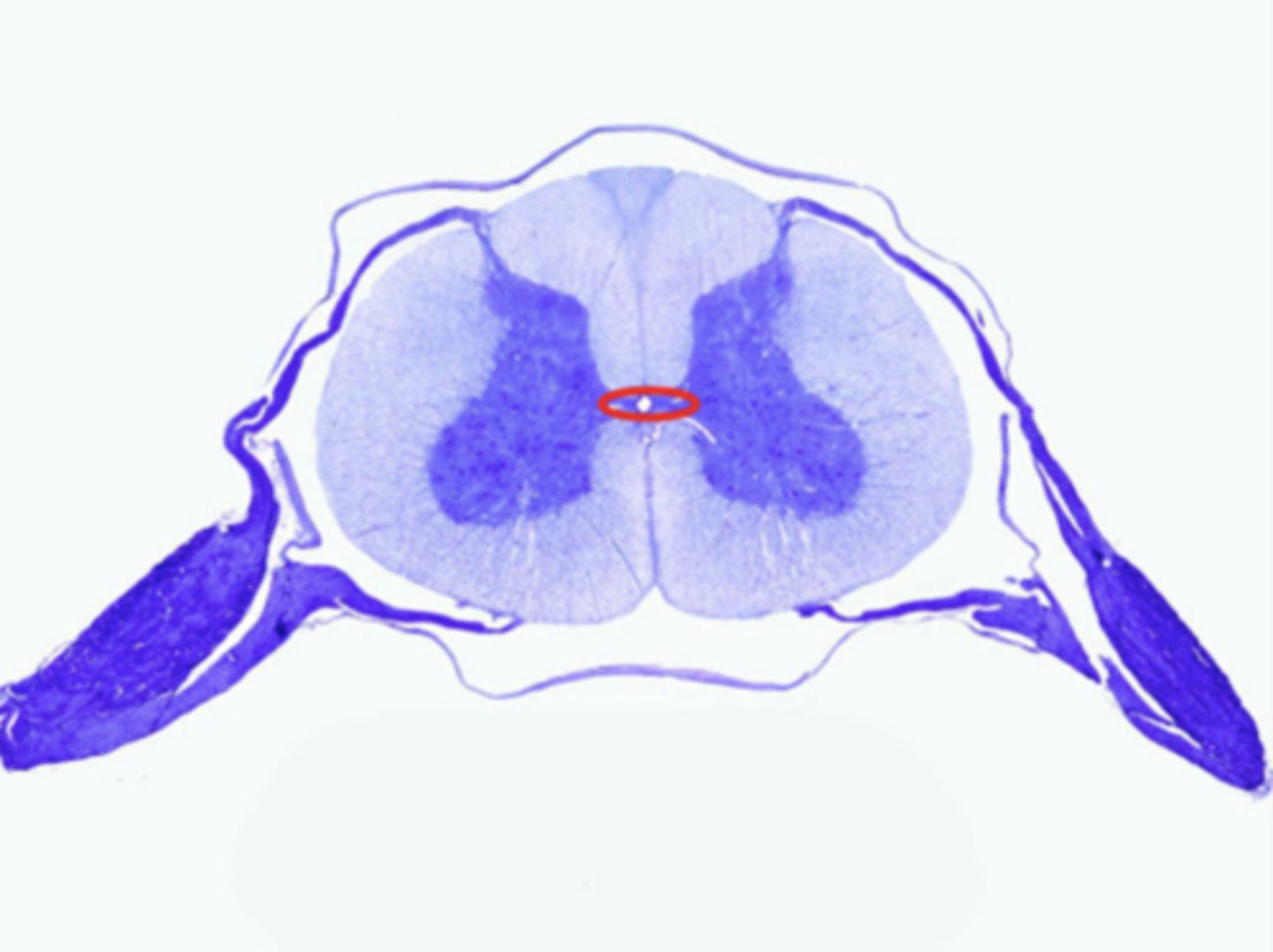
white matter tracts
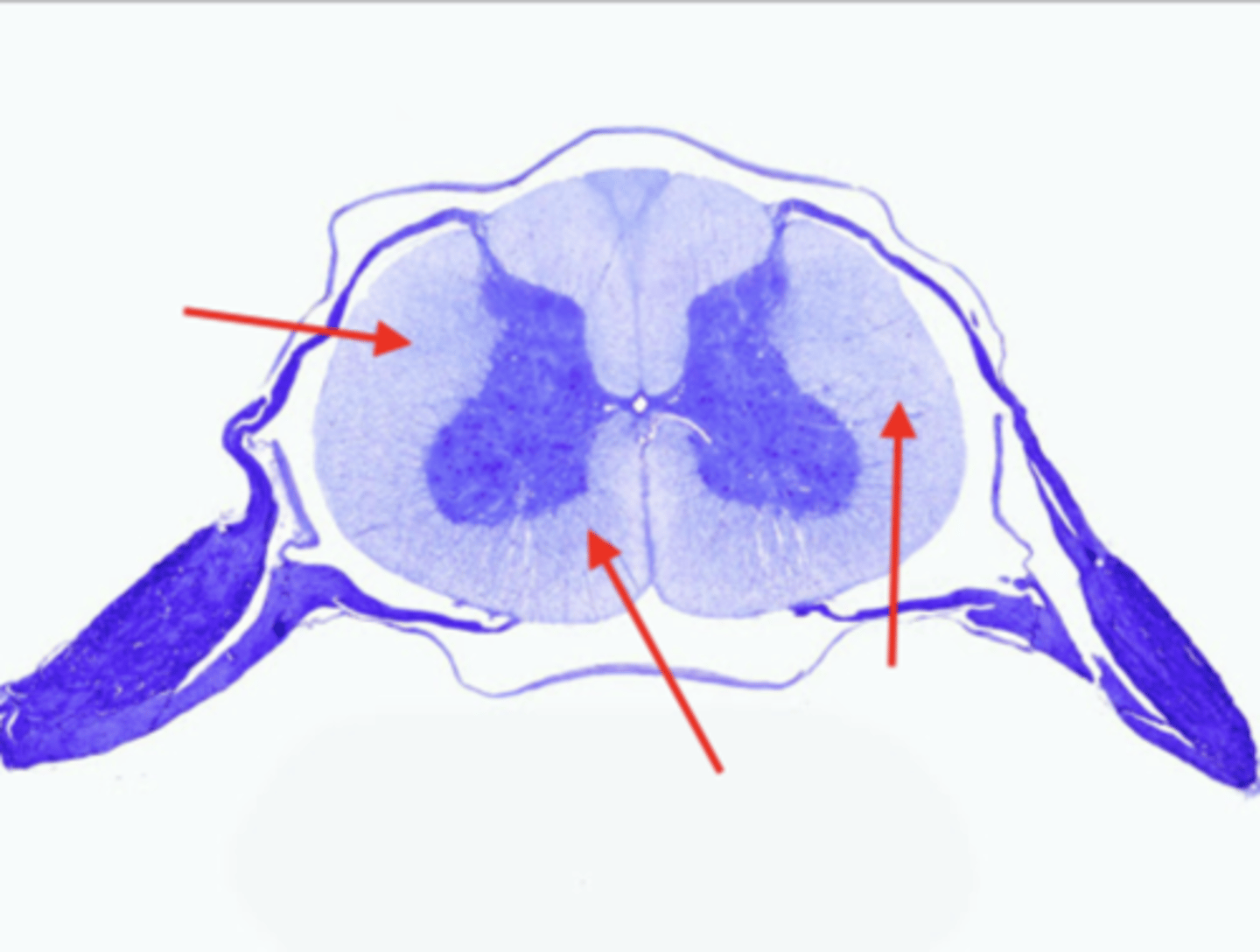
gray matter
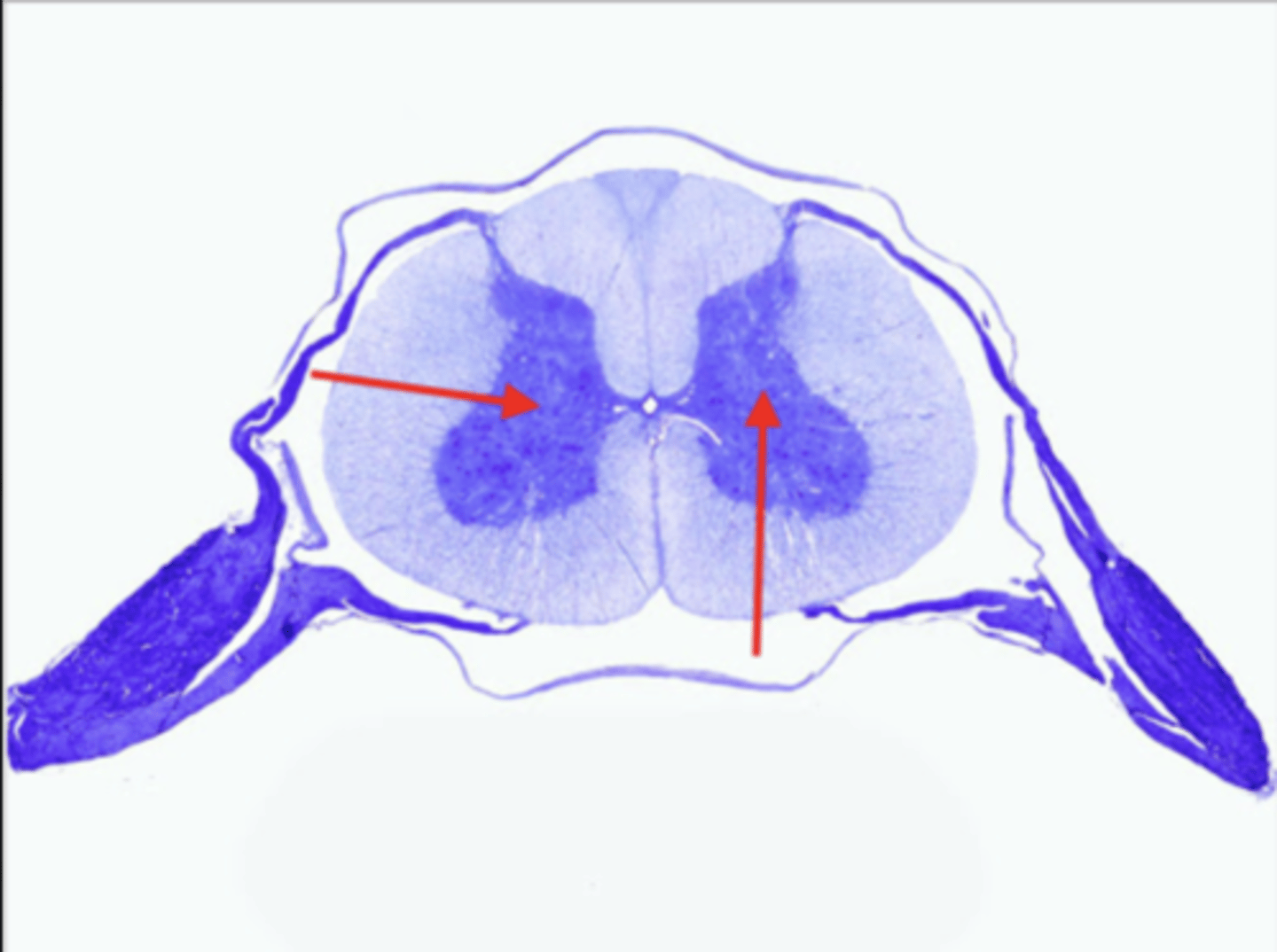
central canal
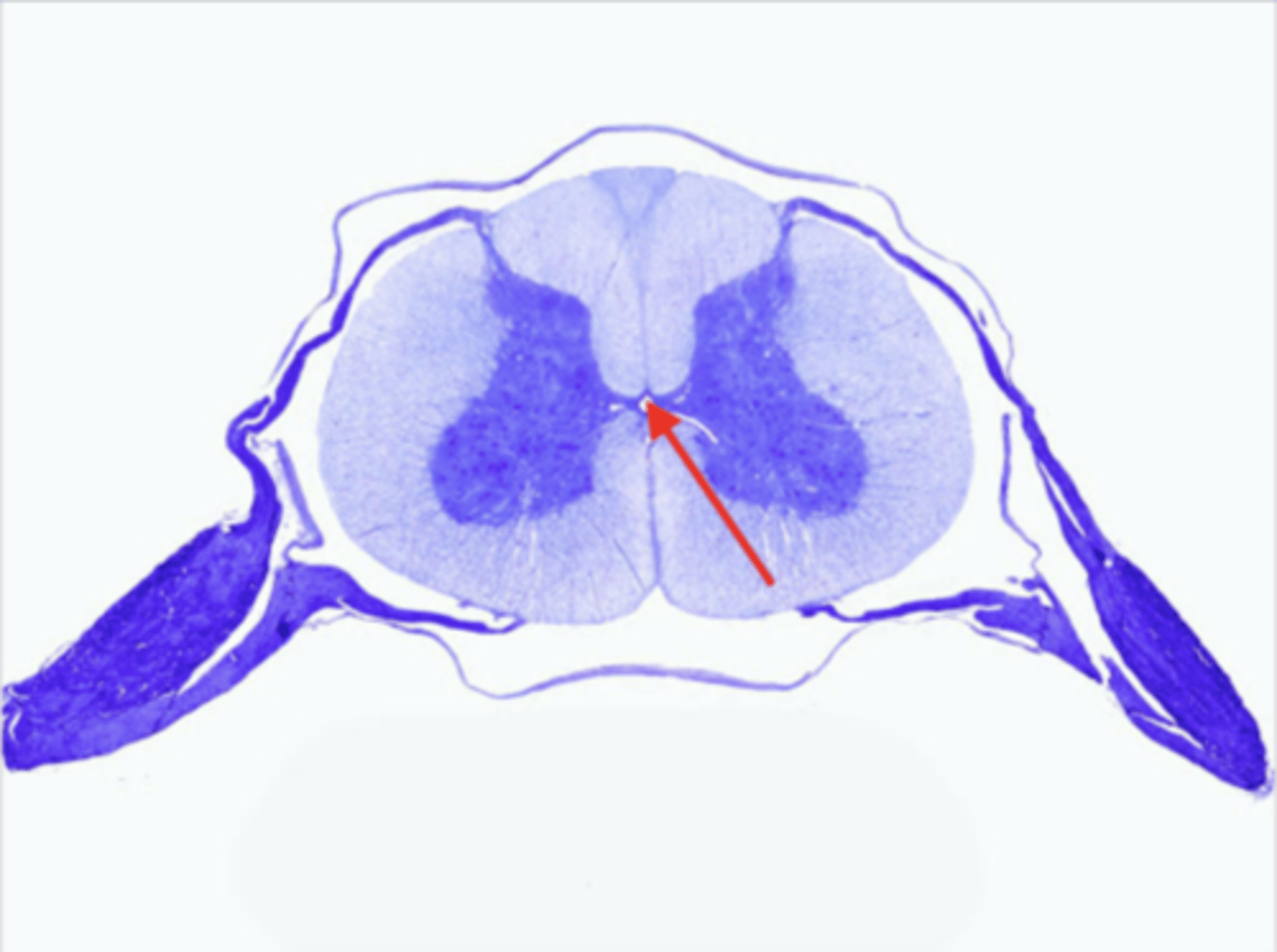
ventral median fissure
name the red line
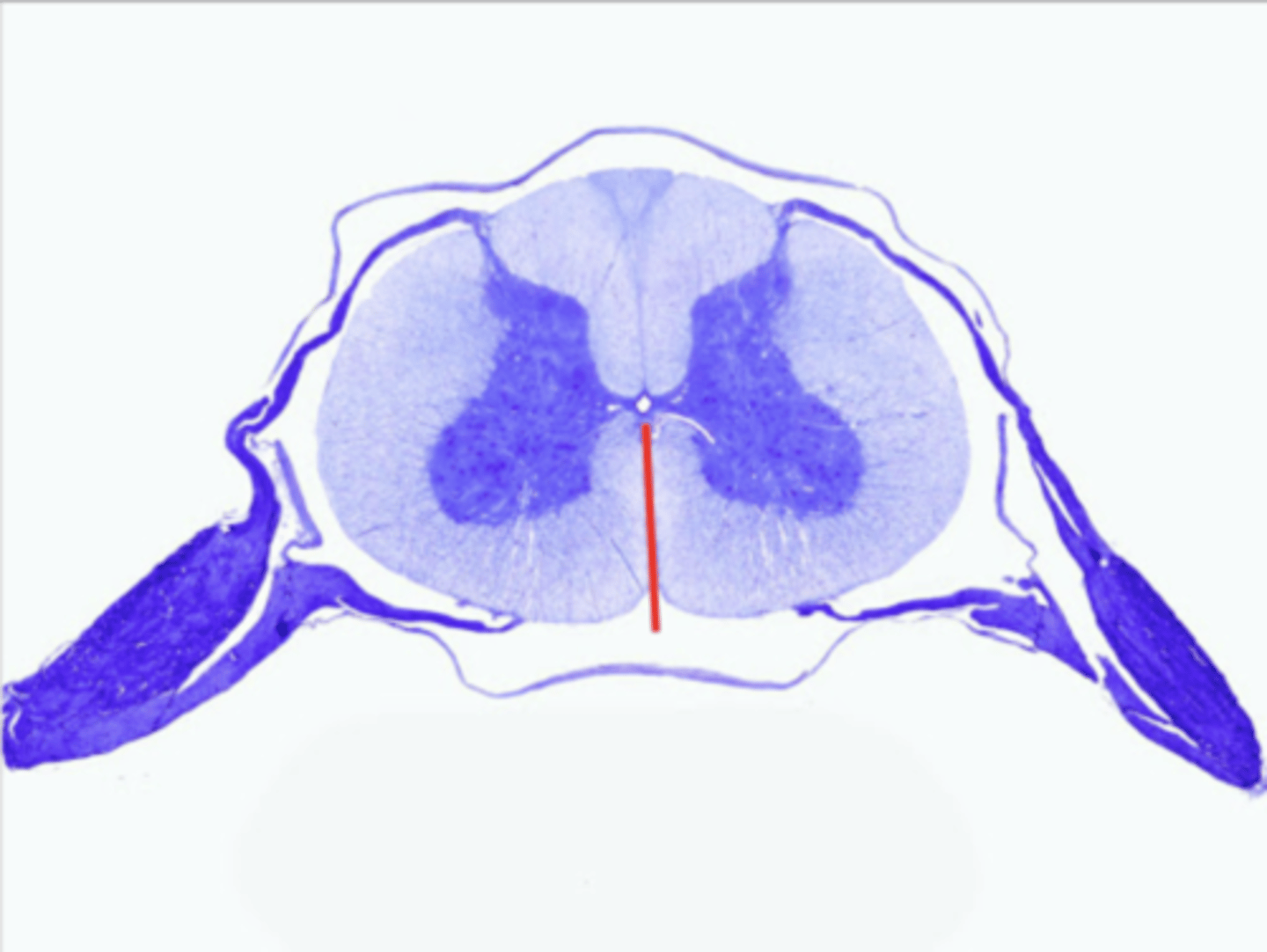
dorsal median sulcus
name the red line
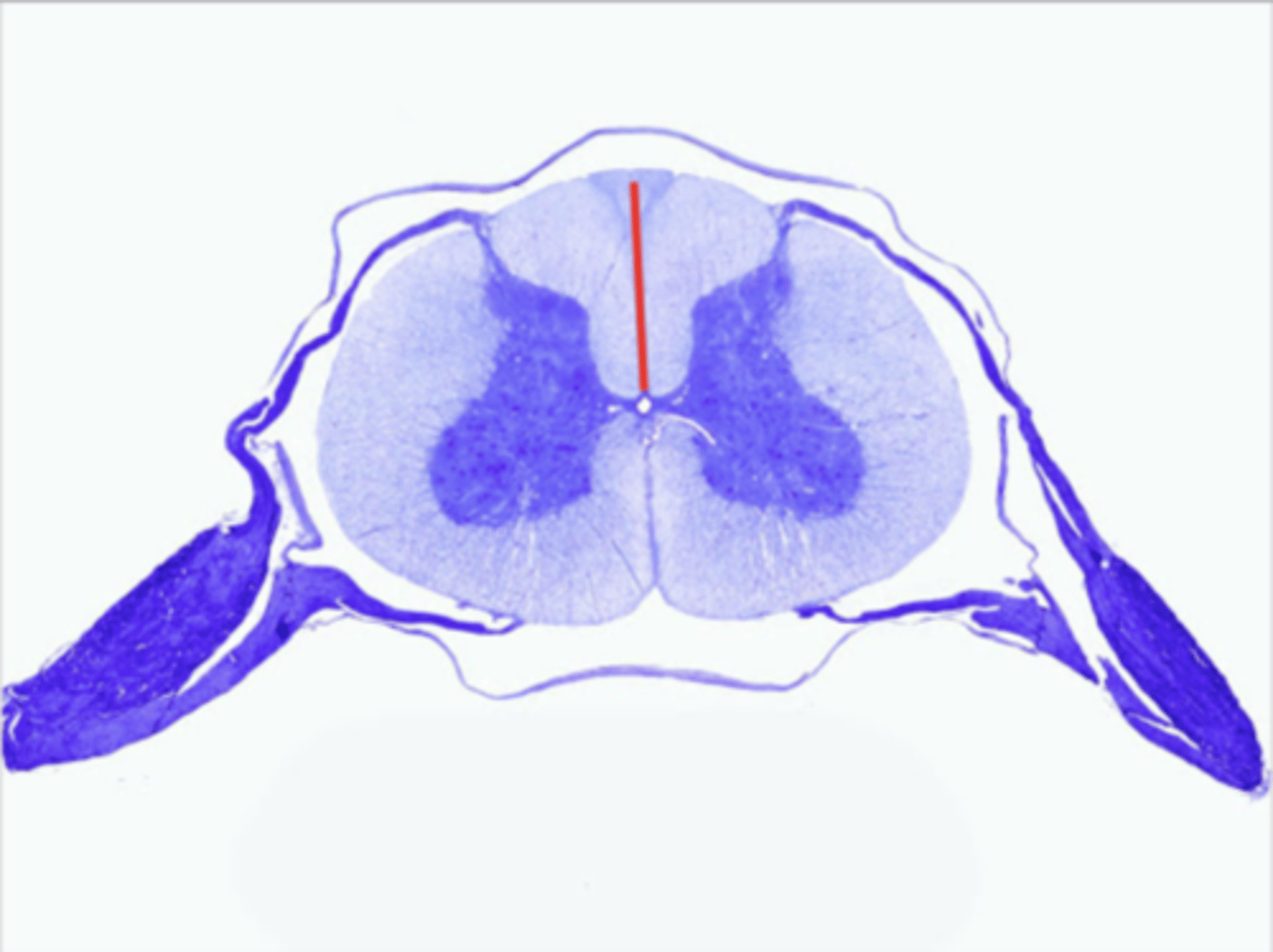
dorsal root ganglion
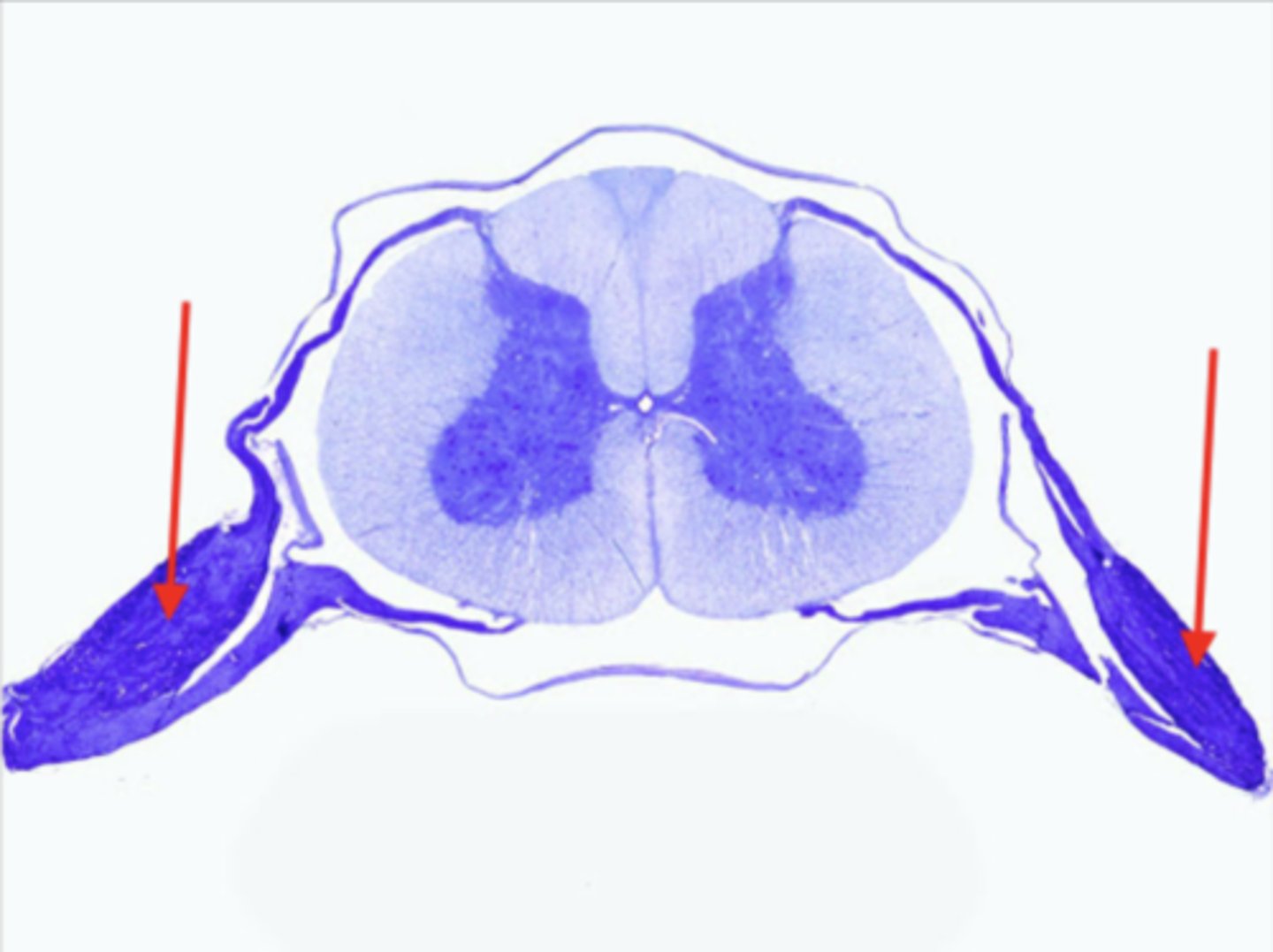
cerebrum
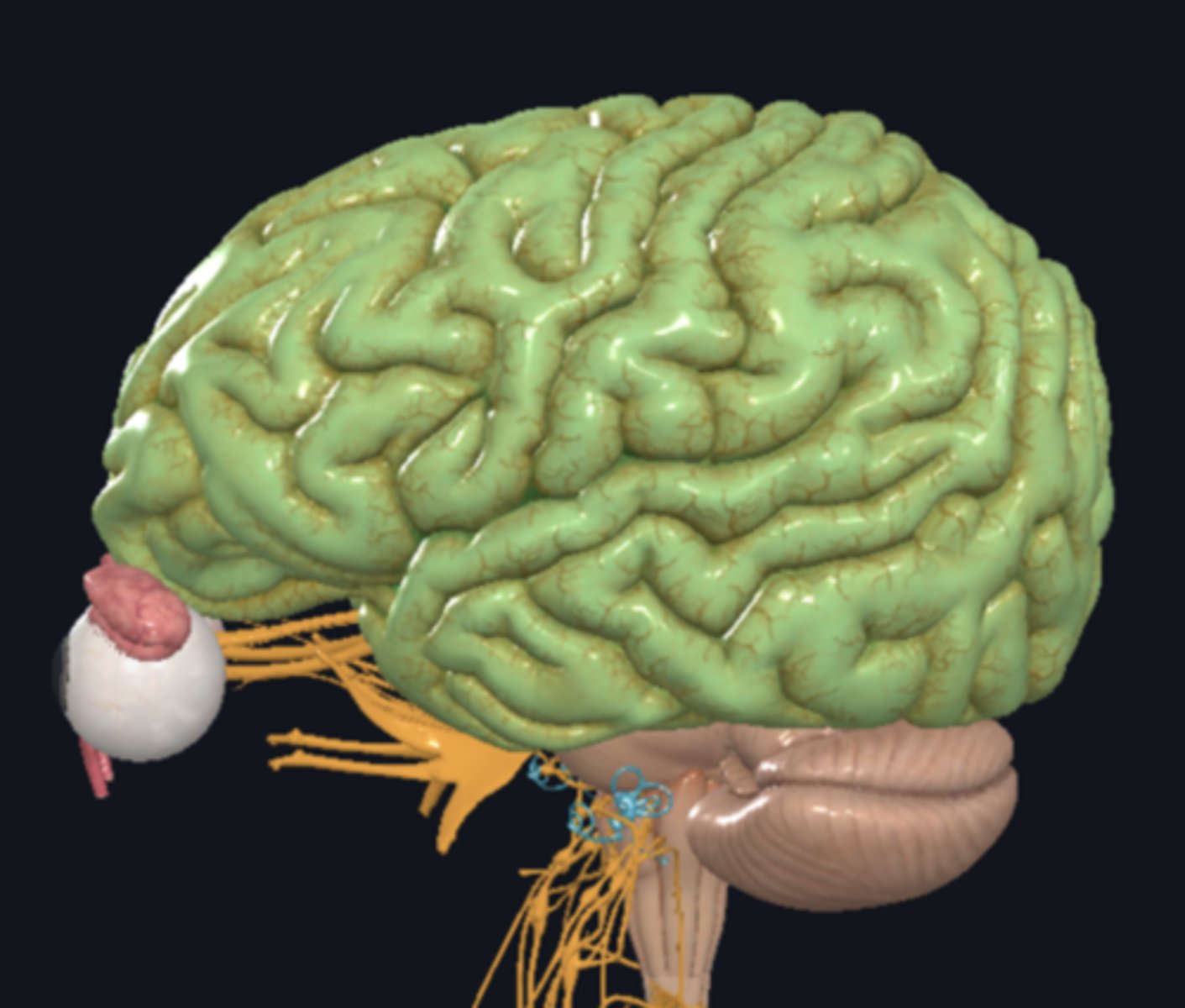
frontal lobe
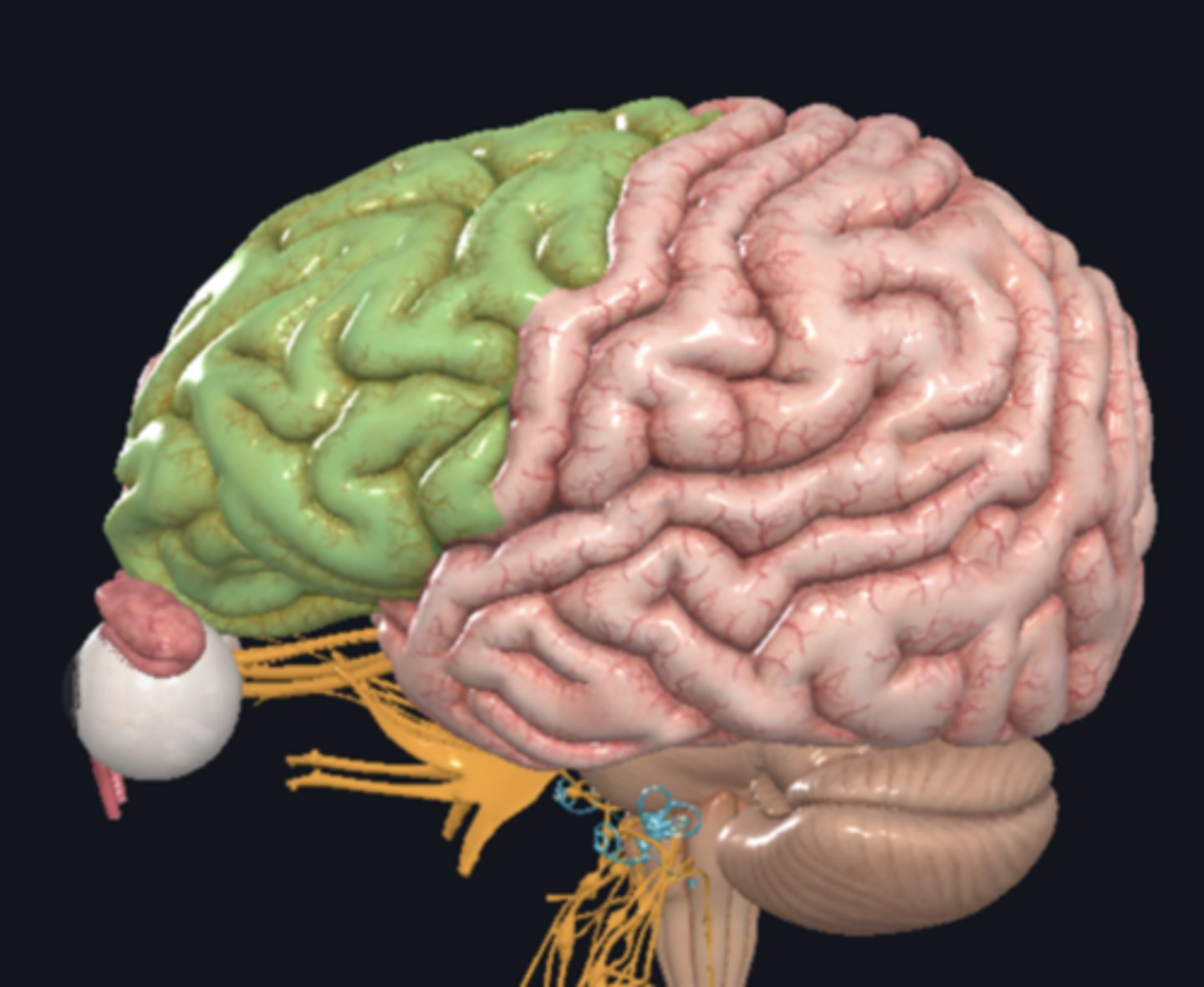
longitudinal sulcus

precentral gyrus
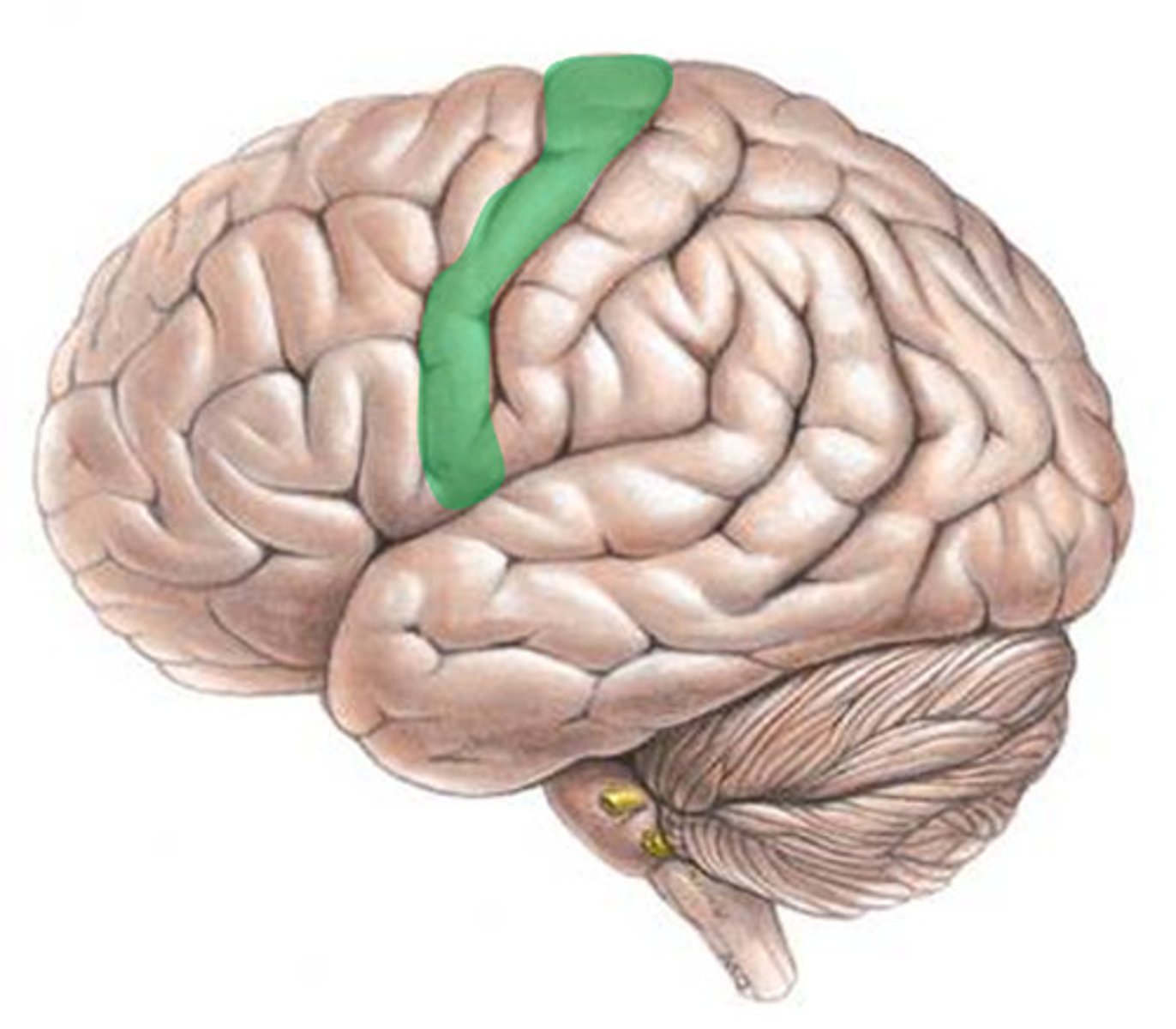
parietal lobe
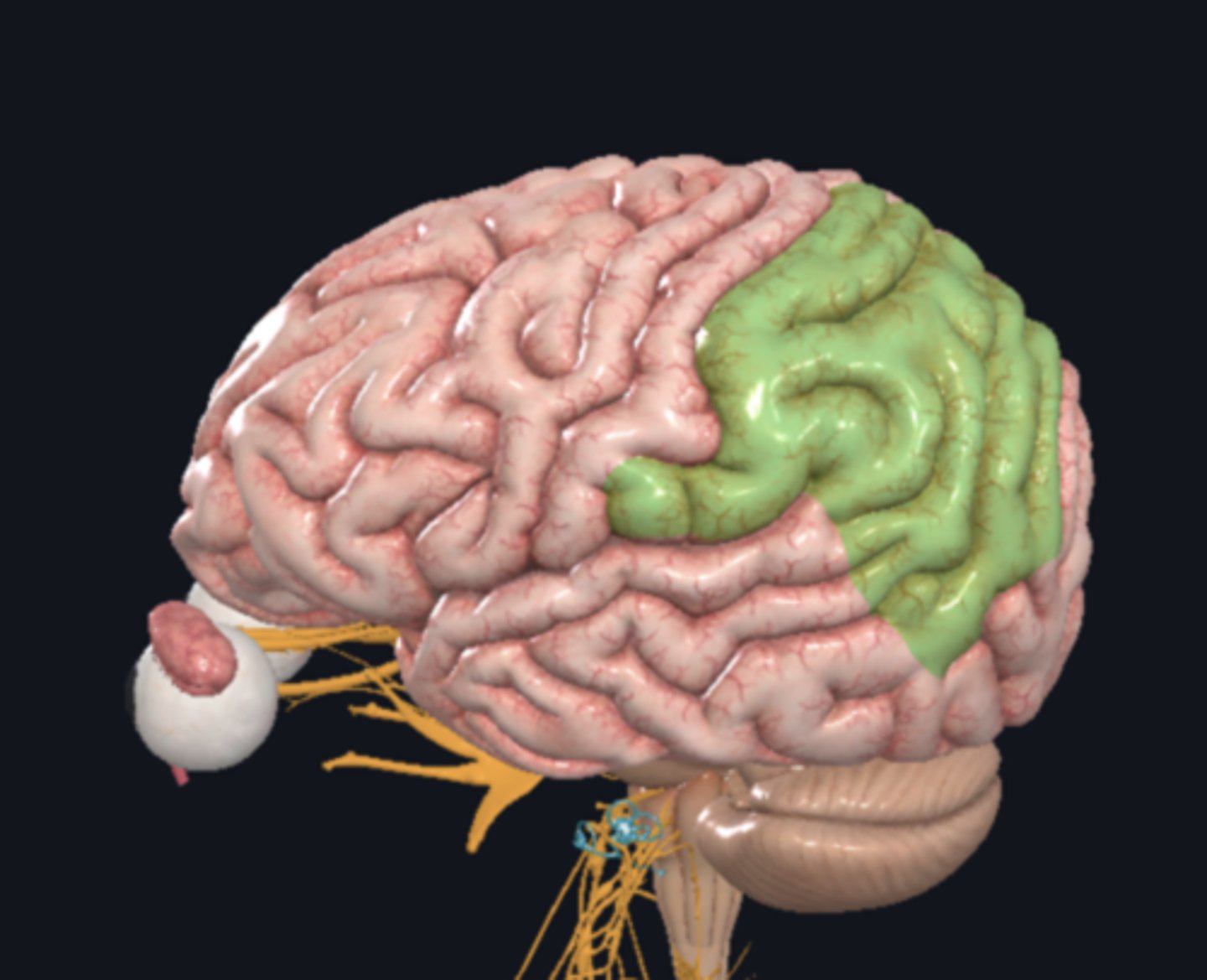
postcentral gyrus
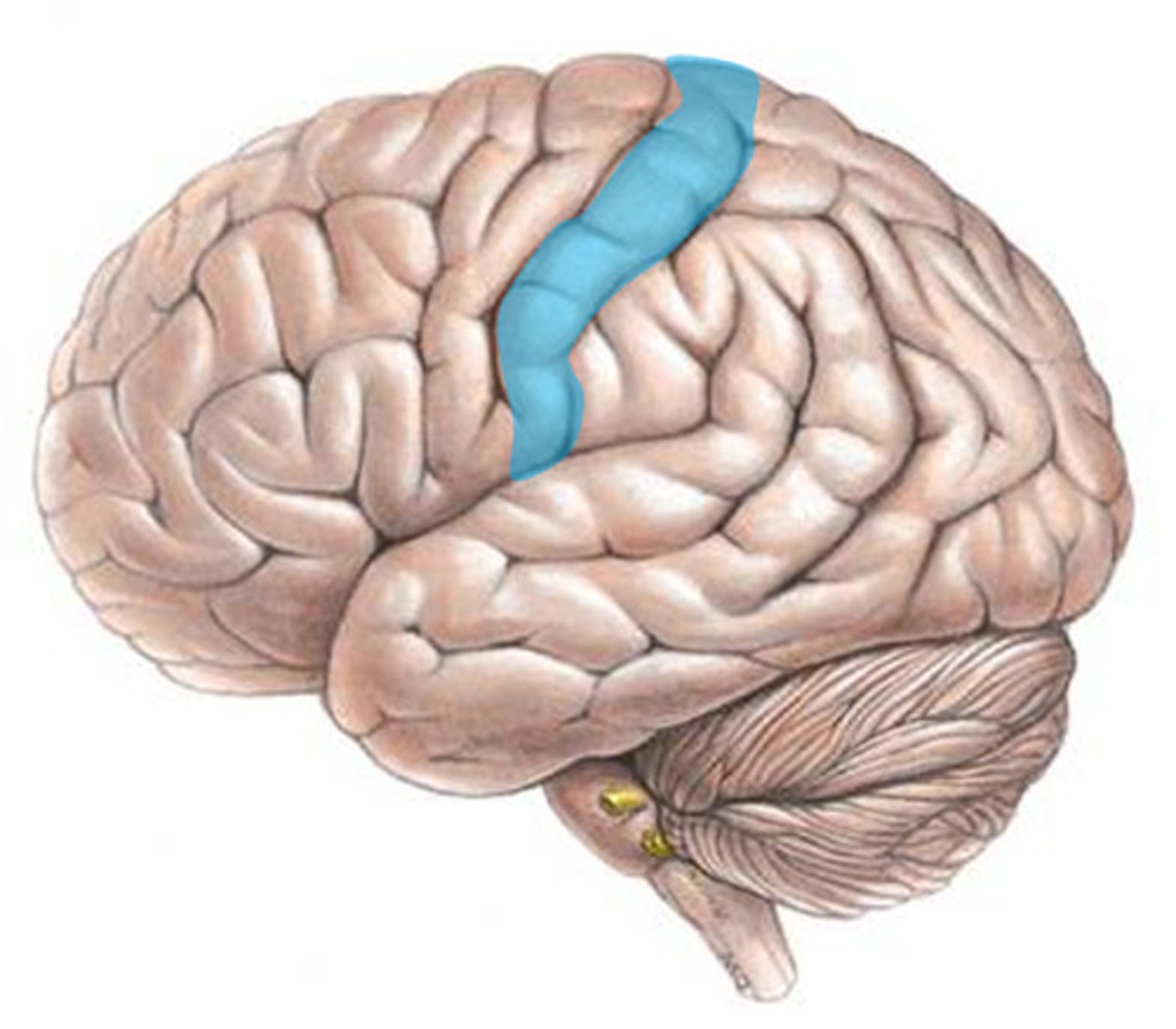
central sulcus
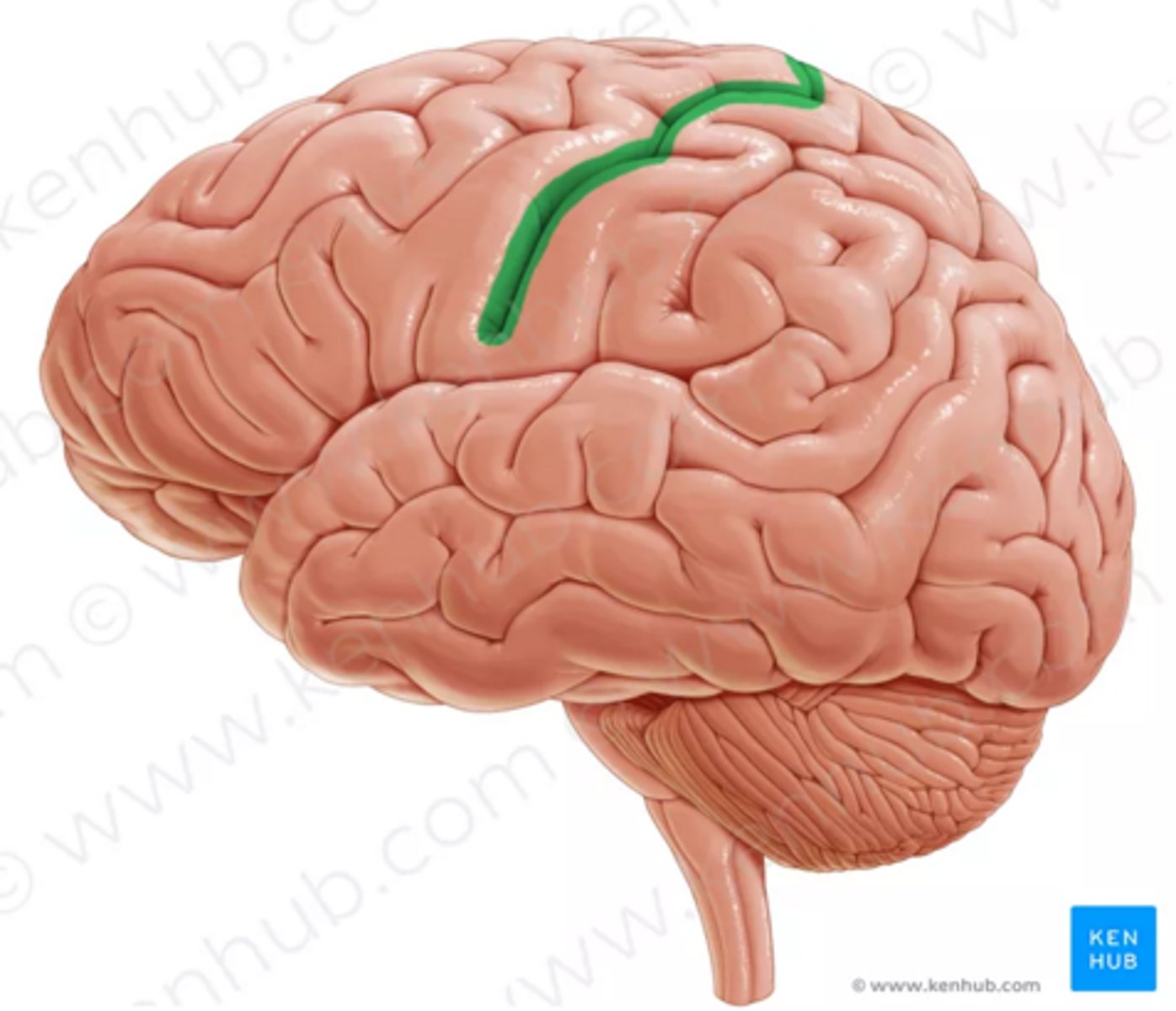
central sulcus
what divides the frontal lobe and parietal lobe?
lateral sulcus
what separates the temporal lobe?
temporal lobe
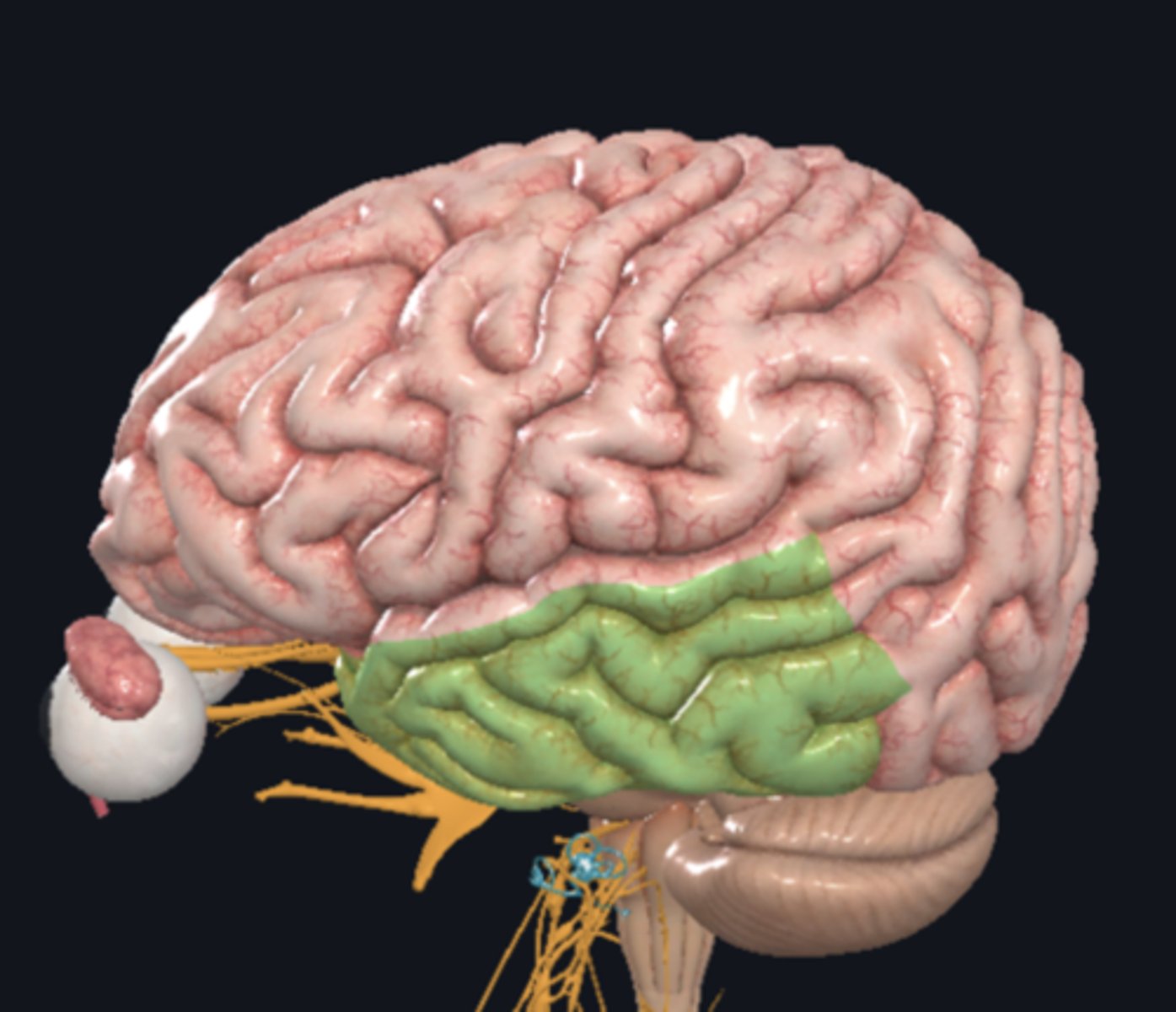
lateral sulcus
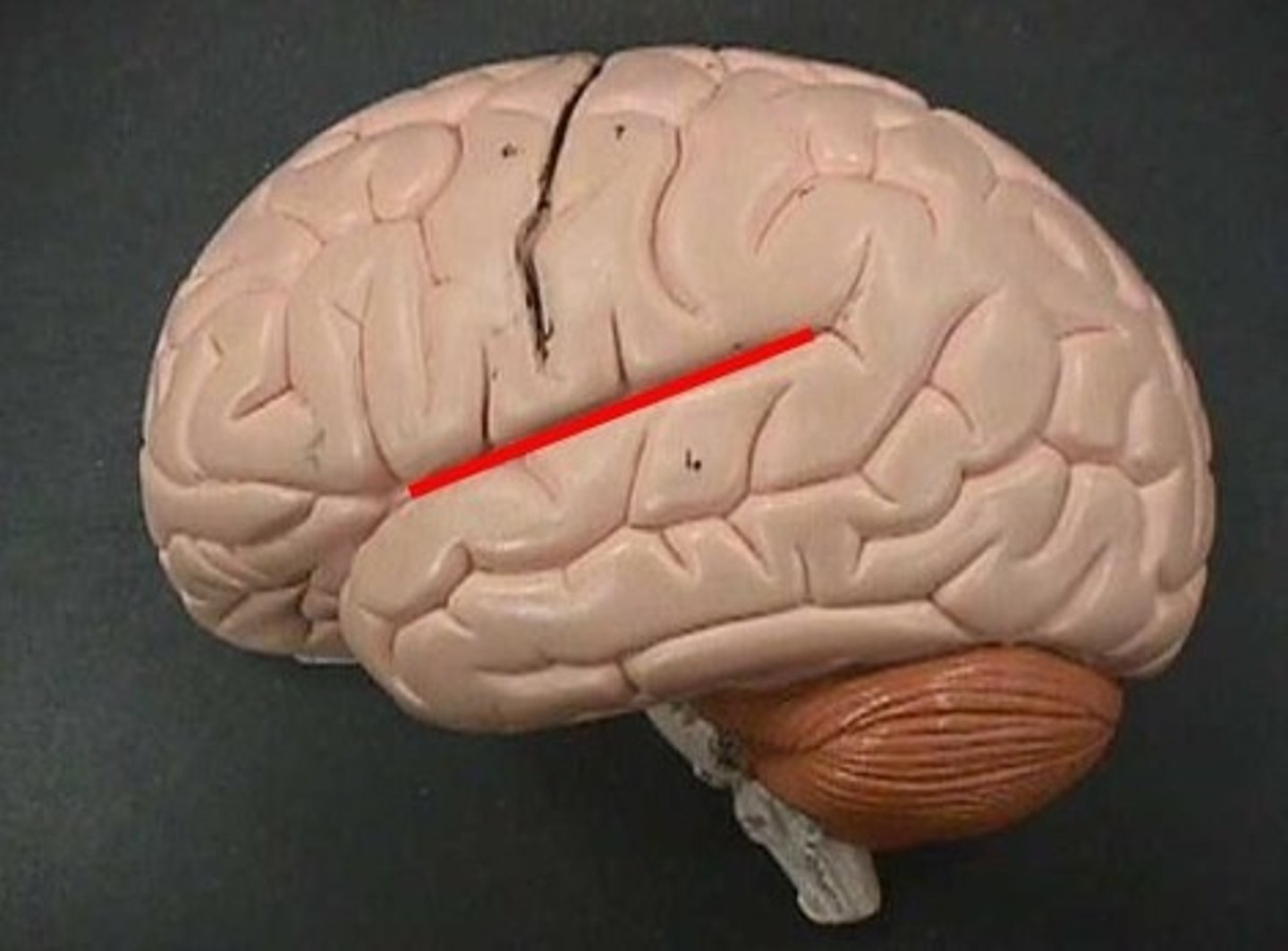
occipital lobe
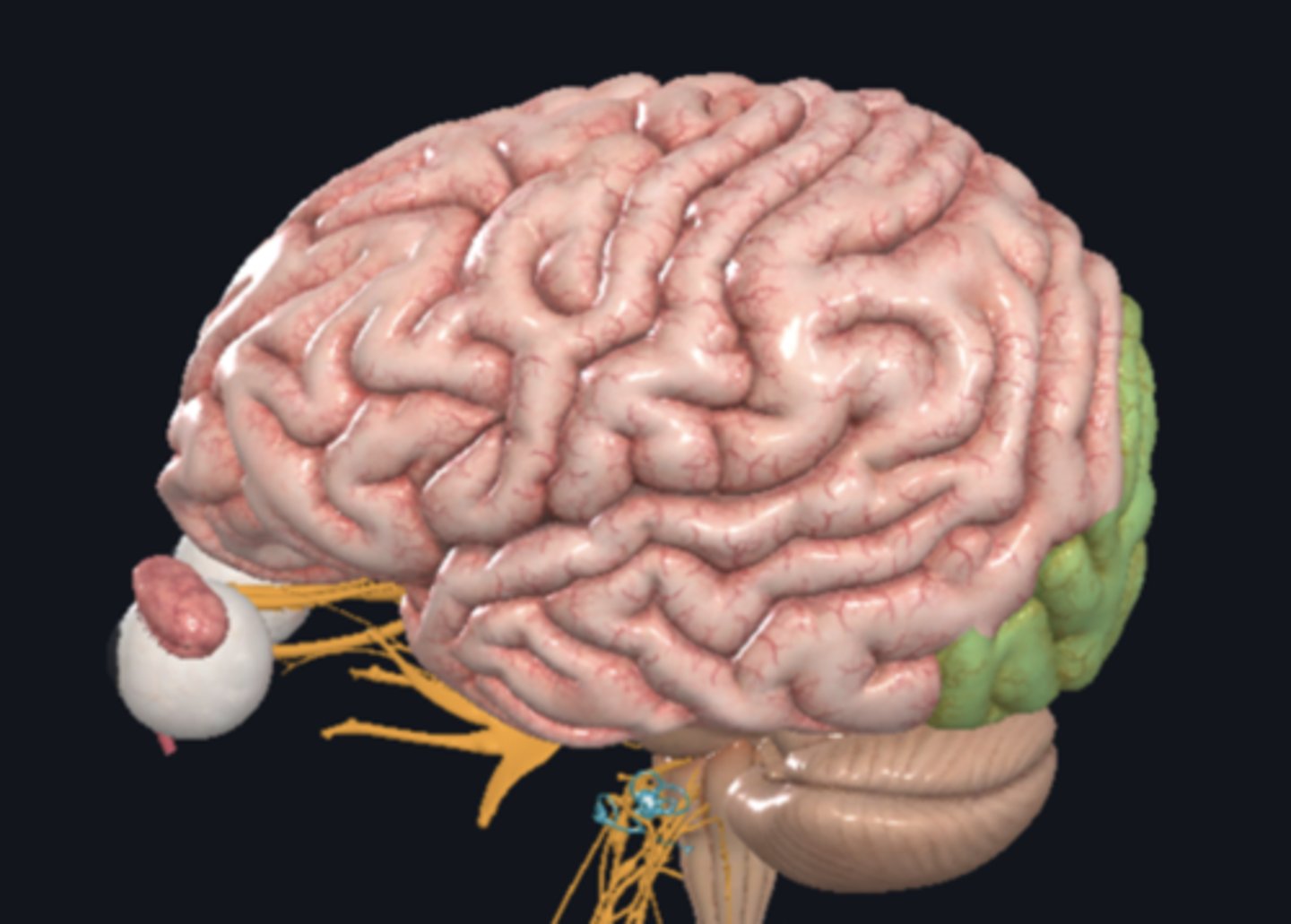
cerebellum
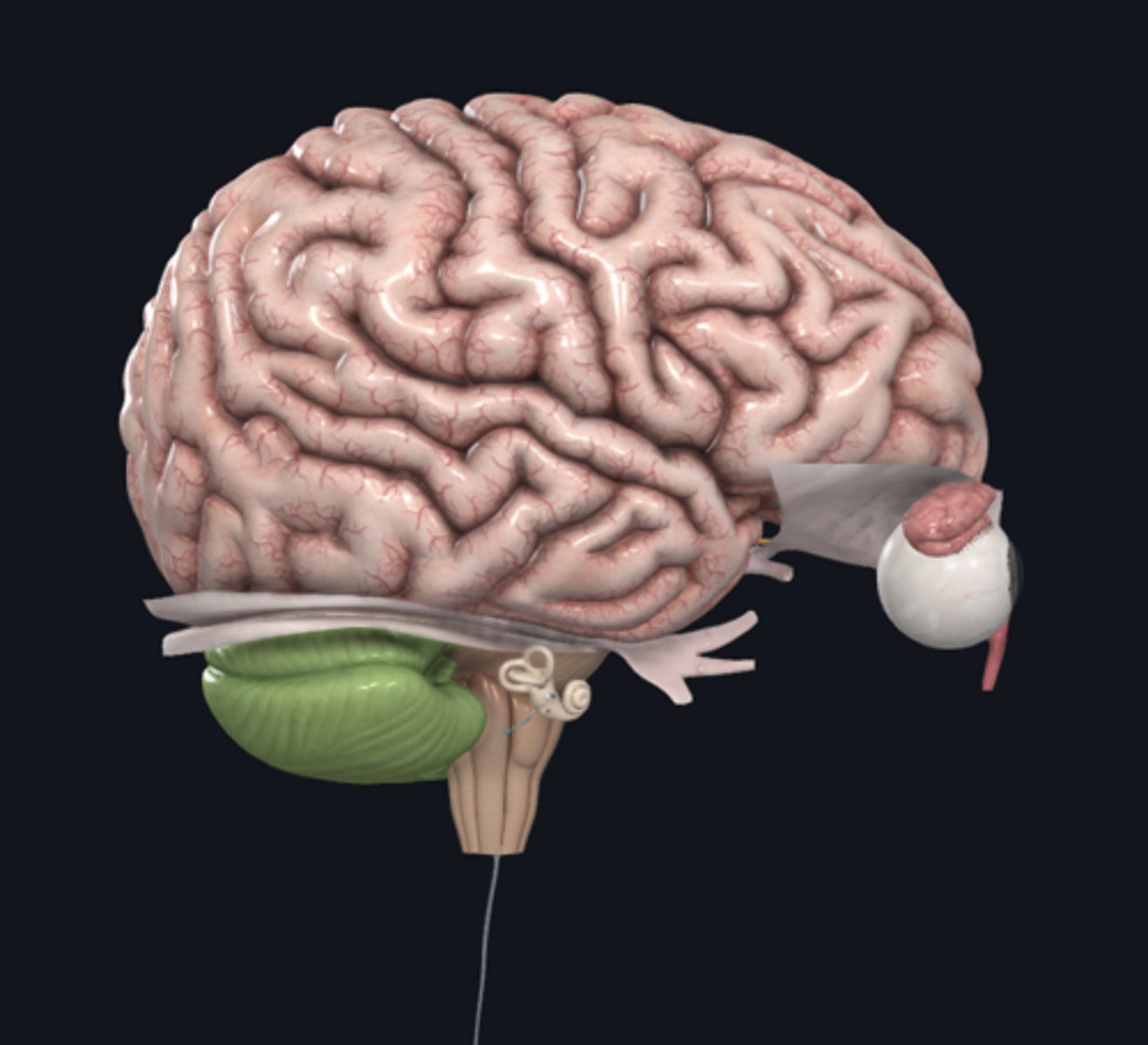
arbor vitae

diencephalon
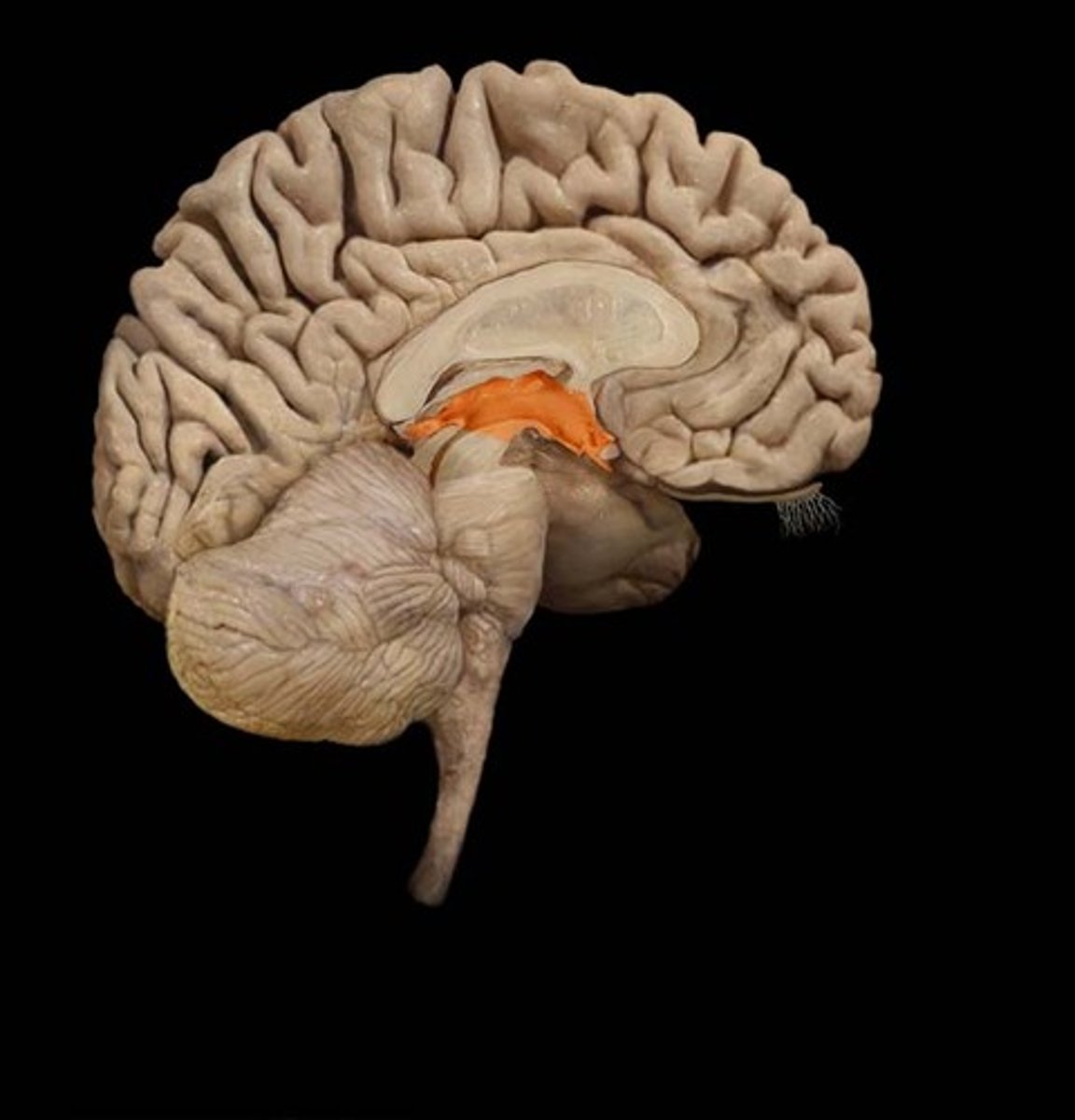
thalamus
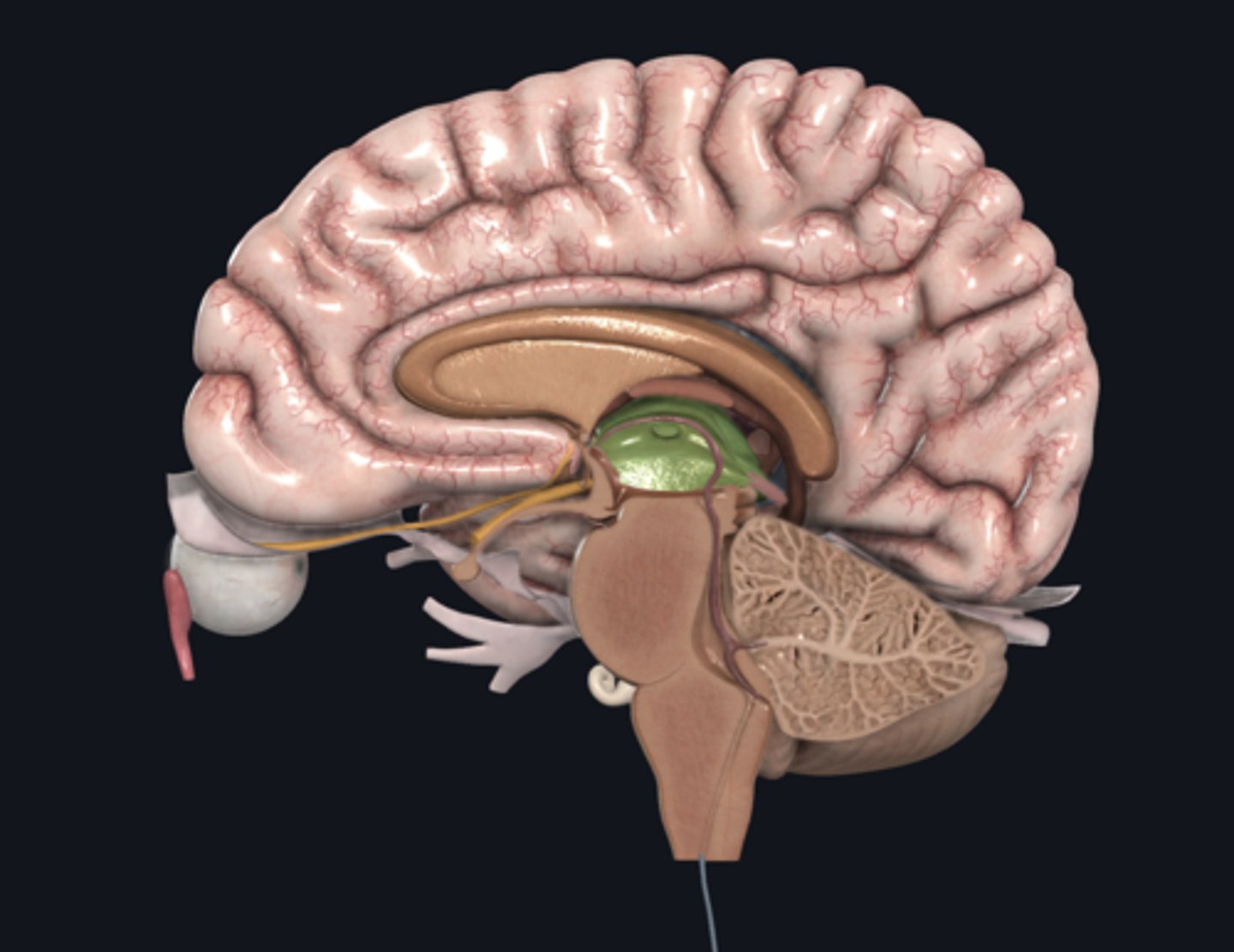
hypothalamus
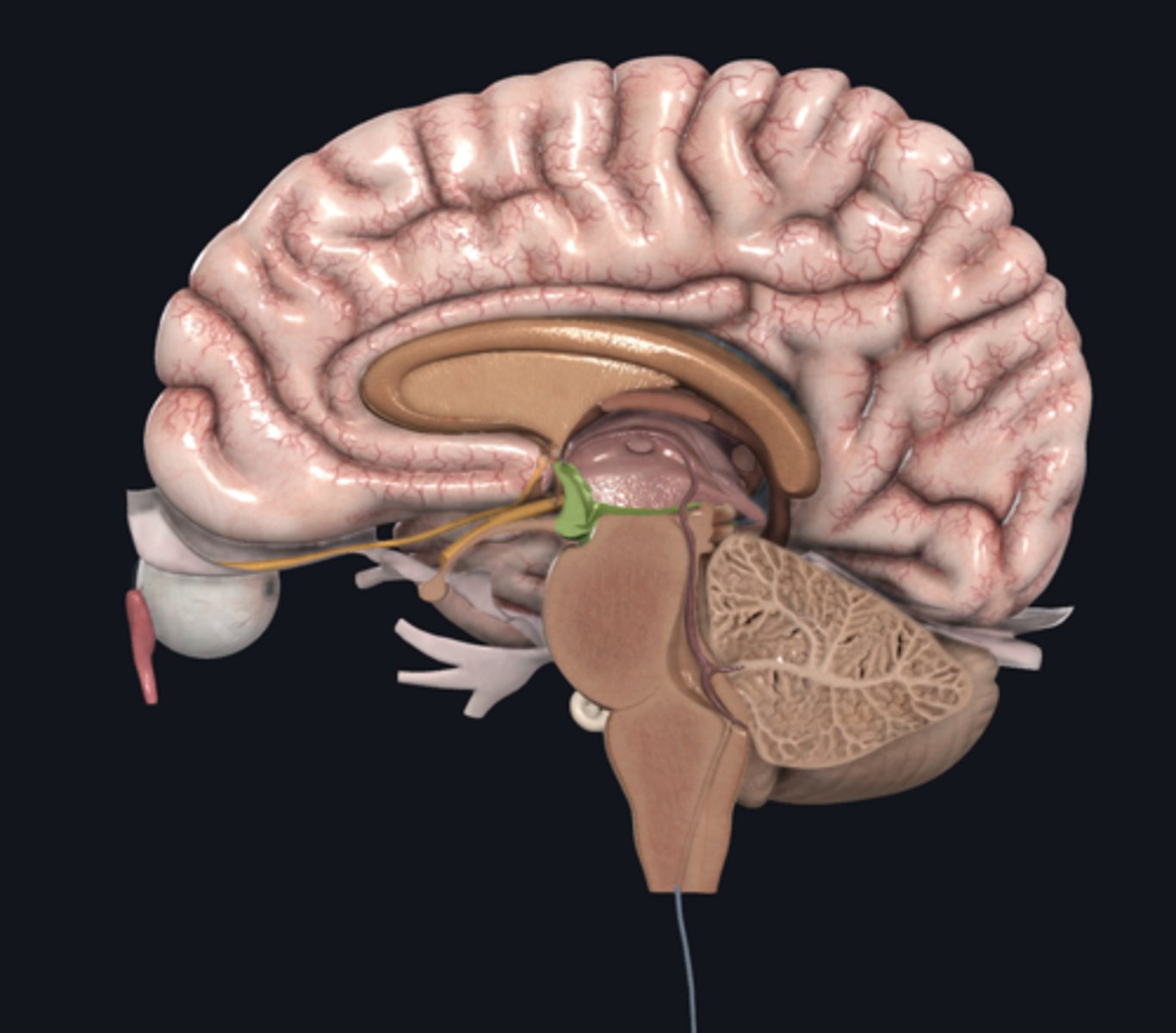
inferior, anterior
the hypothalamus is _____ and _____ to the thalamus
pituitary
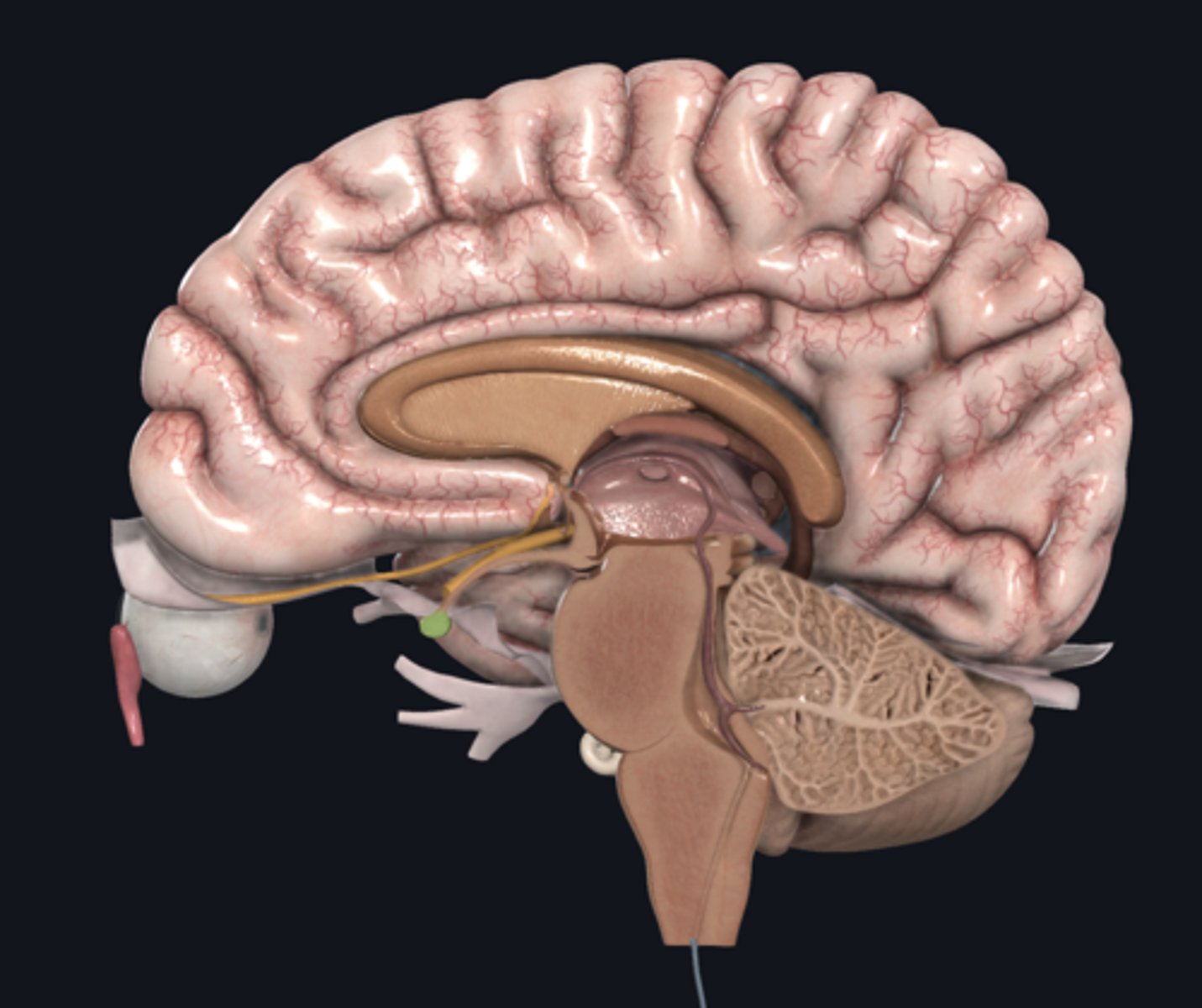
adenohypophysis (anterior pituitary)
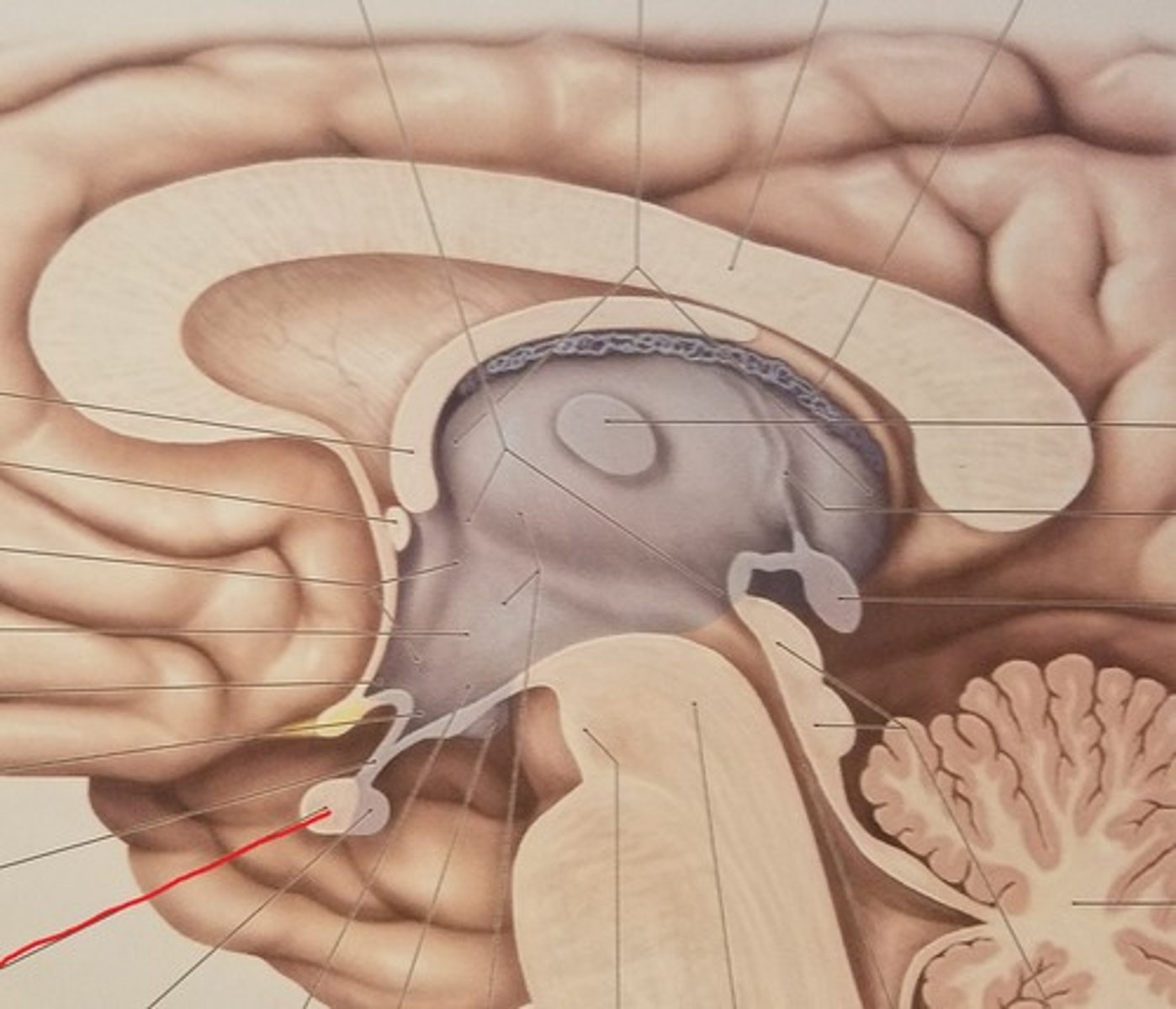
Neurohypophysis (posterior pituitary)
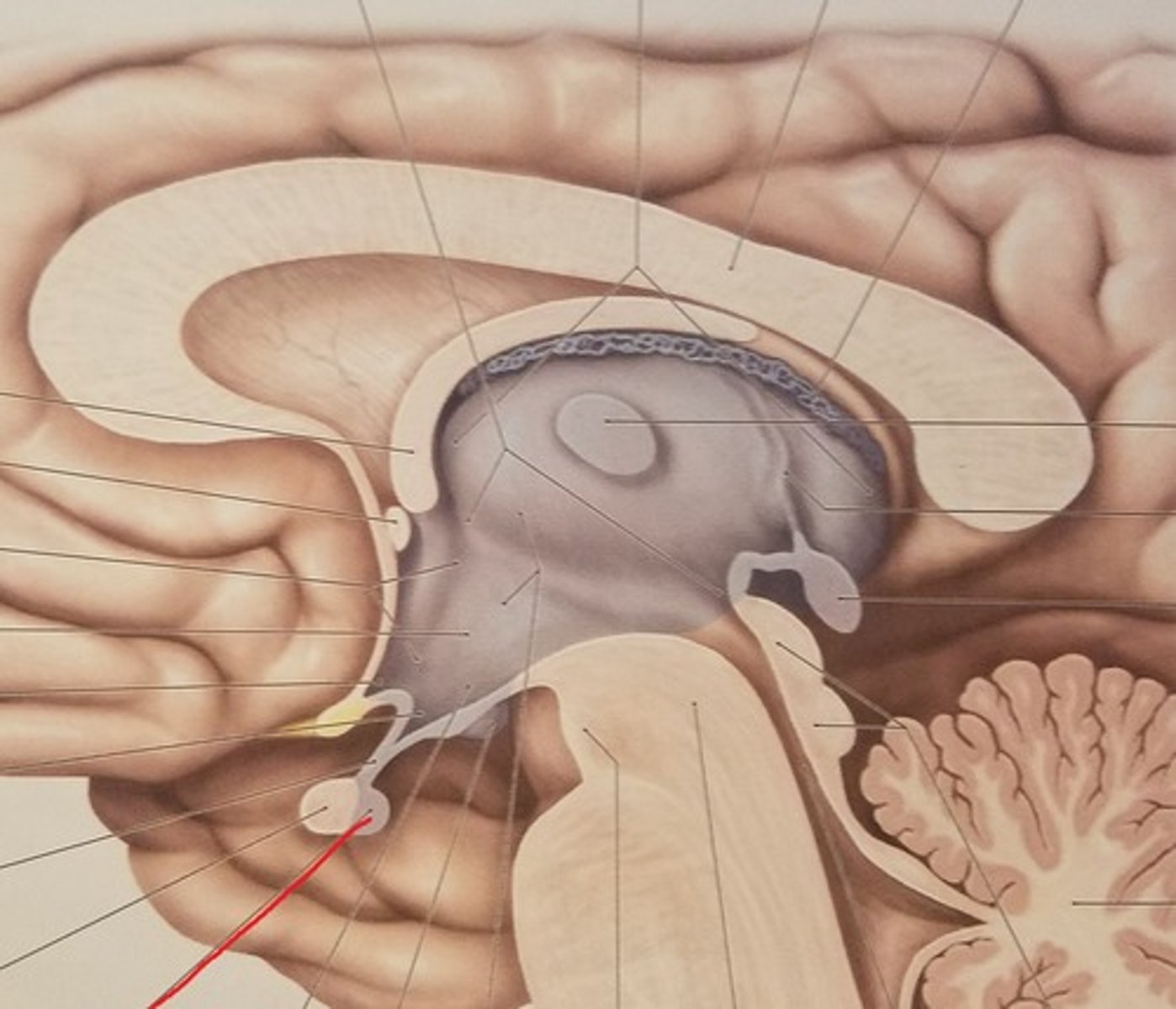
infundibulum
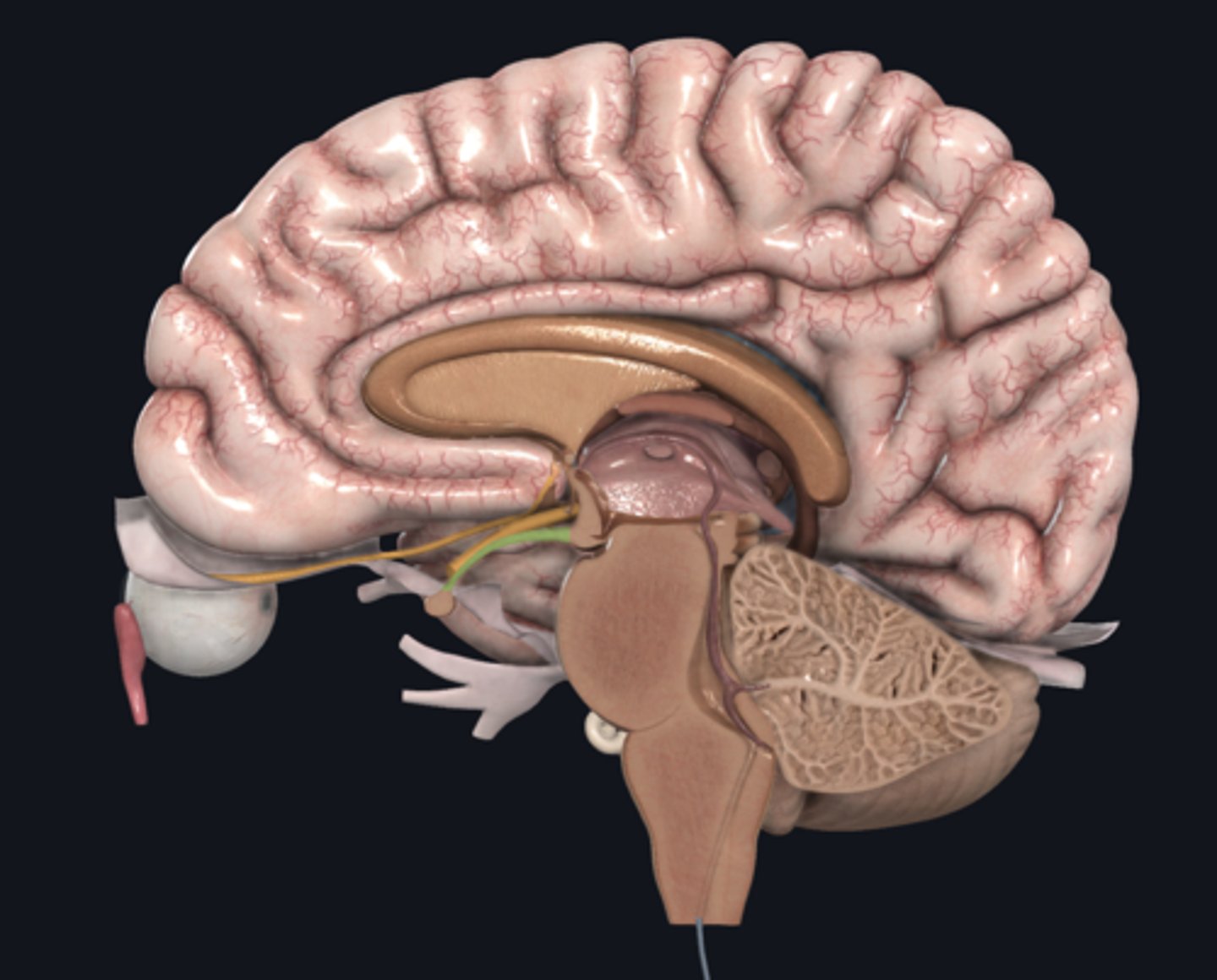
mammillary bodies
name the little green dots lol
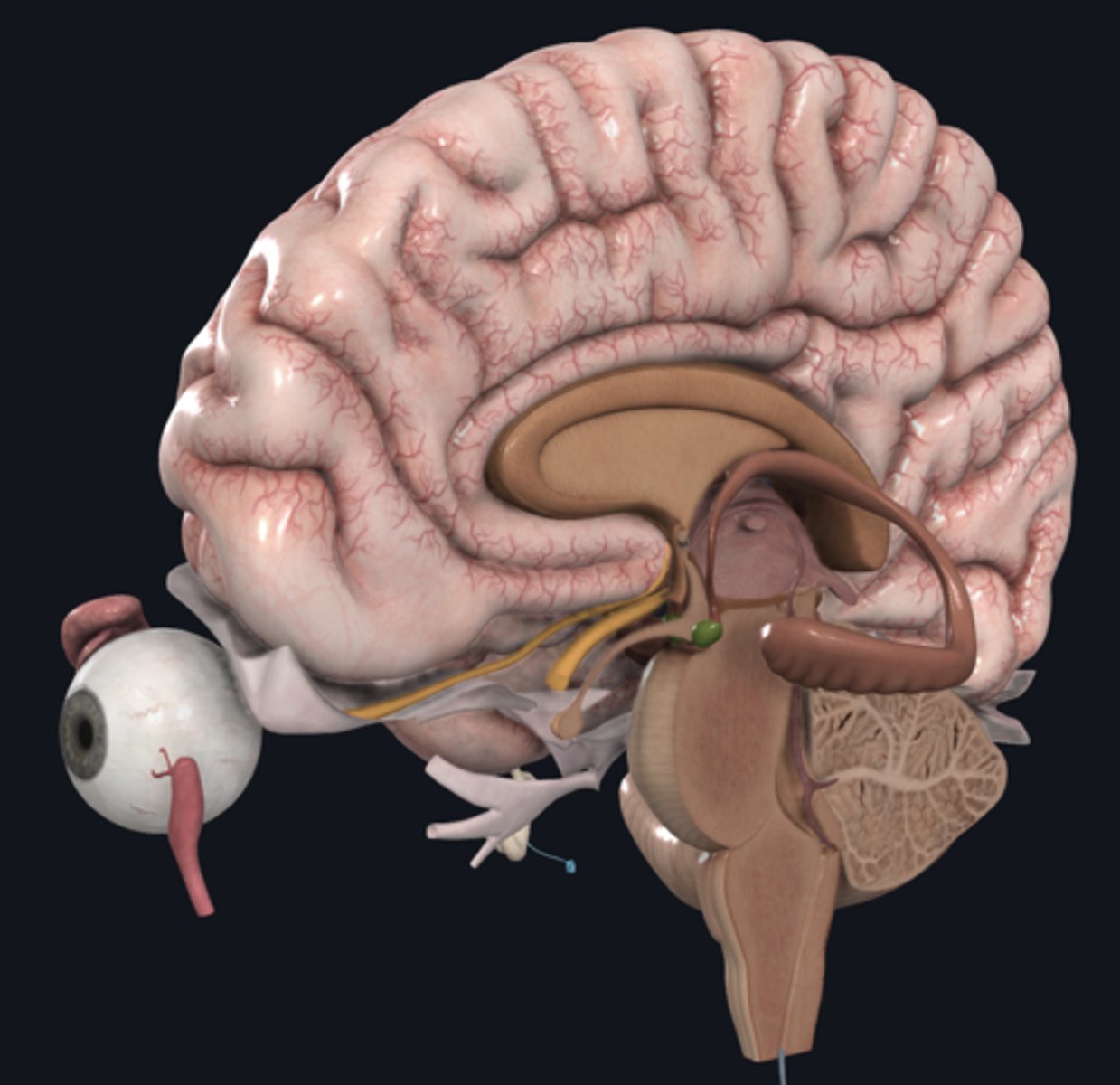
pineal gland
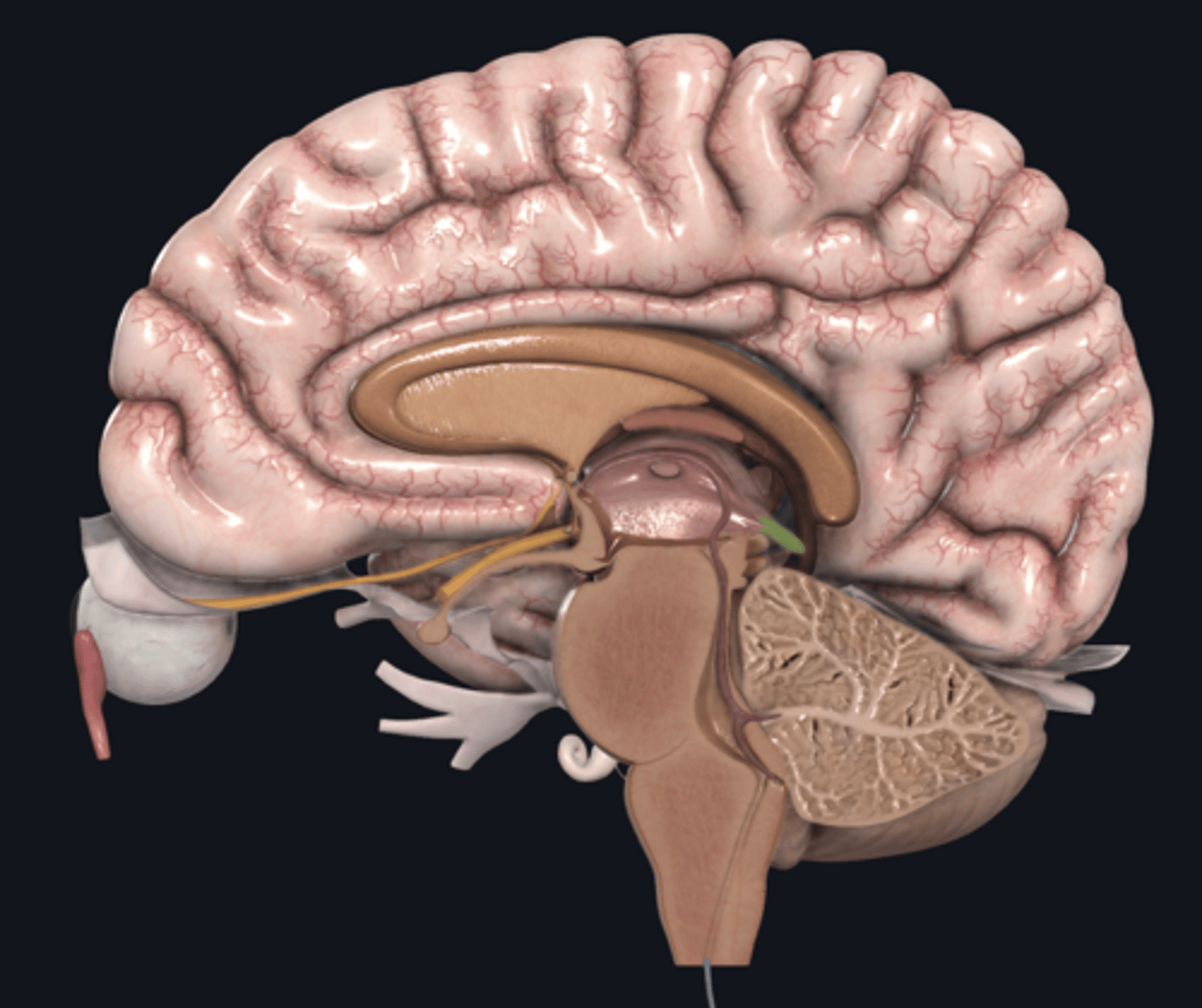
posterior, anterior
the pineal gland is _____ to the thalamus and _____ to the cerebellum
corpus callosum
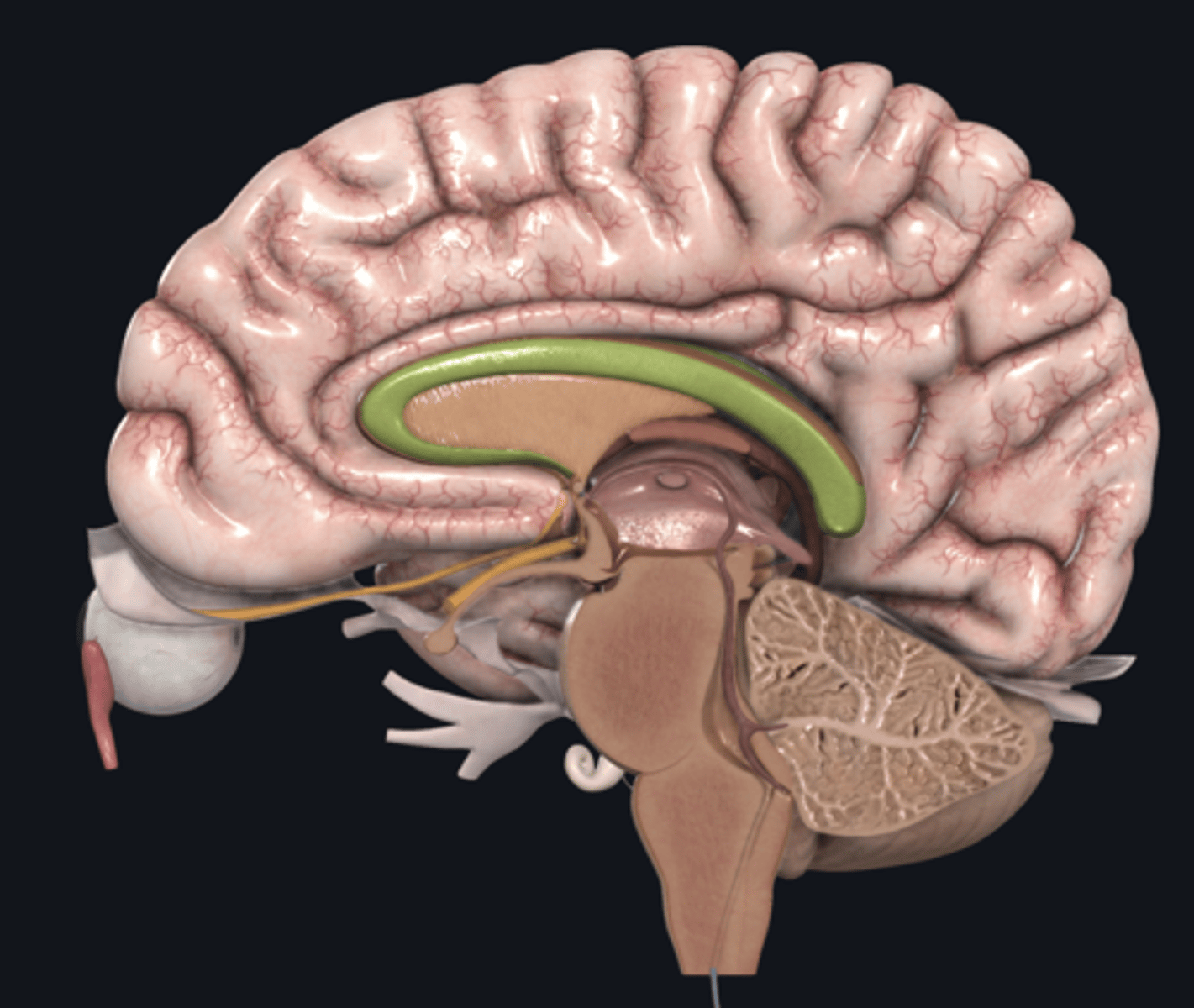
brain stem
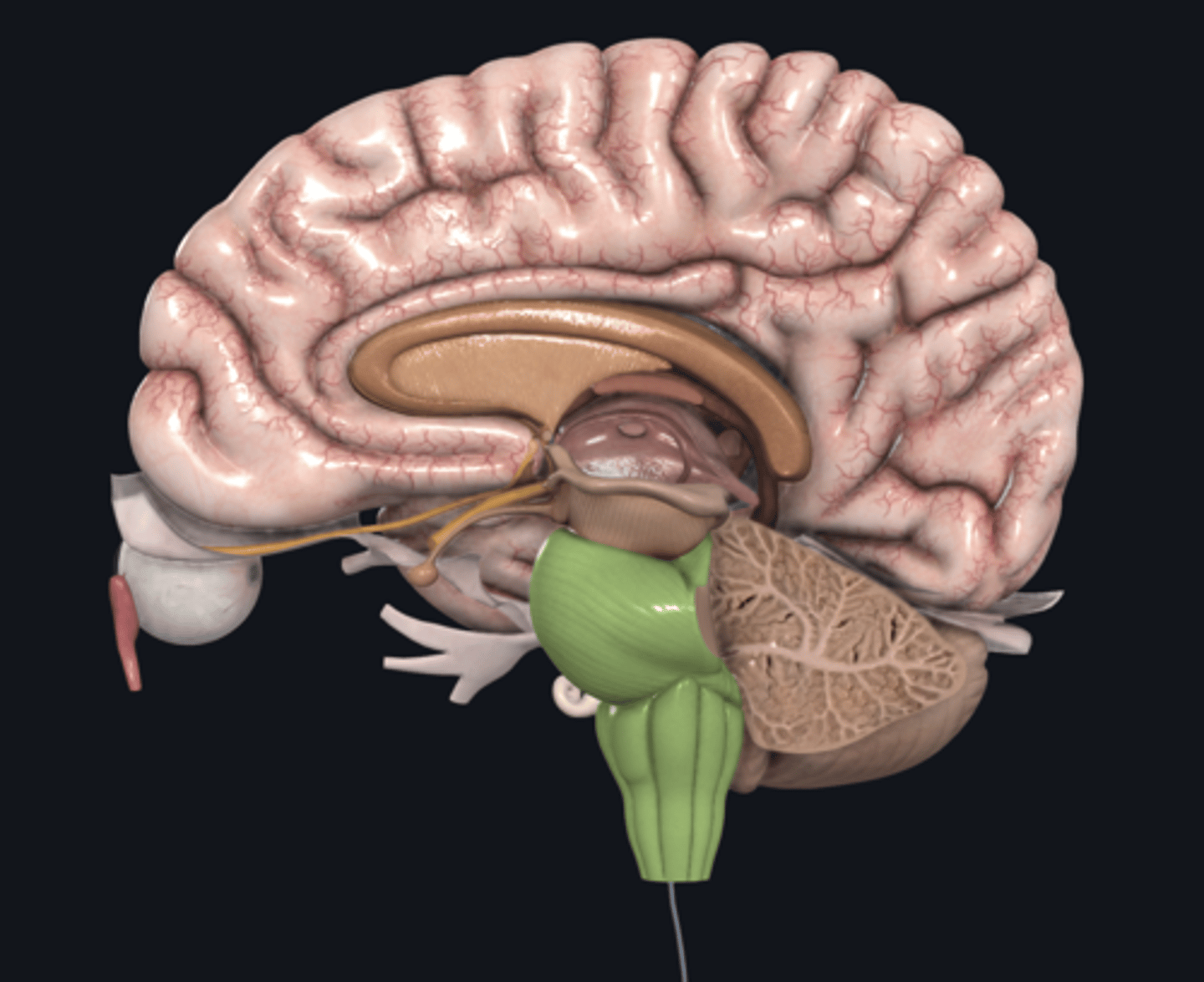
midbrain
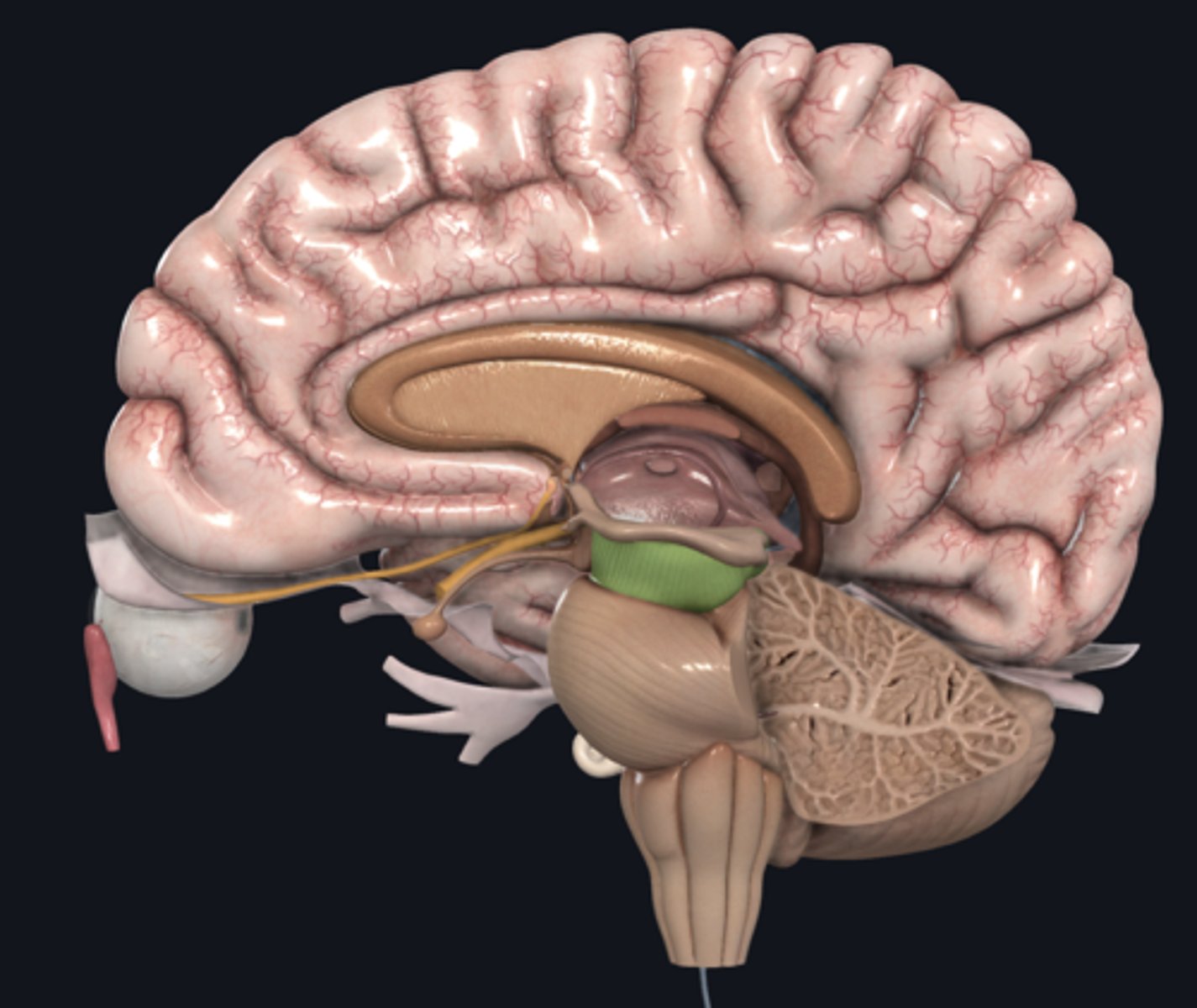
cerebellar peduncle
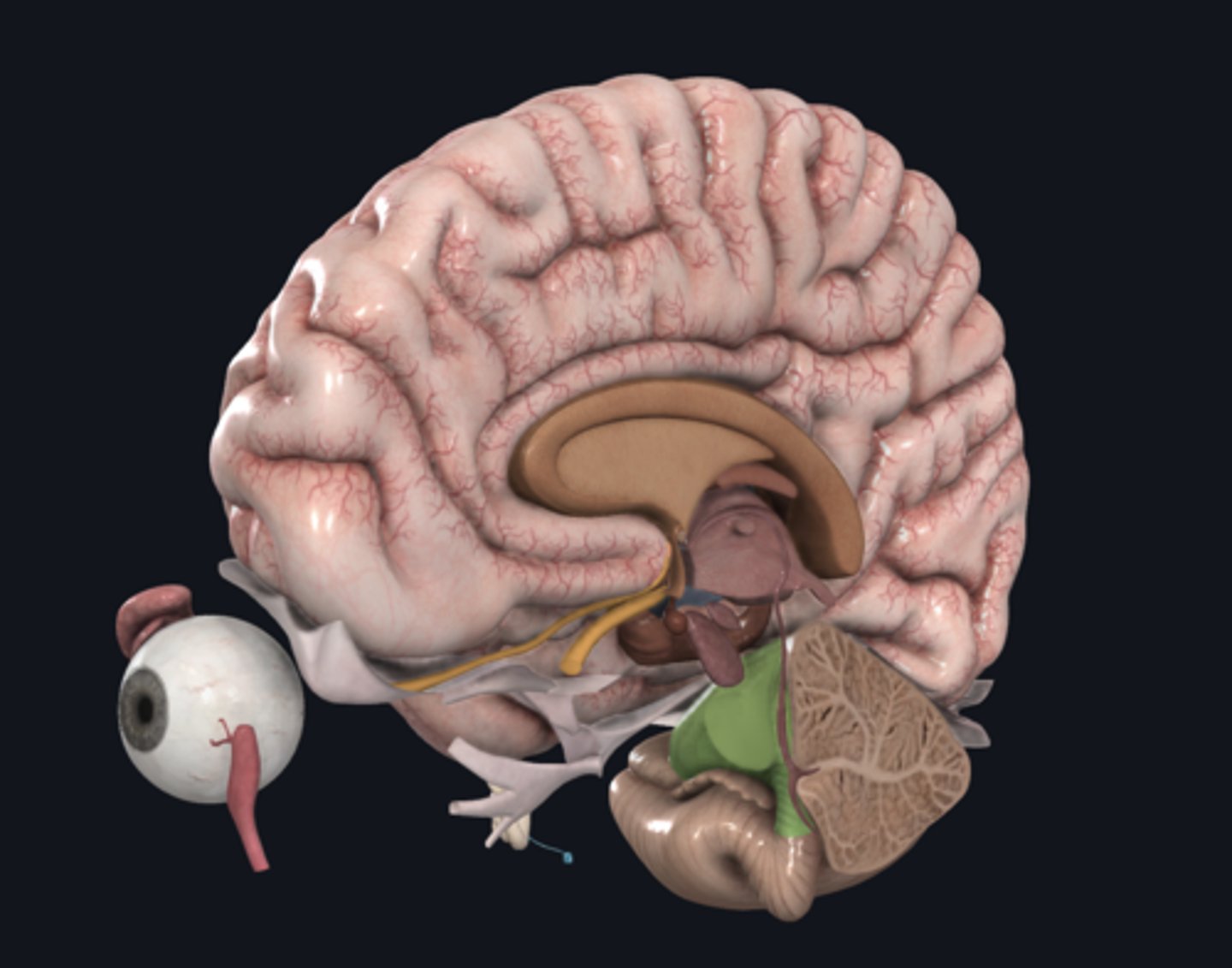
pons

medulla oblongata
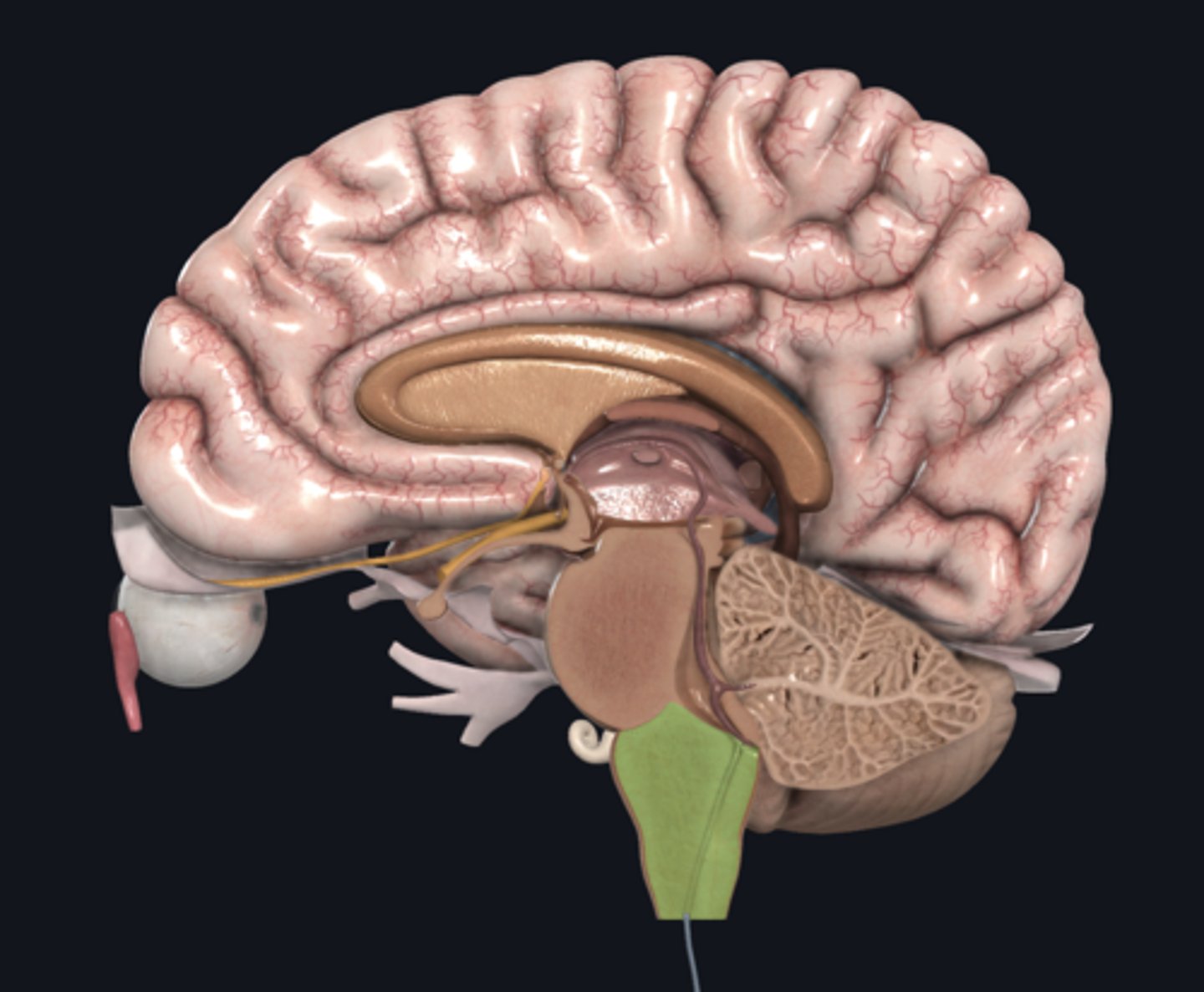
olfactory nerve (1st cranial nerve)
- 1st cranial nerve
- smell
- sensory
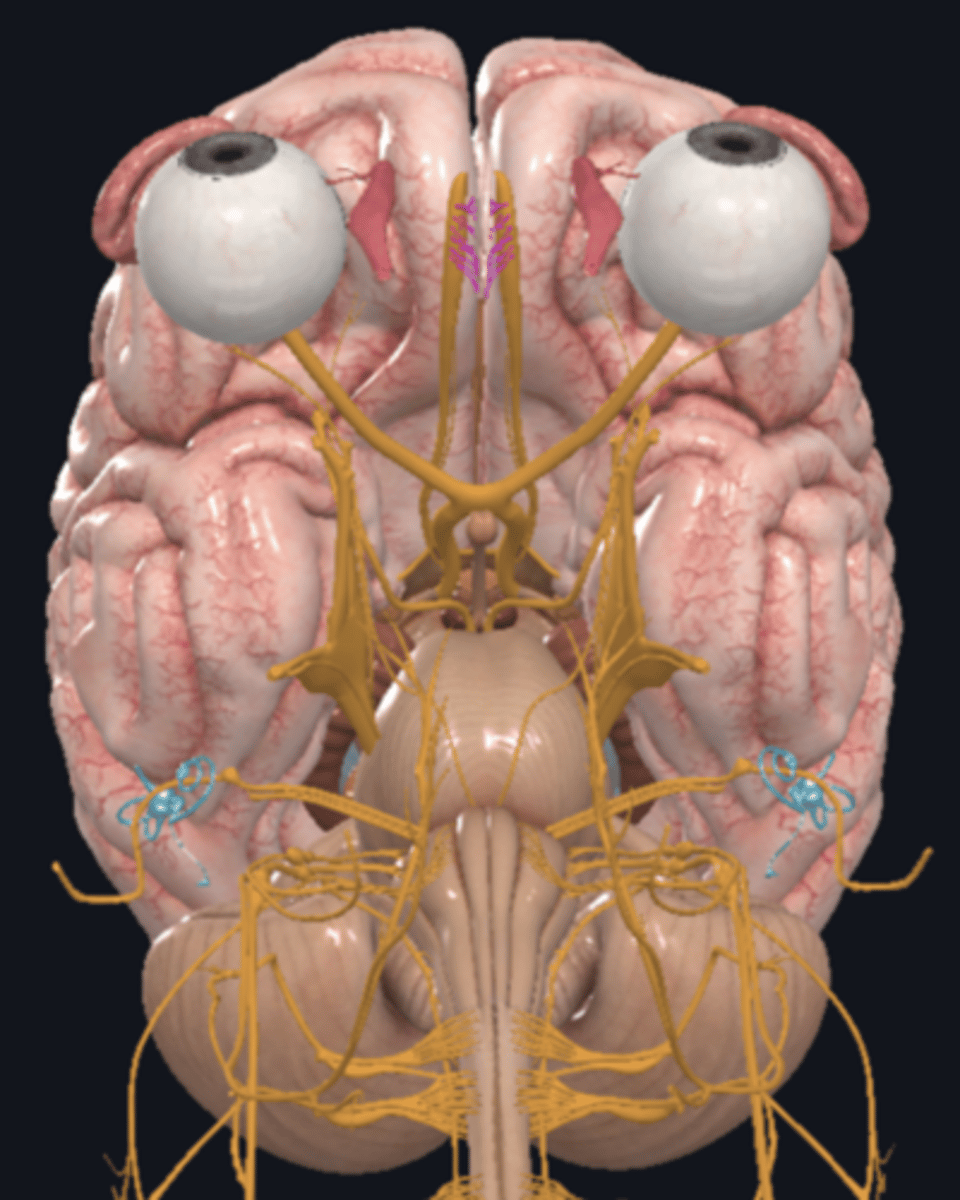
olfactory bulb
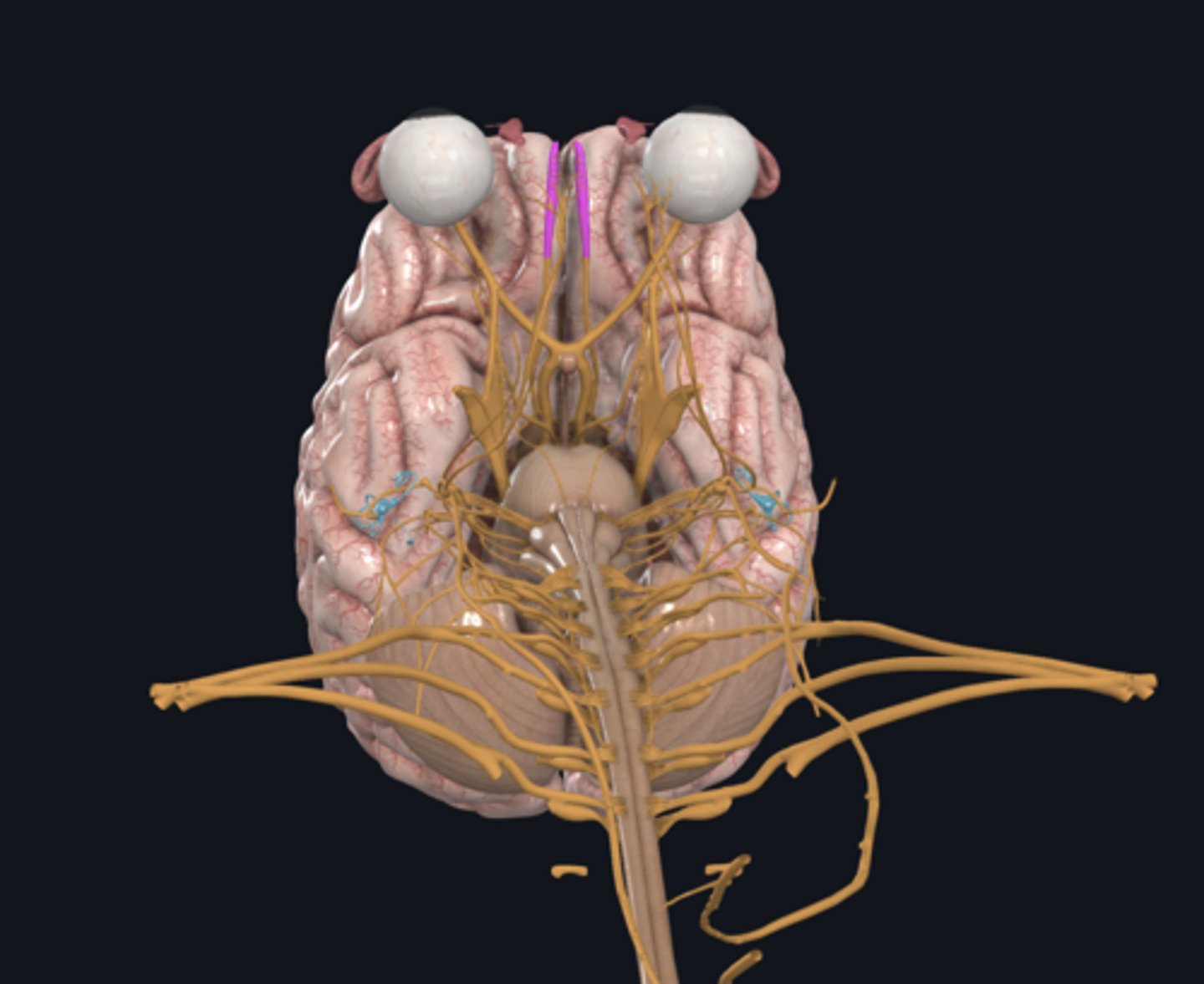
optic nerve (2nd cranial nerve)
- 2nd cranial nerve
- visual acuity
- sensory
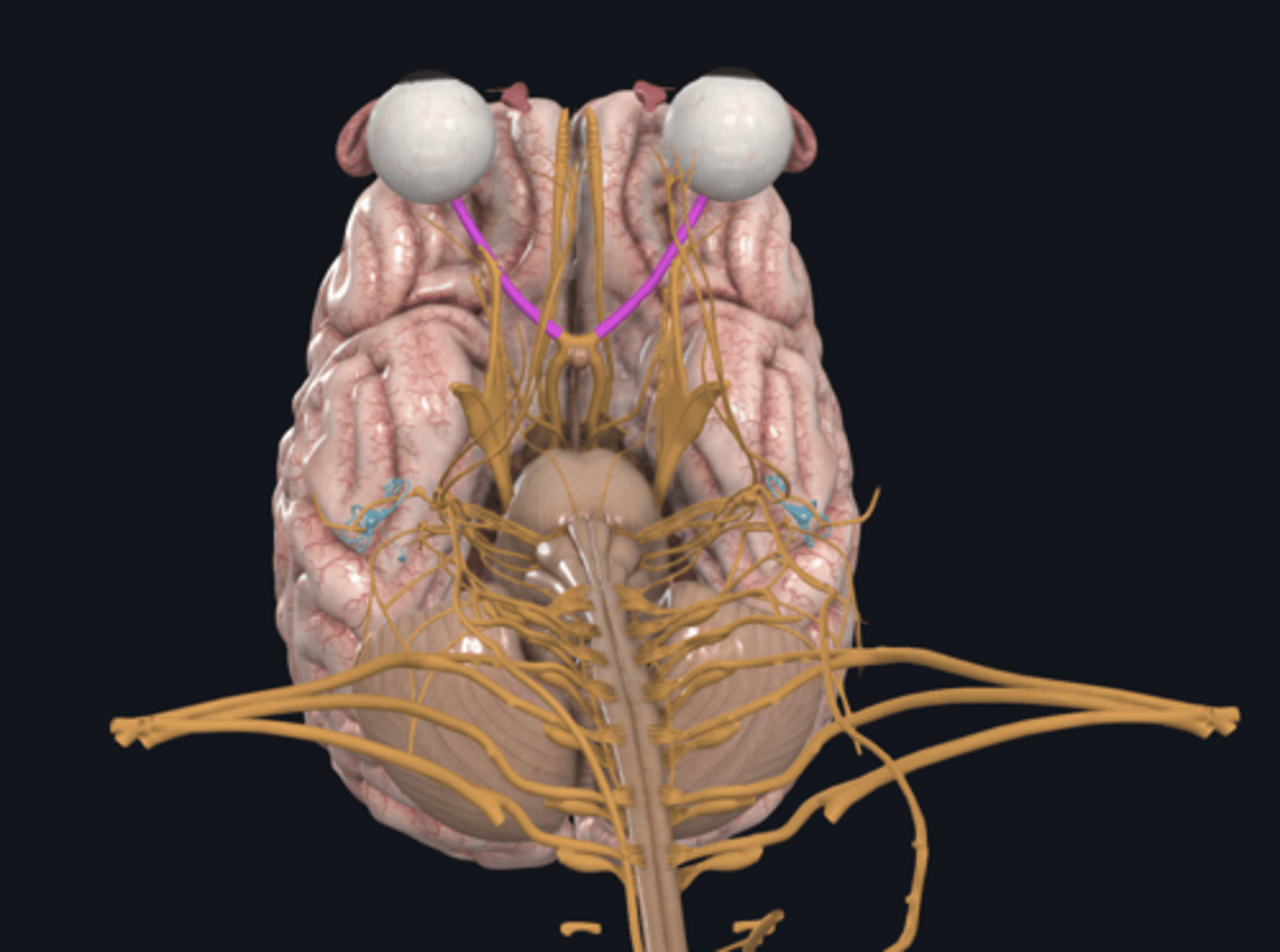
optic chiasm
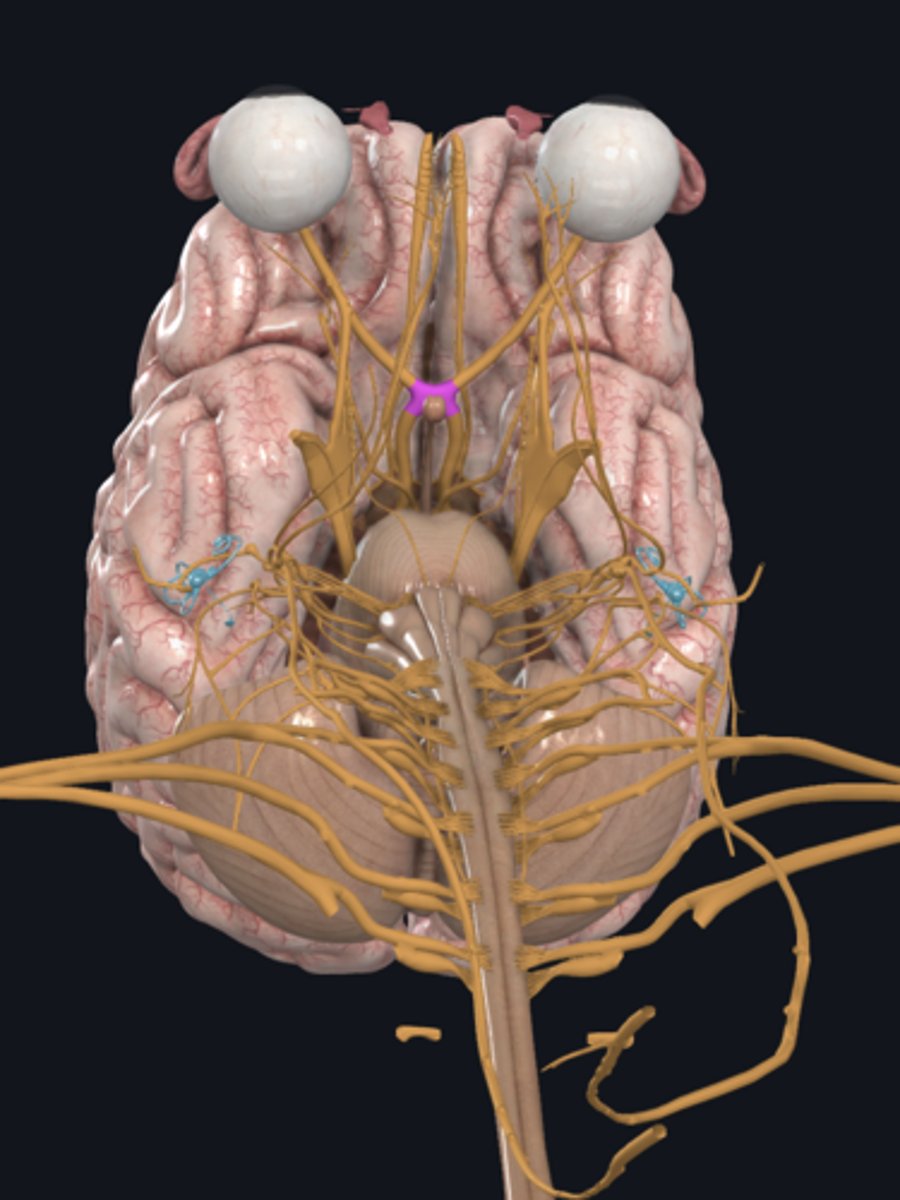
oculomotor nerve (3rd cranial nerve)
- 3rd cranial nerve
- opening of eyelids, eye movement
- motor
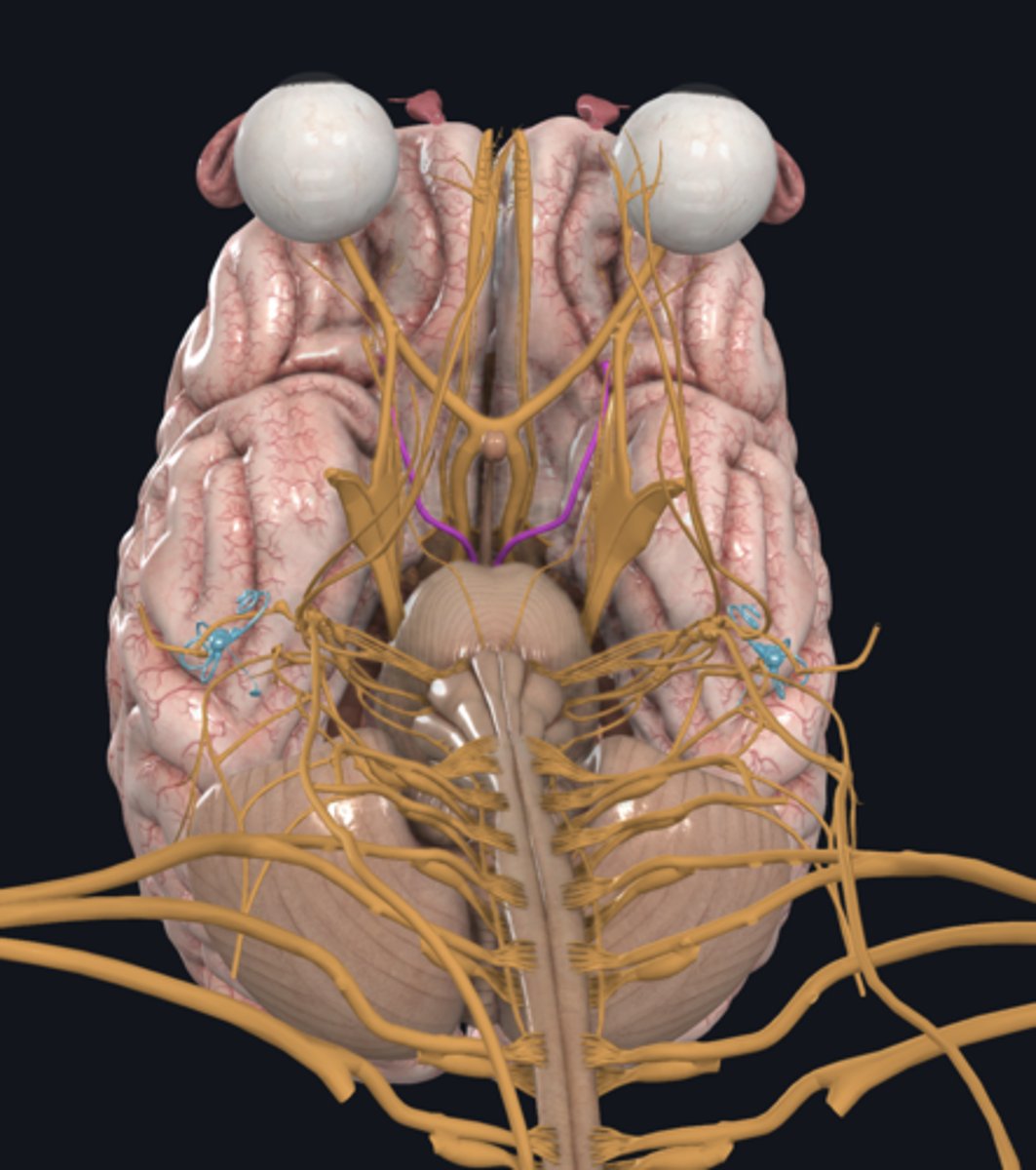
trochlear nerve (4th cranial nerve)
- 4th cranial nerve
- controls superior oblique muscle of the eye
- motor
trigeminal nerve (5th cranial nerve)
- 5th cranial nerve
- facial sensation, chewing motions
- sensory and motor
ophthalmic branch (trigeminal nerve)
- 5a
- senses forehead
- sensory
maxillary branch
- 5b
- senses upper jaw/cheek
- sensory
mandibular branch
- 5c
- senses chin and moves muscles of mastication
- sensory and motor
abducens nerve (6th cranial nerve)
- 6th cranial nerve
- moves eyes laterally
- motor
facial nerve (7th facial nerve)
- 7th cranial nerve
- moves muscles of the face; senses front taste buds of the tongue
- sensory and motor
vestibulocochlear nerve (aka auditory; 8th cranial nerve)
- 8th cranial nerve
- balance and hearing
- sensory
glossopharyngeal nerve (9th cranial nerve)
- 9th cranial nerve
- salivary gland, swallowing, gag reflex, taste at the back of the tongue
- sensory and motor
vagus nerve (10th cranial nerve)
- 10th cranial nerve
- senses taste for roof of mouth, controls parasympathetic organs
- sensory and motor
accessory nerve (11th cranial nerve)
- 11th cranial nerve
- shrugs shoulders
- motor
hypoglossal nerve (12th cranial nerve)
- 12th cranial nerve
- movement of the tongue
- motor
circle of Willis
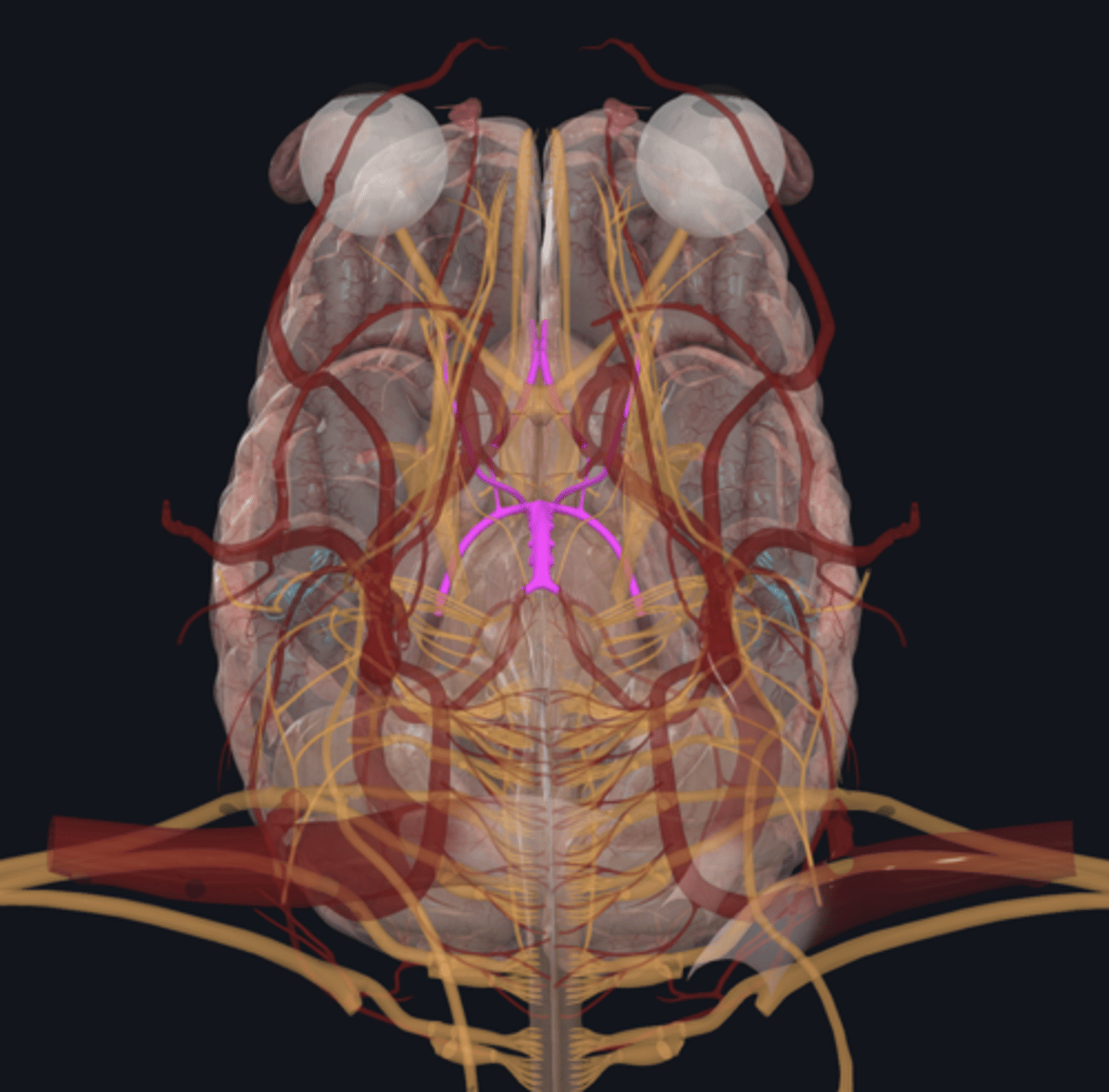
common carotid artery

internal carotid artery

middle cerebral artery
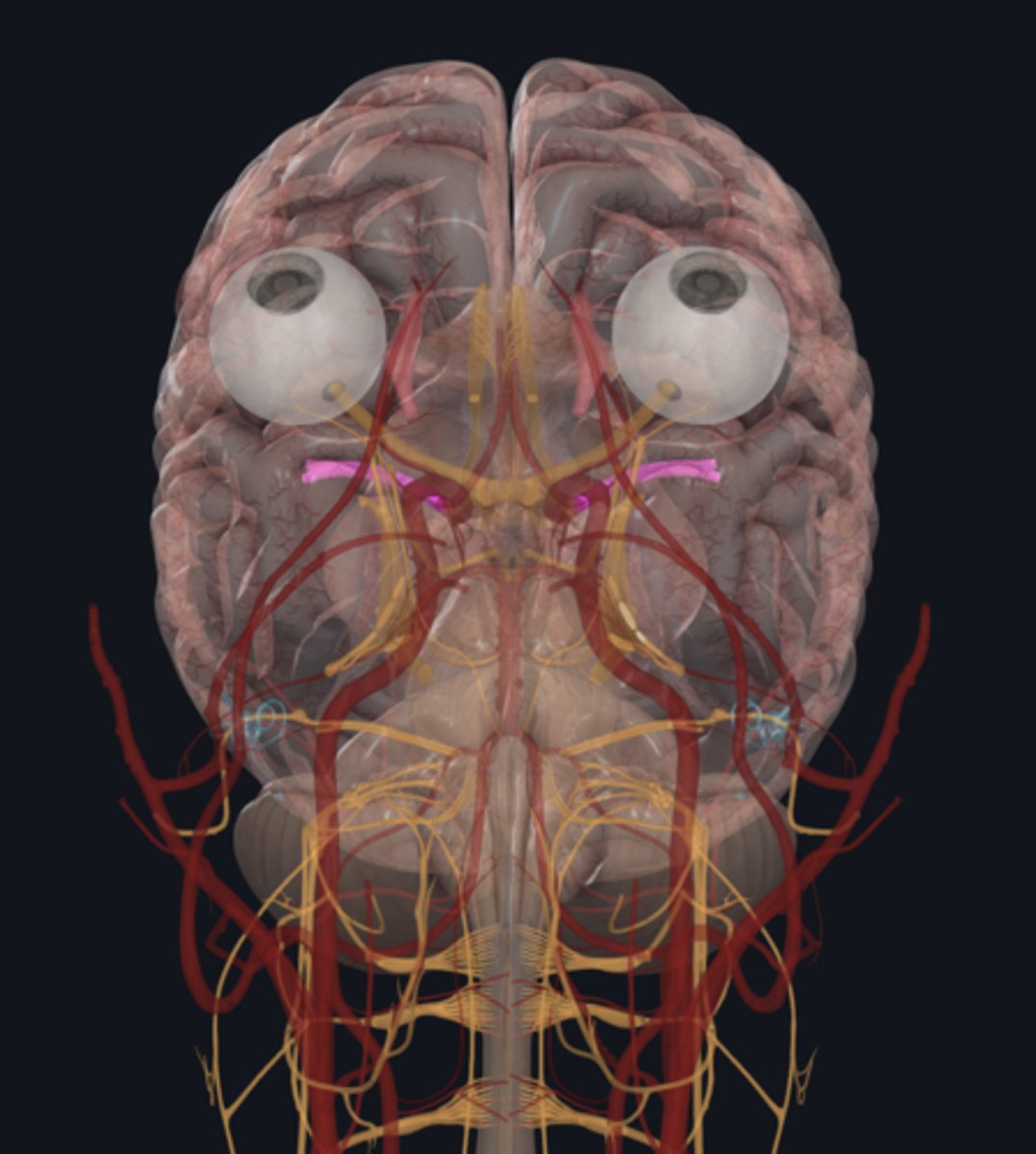
anterior cerebral artery
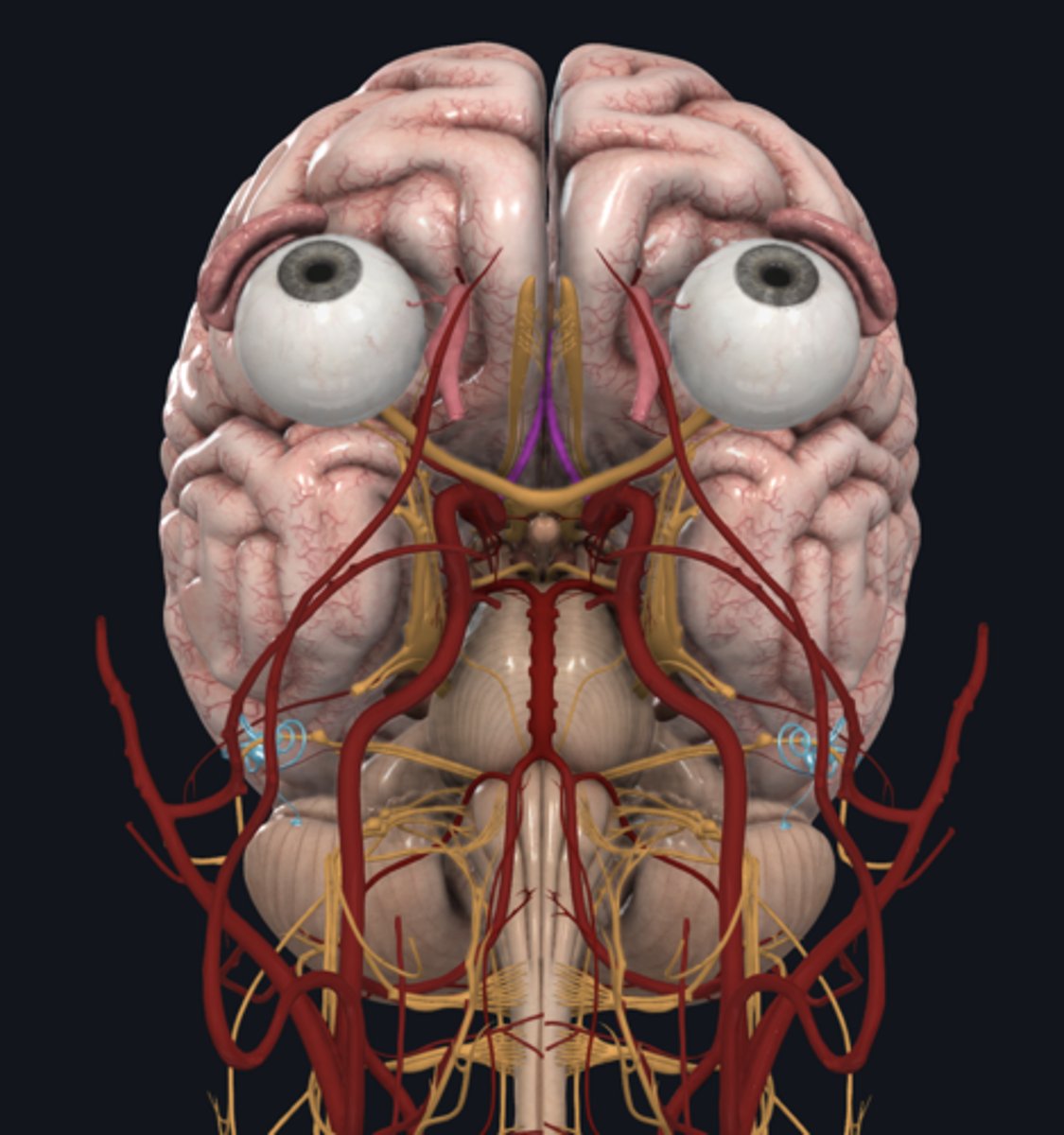
anterior communicating artery
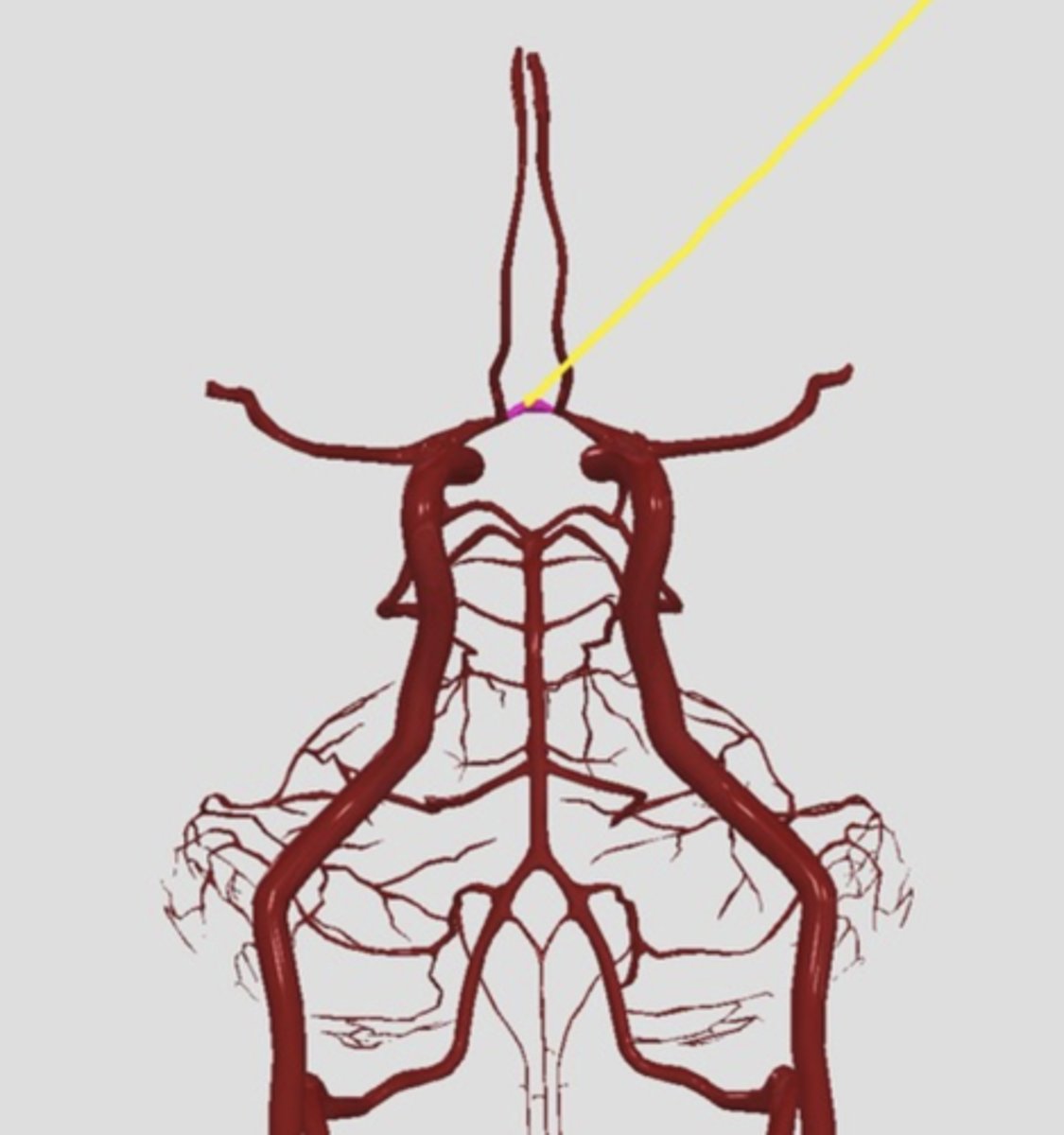
vertebral artery
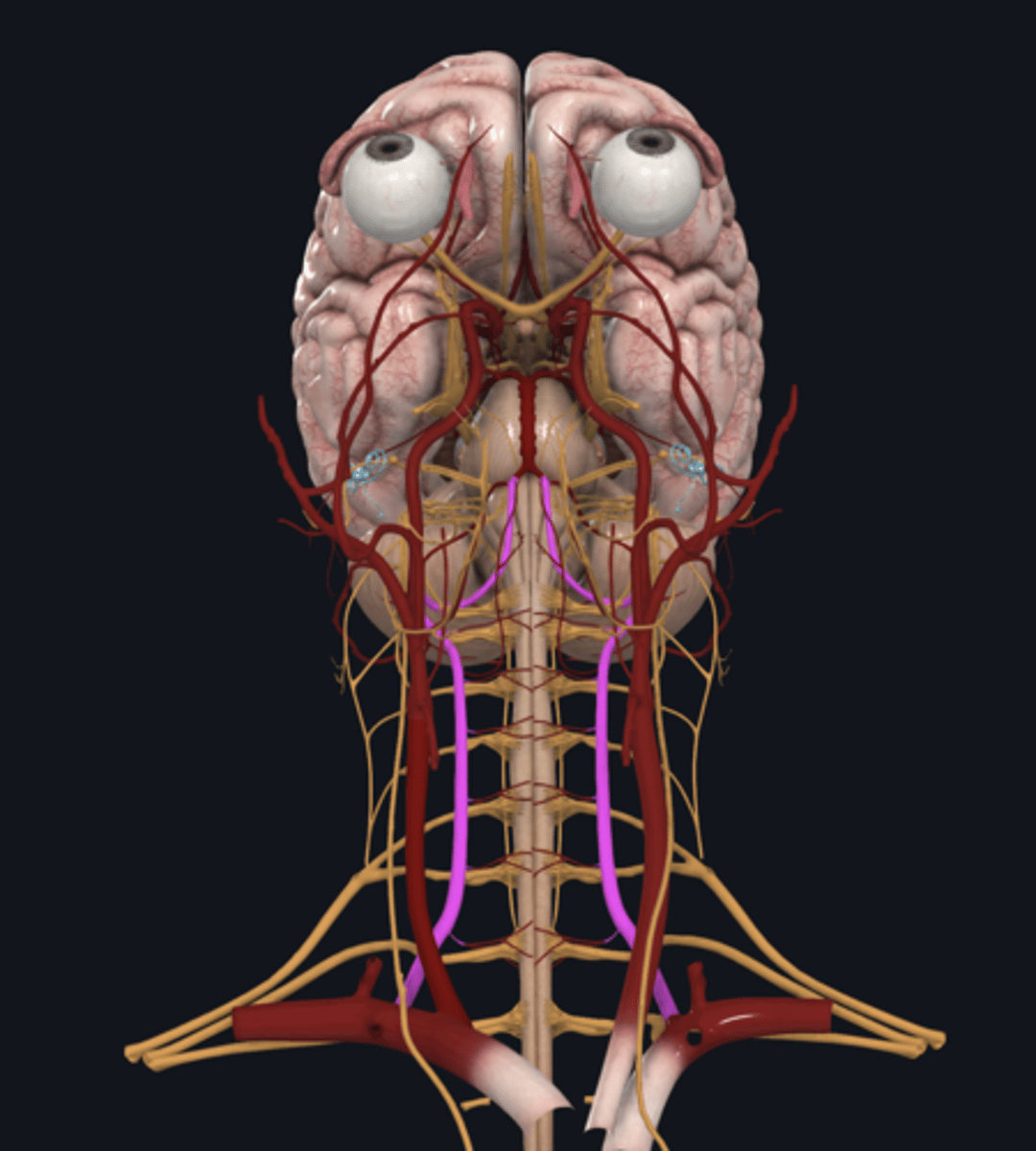
basilar artery

posterior cerebral artery
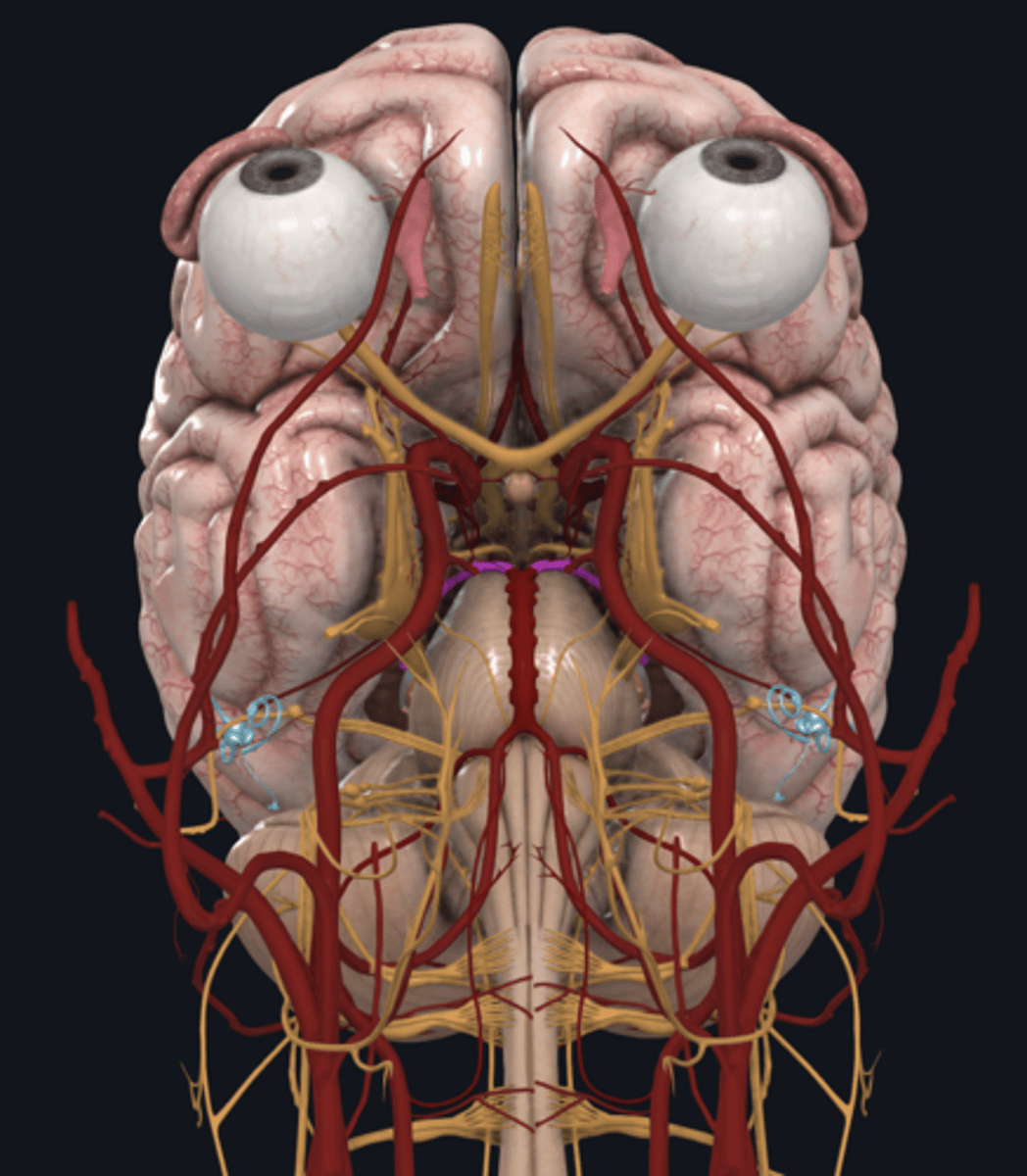
posterior communicating artery
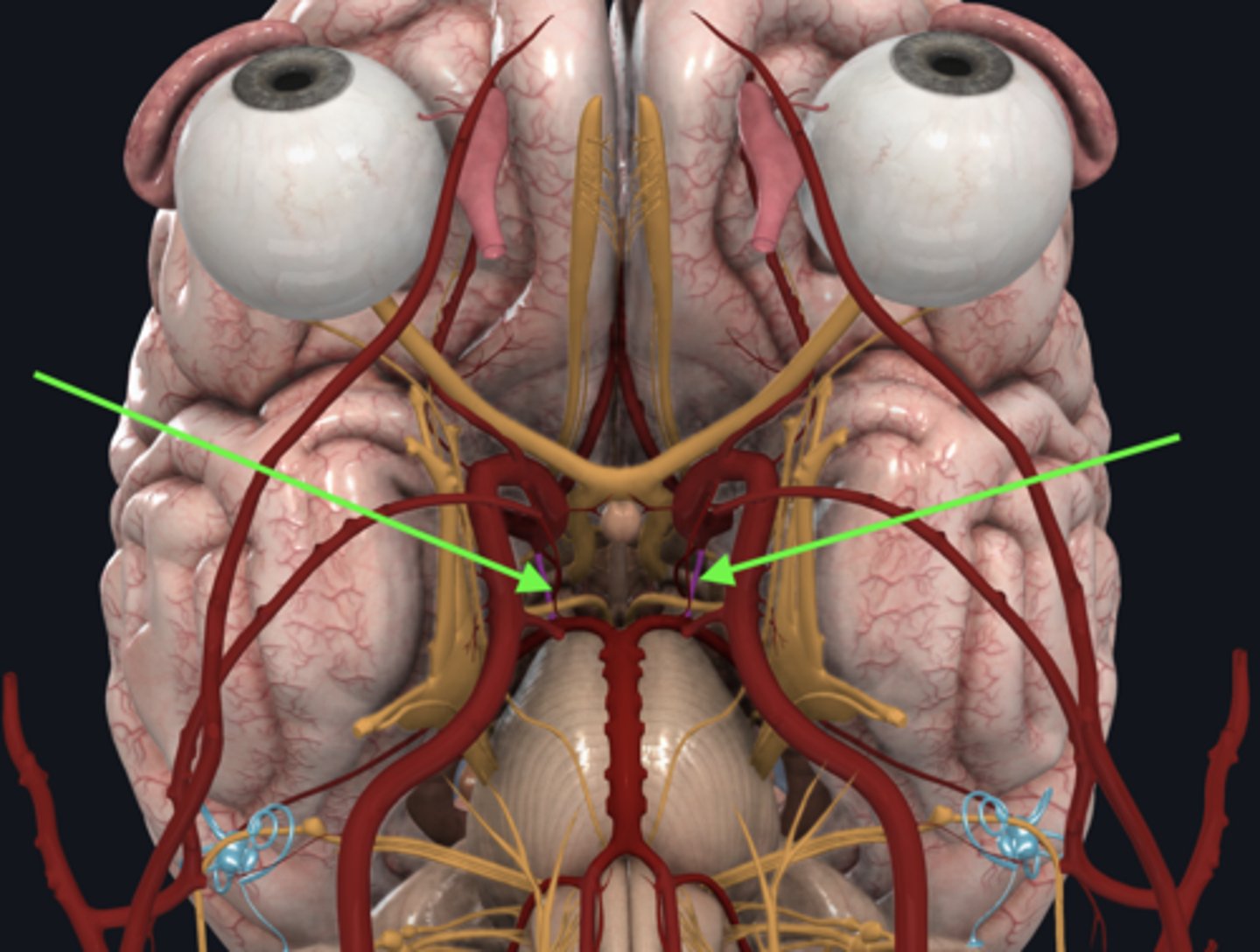
anterior circulation
1. common carotid artery
2. internal carotid artery
3. middle cerebral artery
4. anterior cerebral artery
5. anterior communicating artery
posterior circulation
1. vertebral artery
2. basilar artery
3. posterior communicating artery
4. posterior communicating artery
lateral ventricles
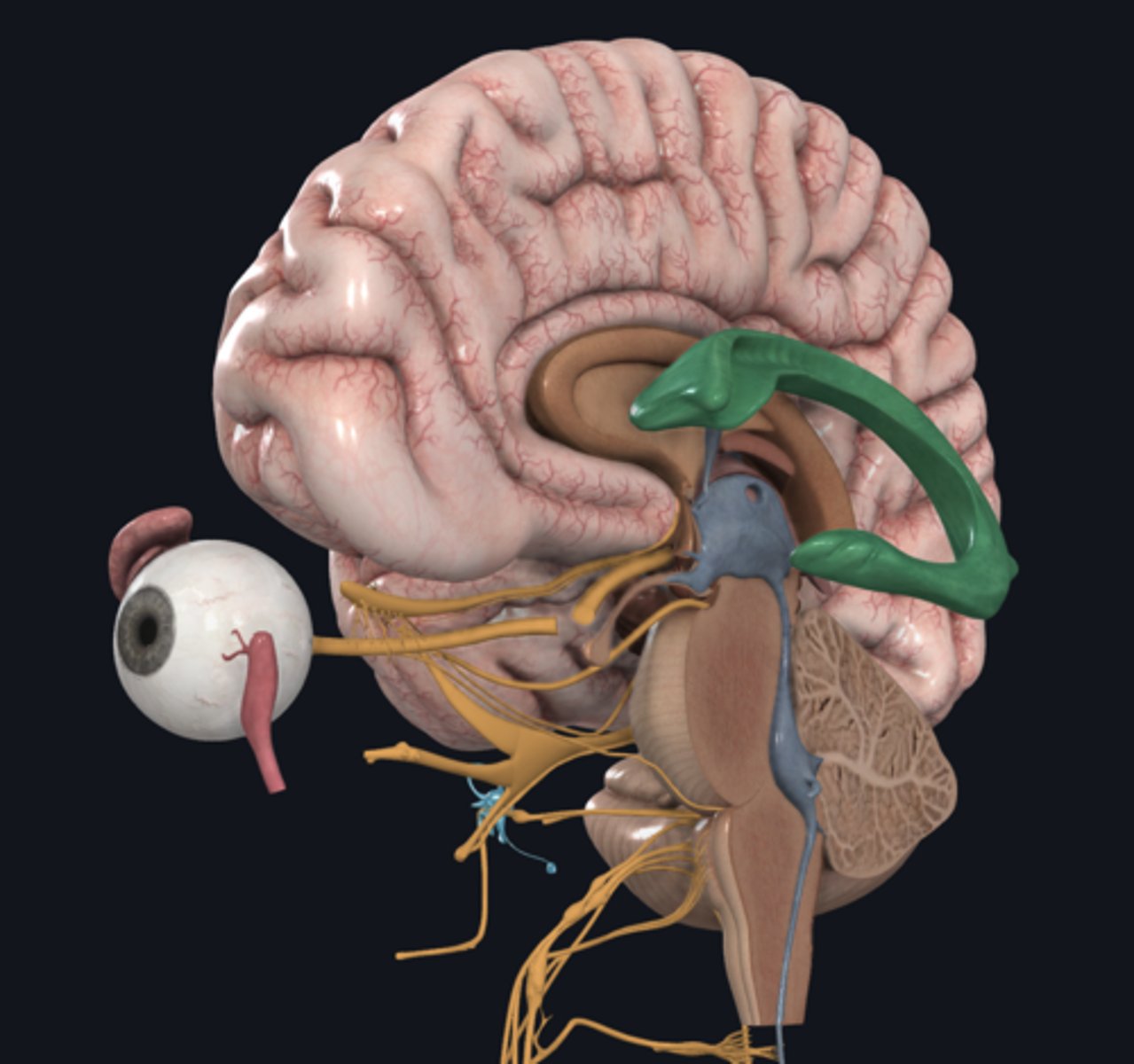
foramen of Monro (interventricular foramen)
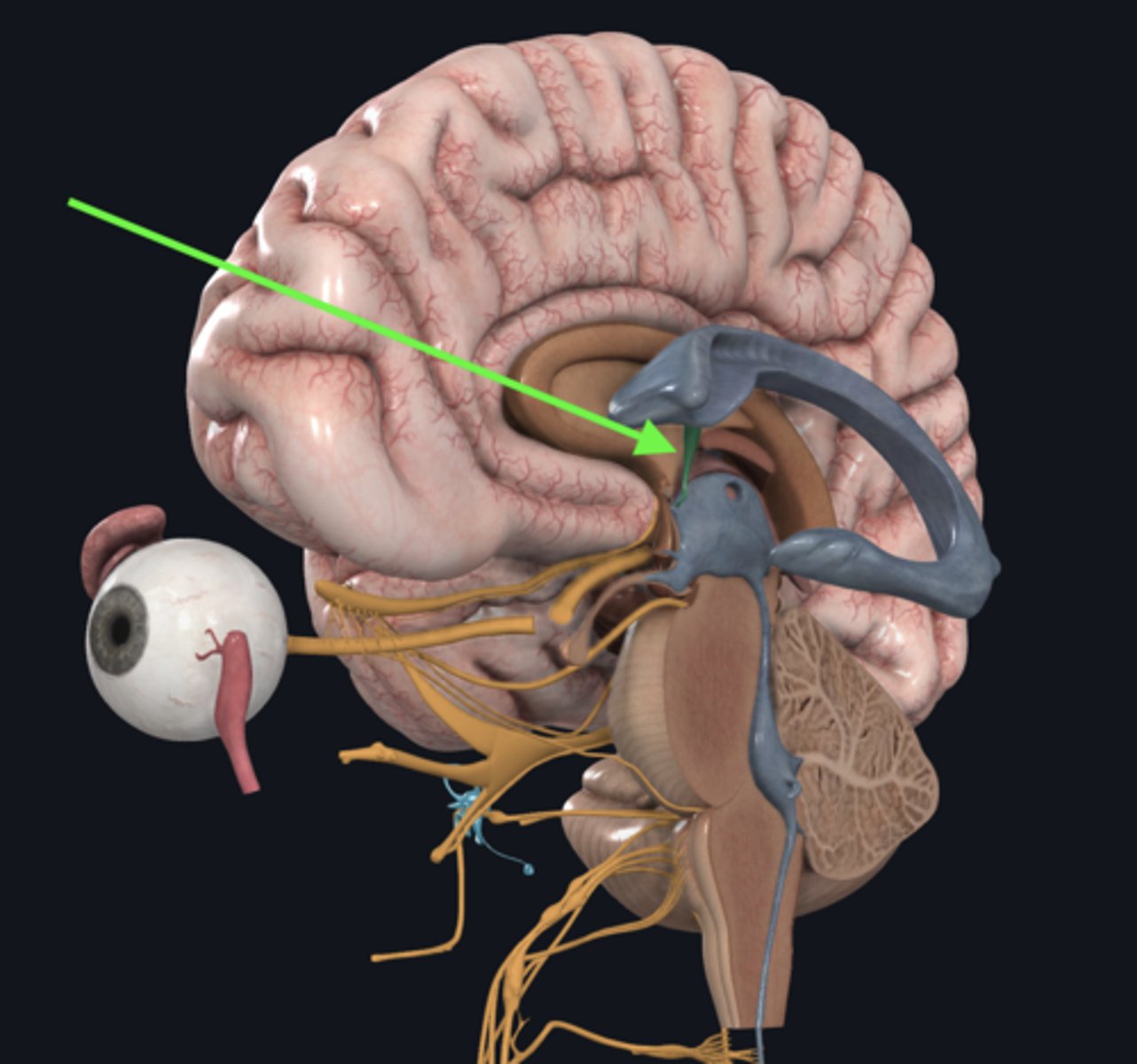
foramen of Monro
What connects the lateral ventricles to the third ventricle?
3rd ventricle
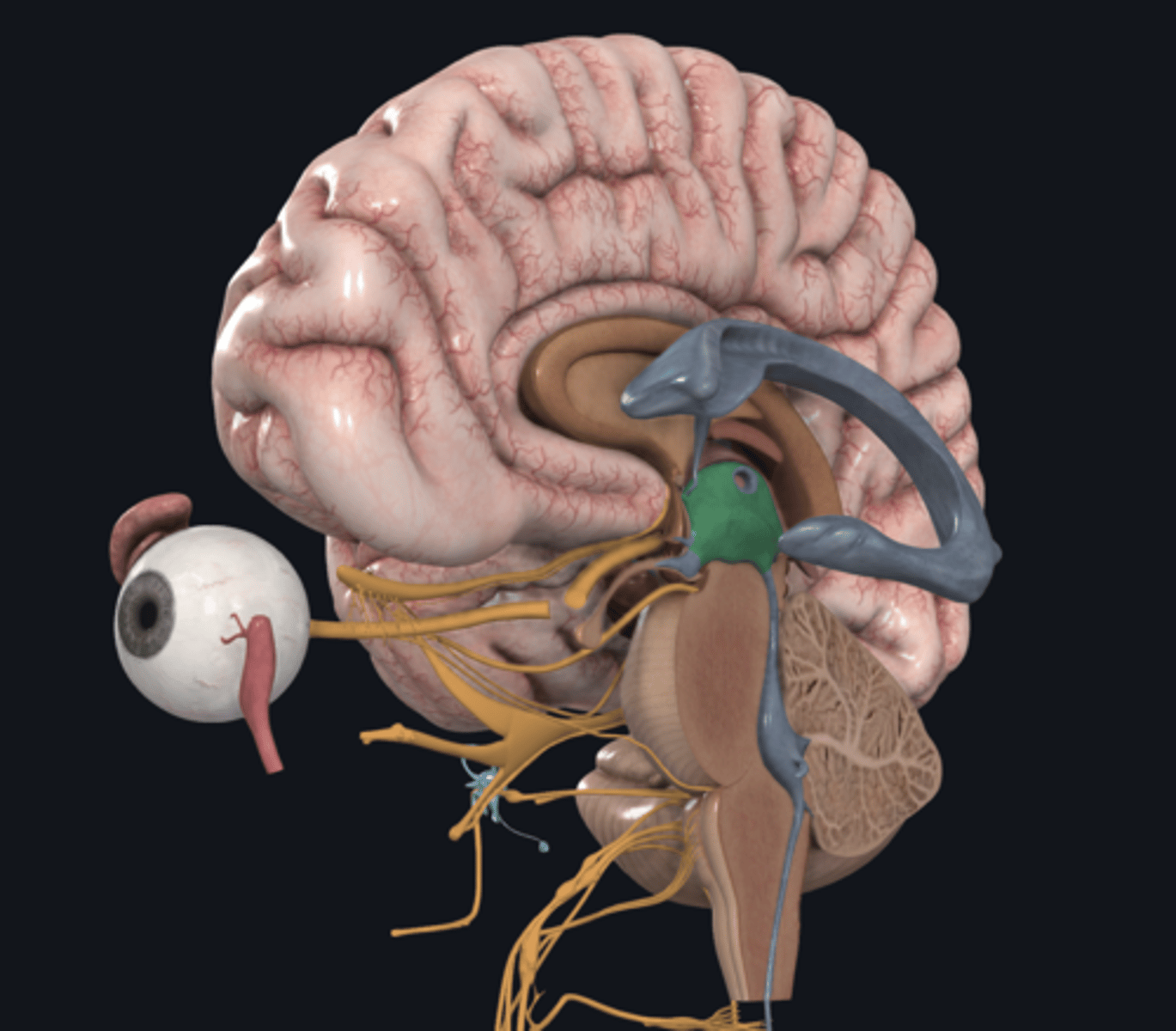
cerebral aqueduct
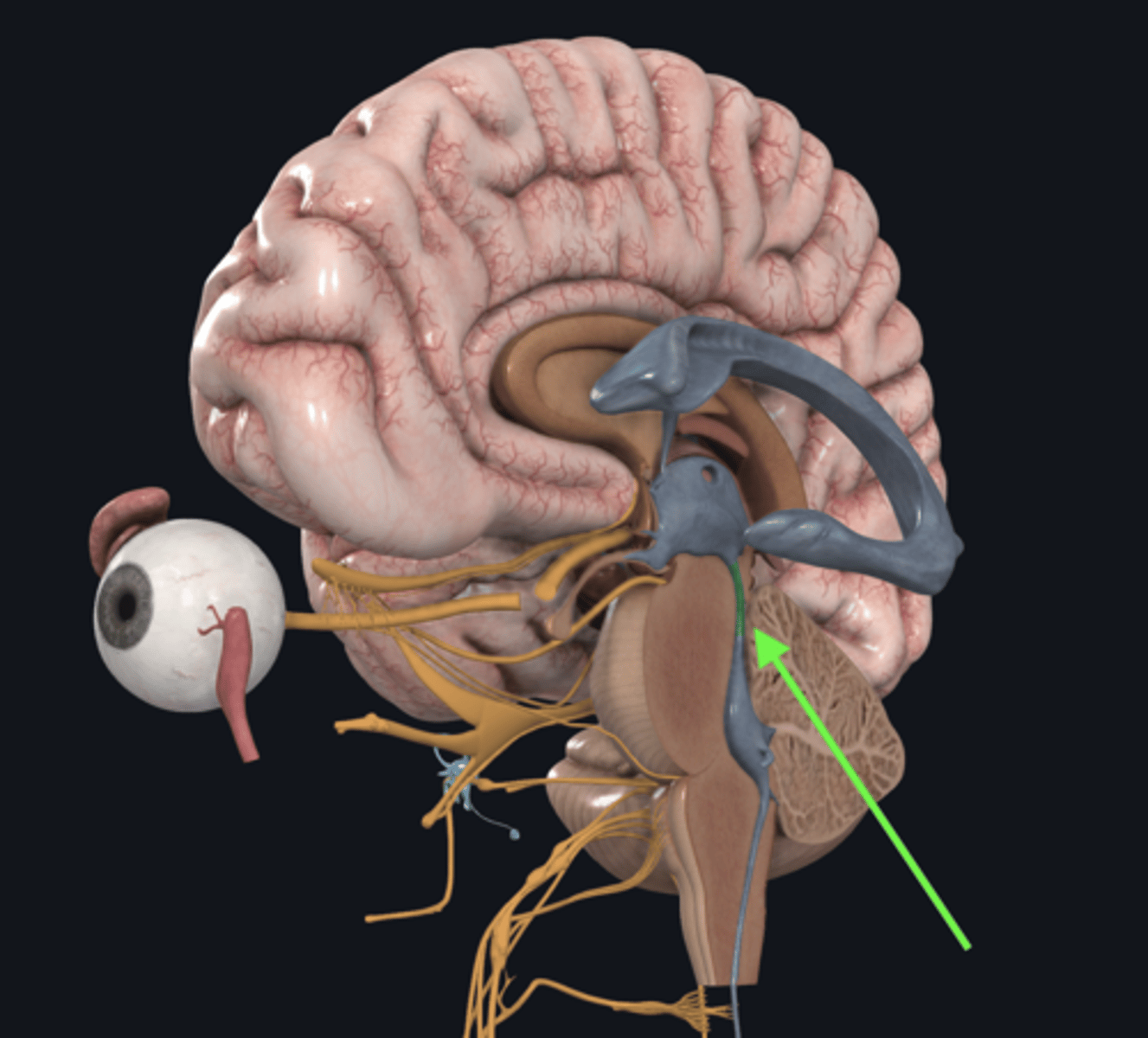
4th ventricle
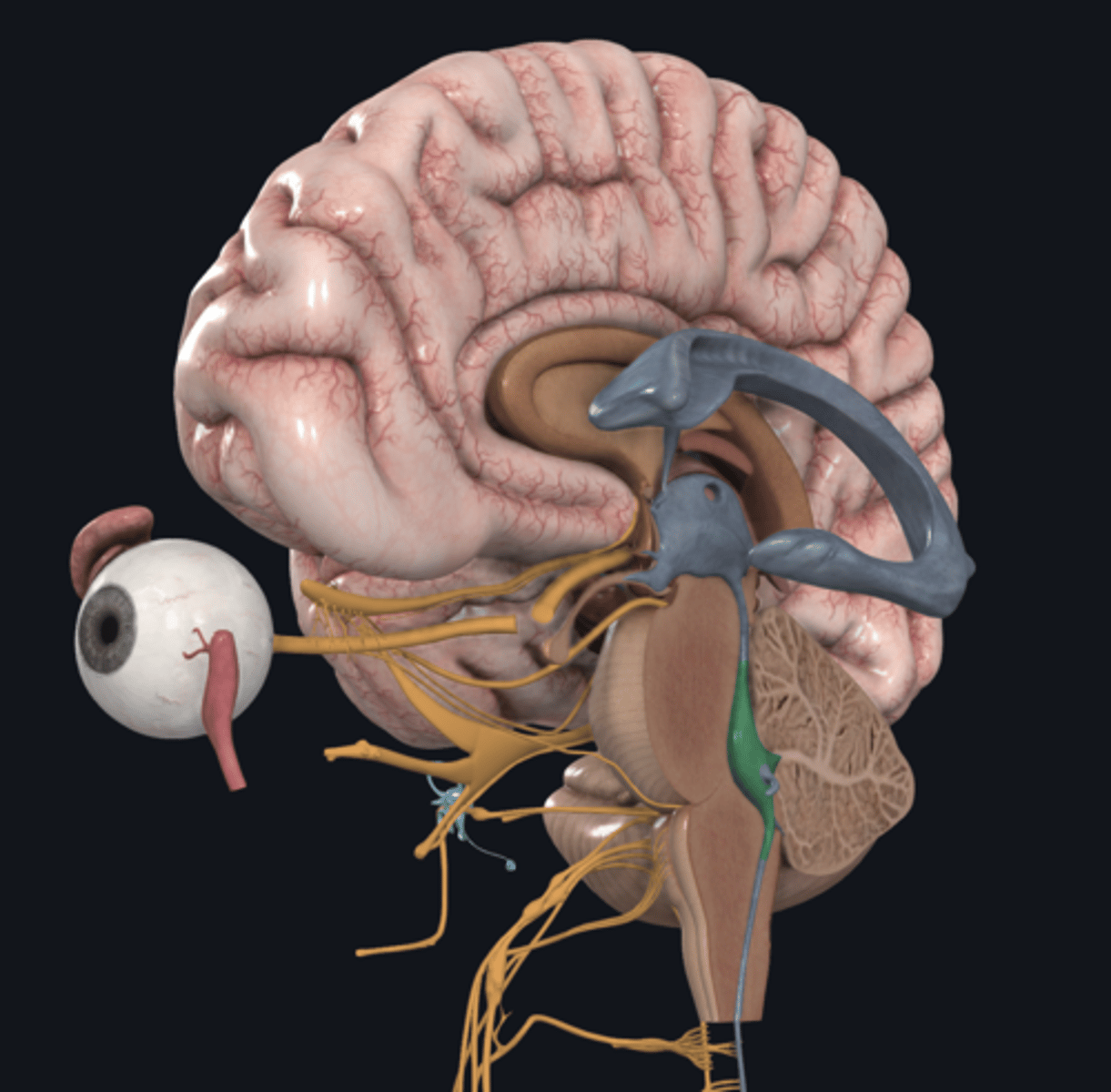
skull
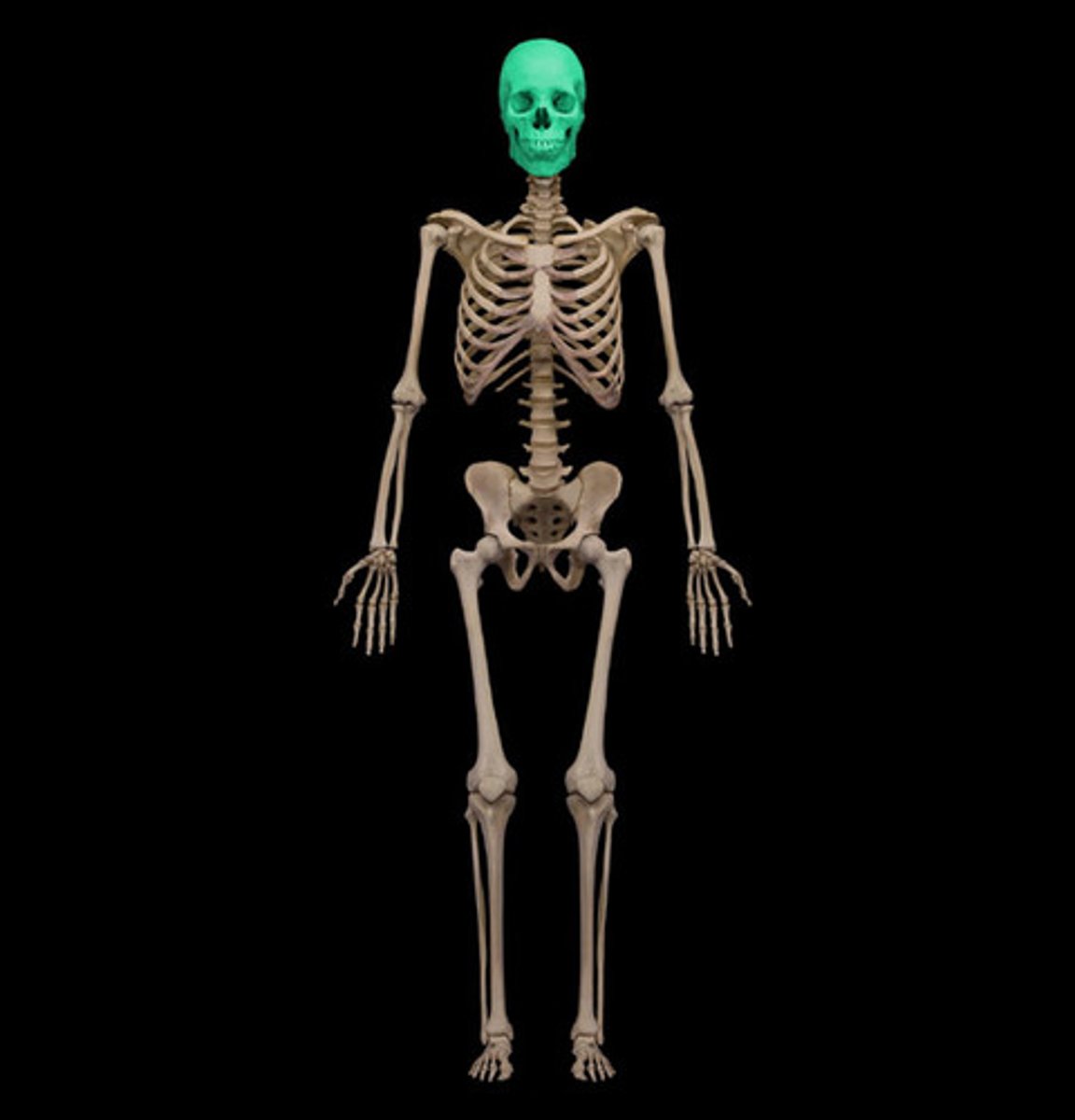
frontal bone
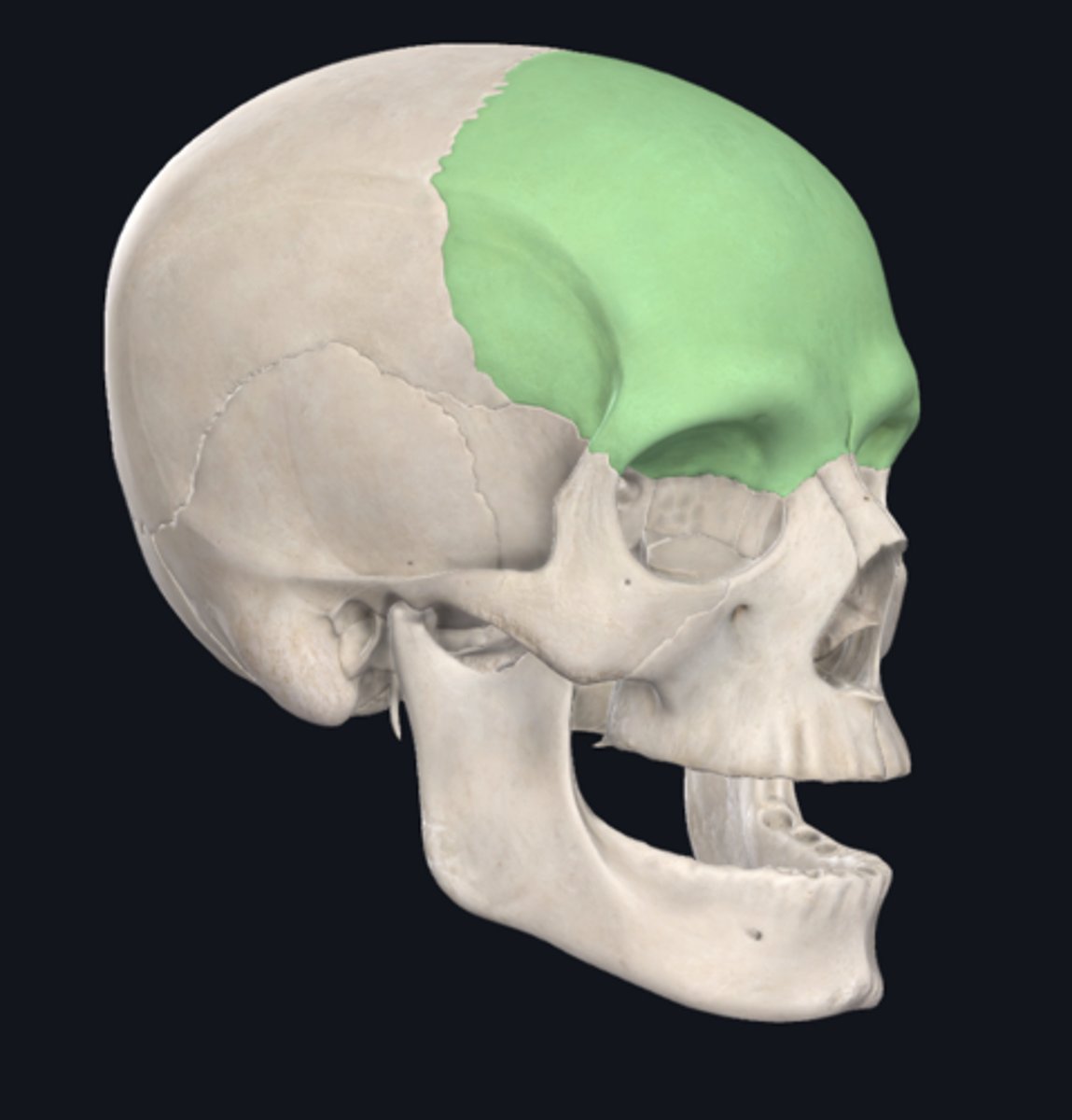
orbit of the eye
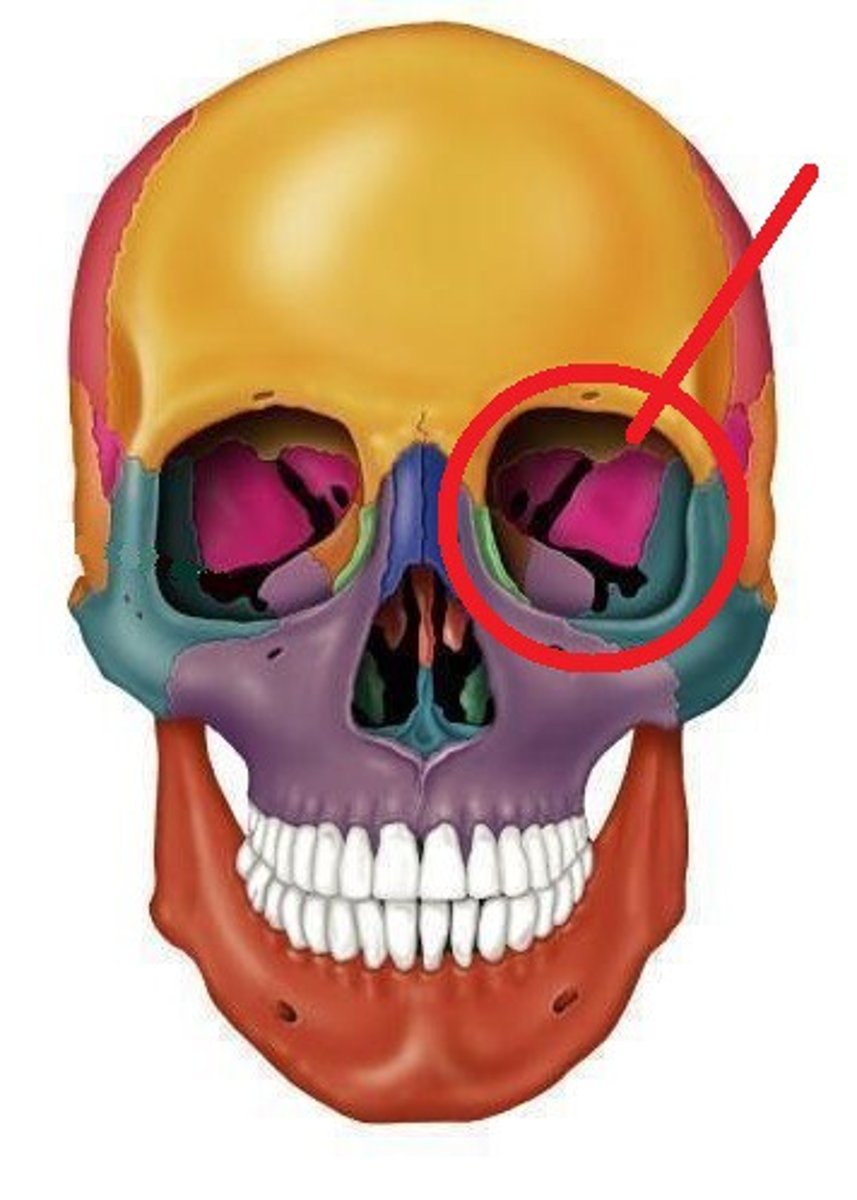
supraorbital foramen

nasal bone
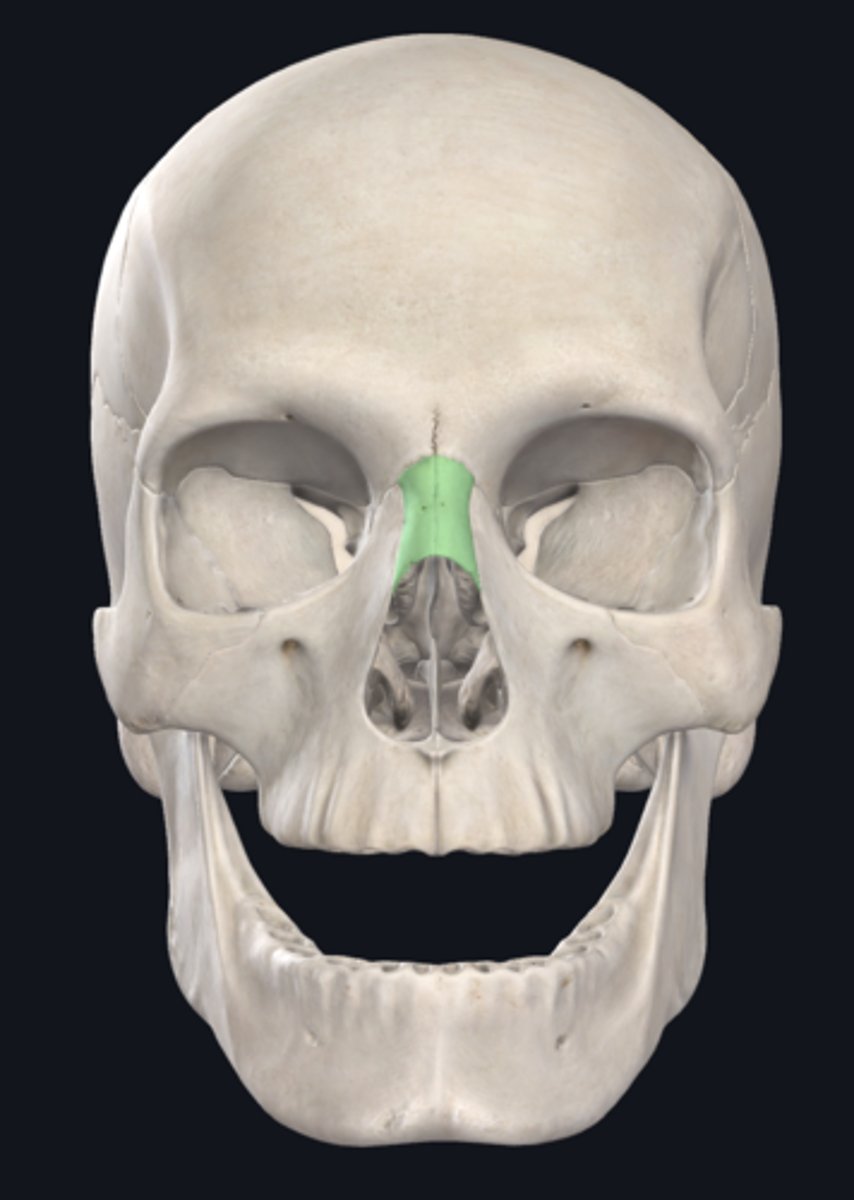
maxilla
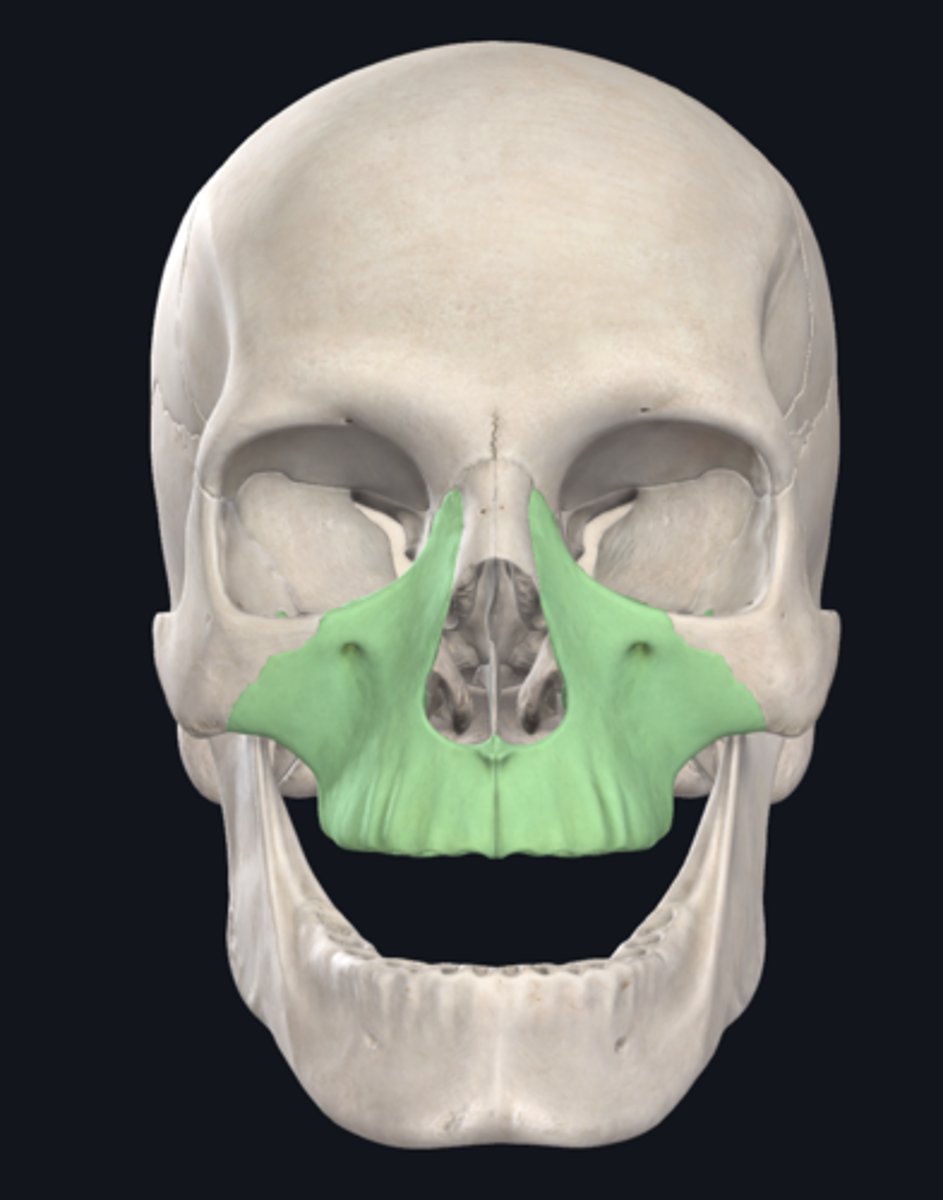
infraorbital foramen
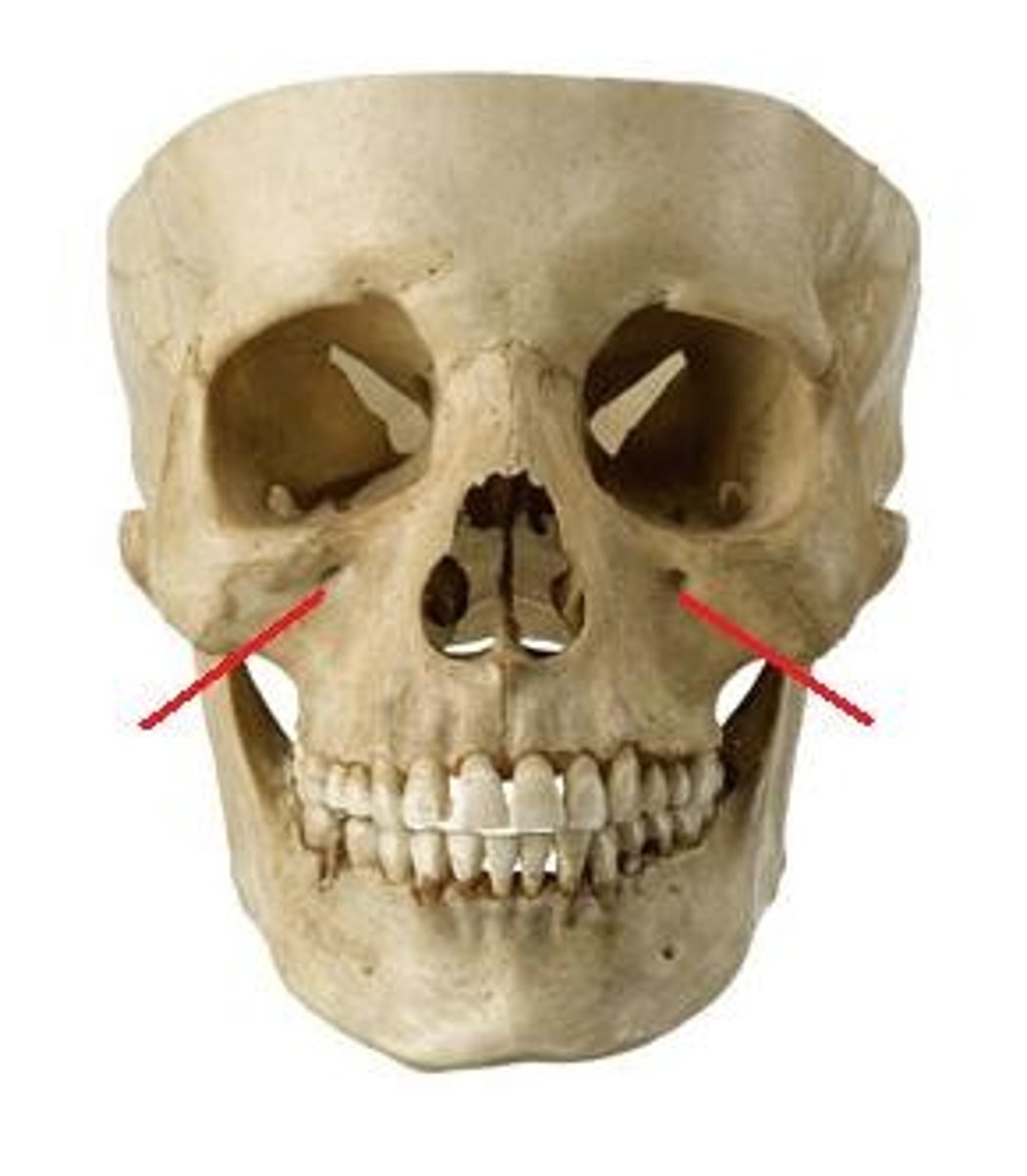
palatine bone

mandible

ramus of the mandible
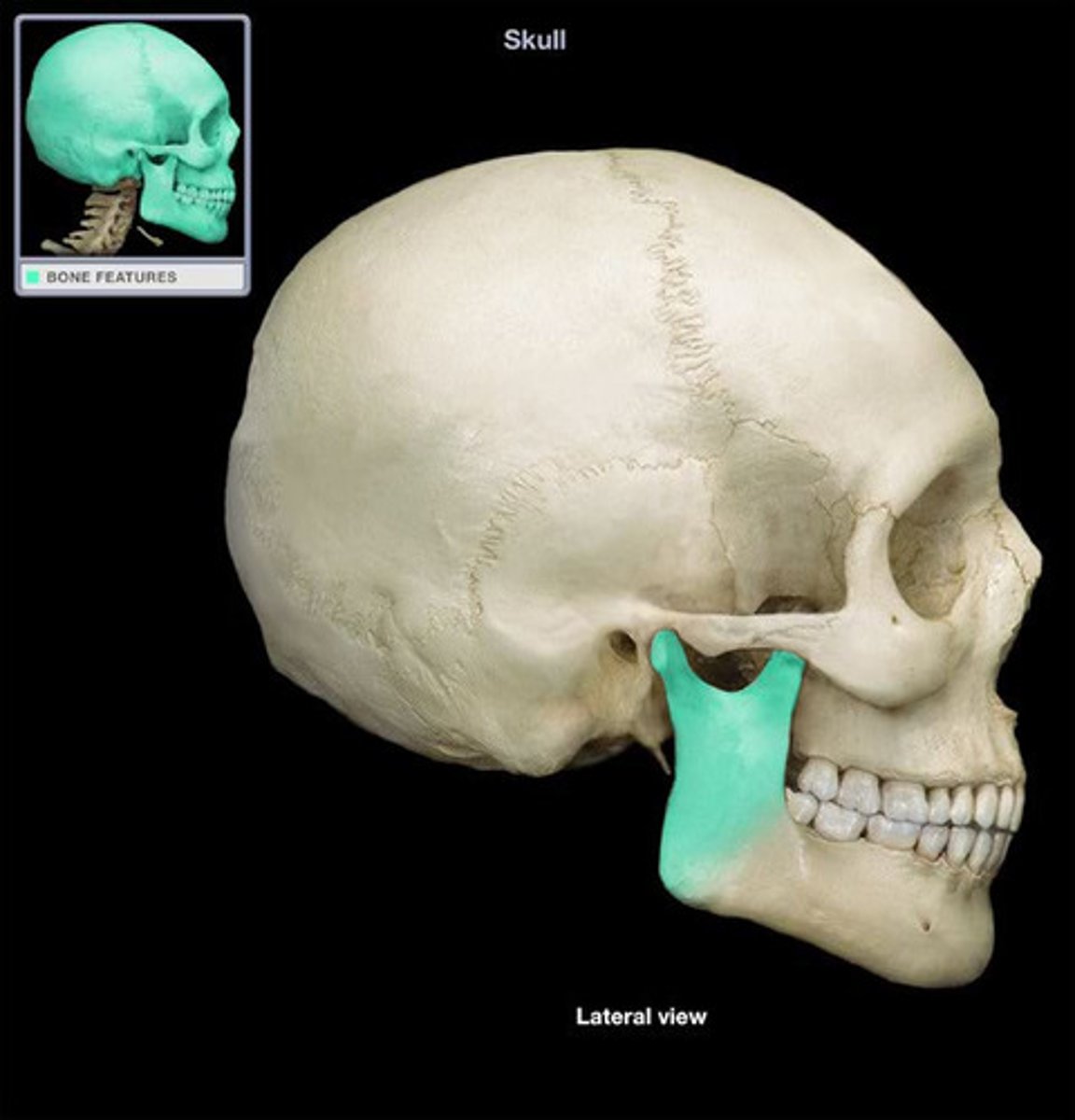
mandibular angle
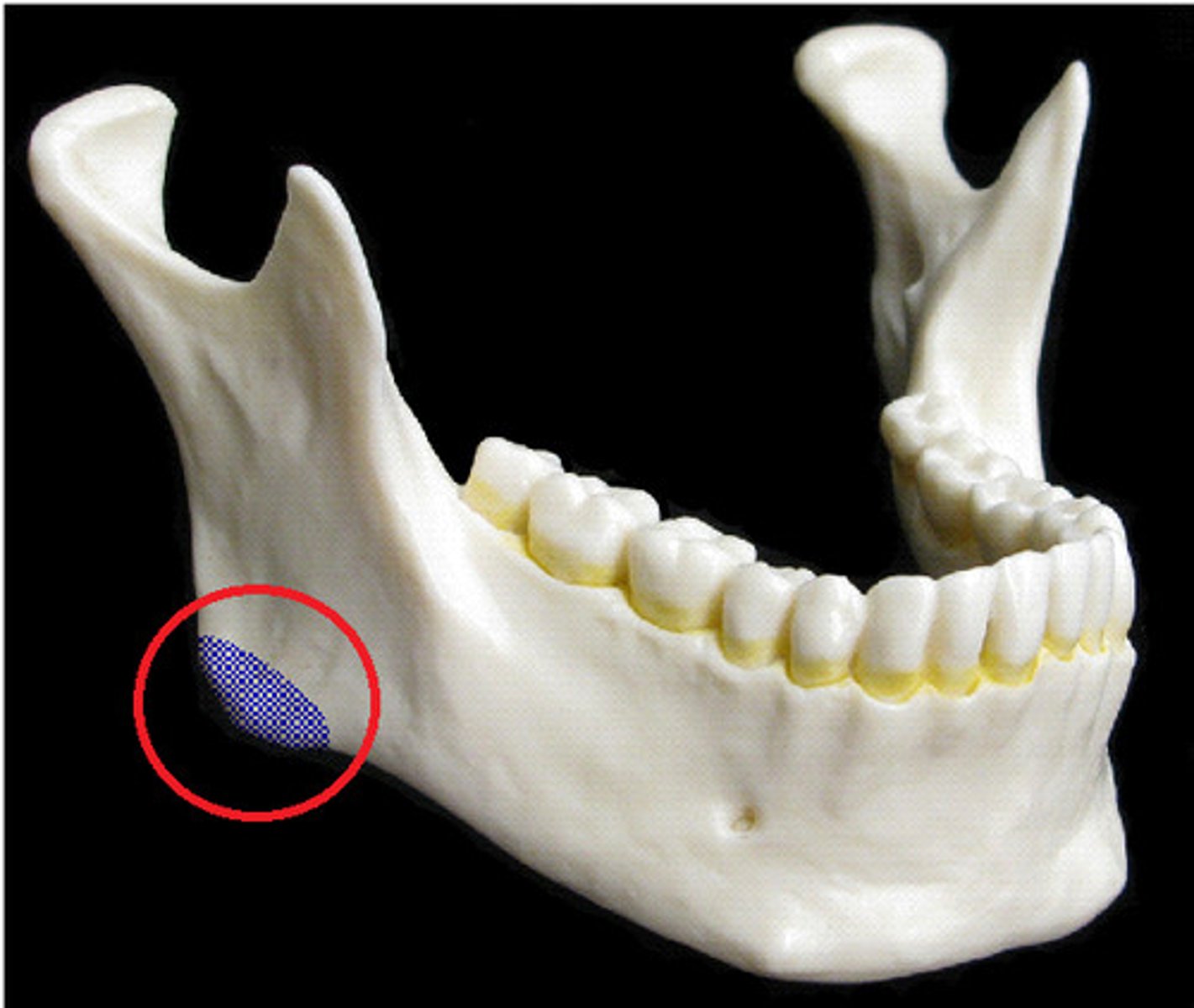
coronoid process
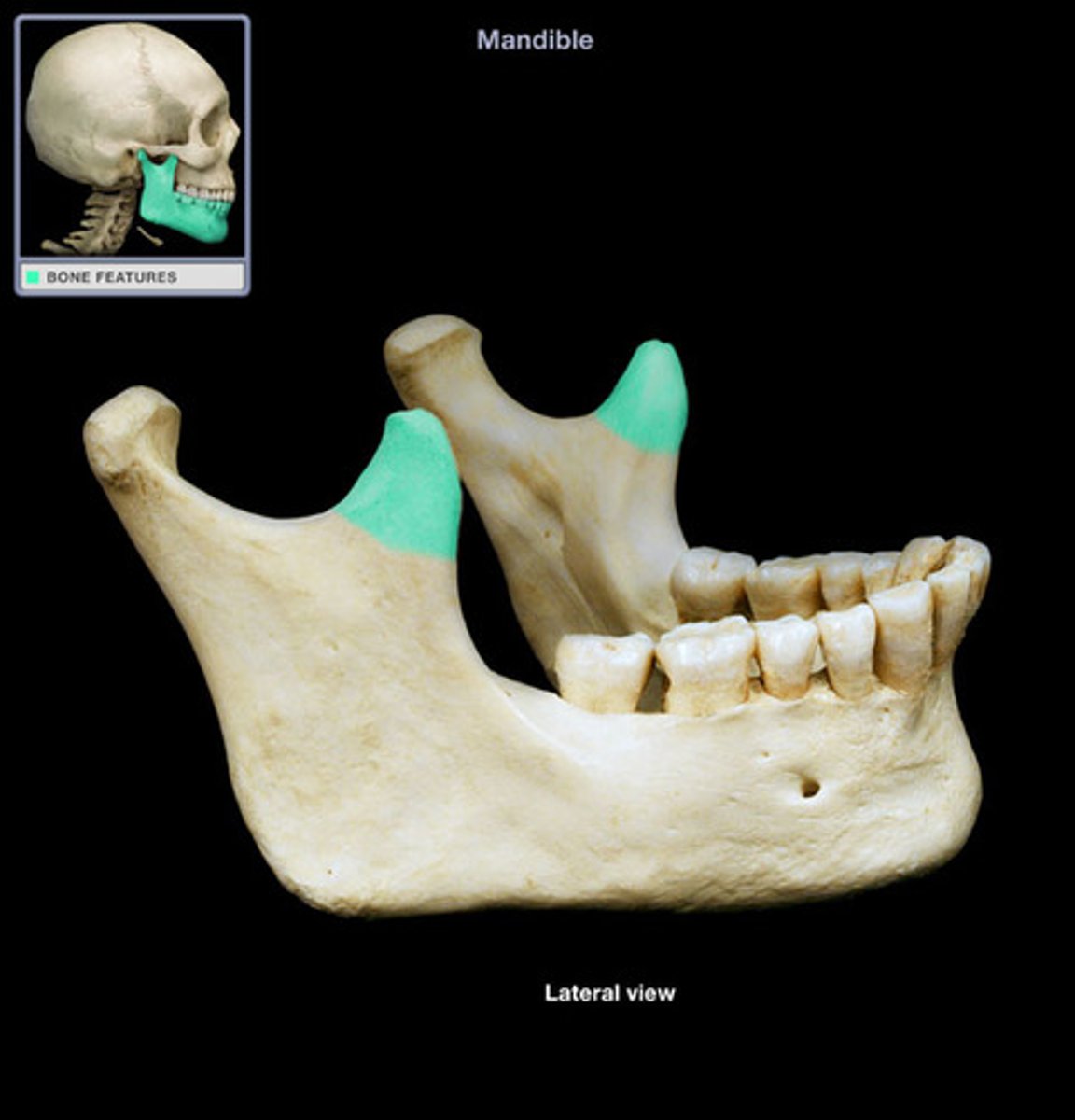
mandibular condyle (temporomandibular joint of TMJ)
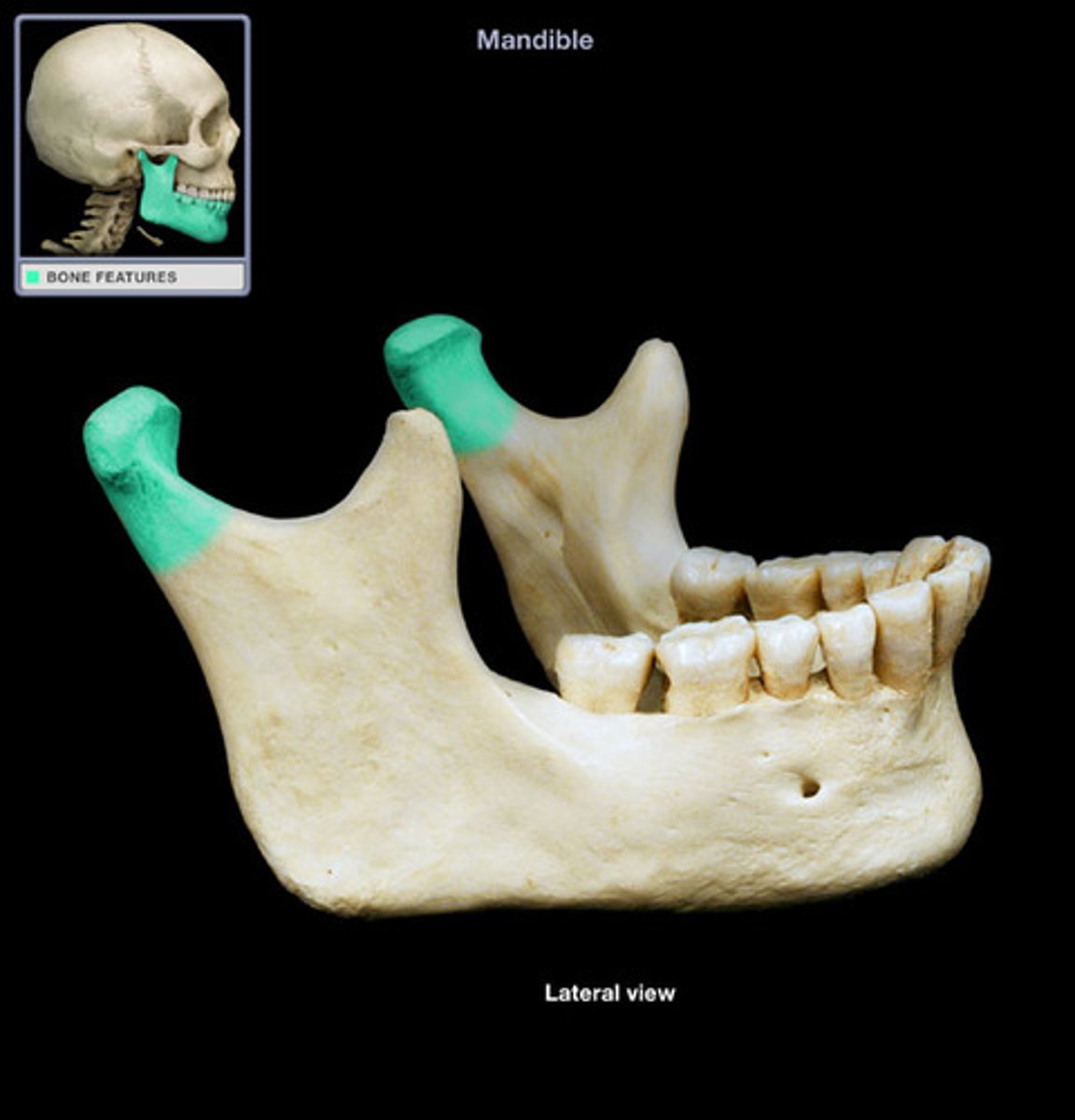
lacrimal bone
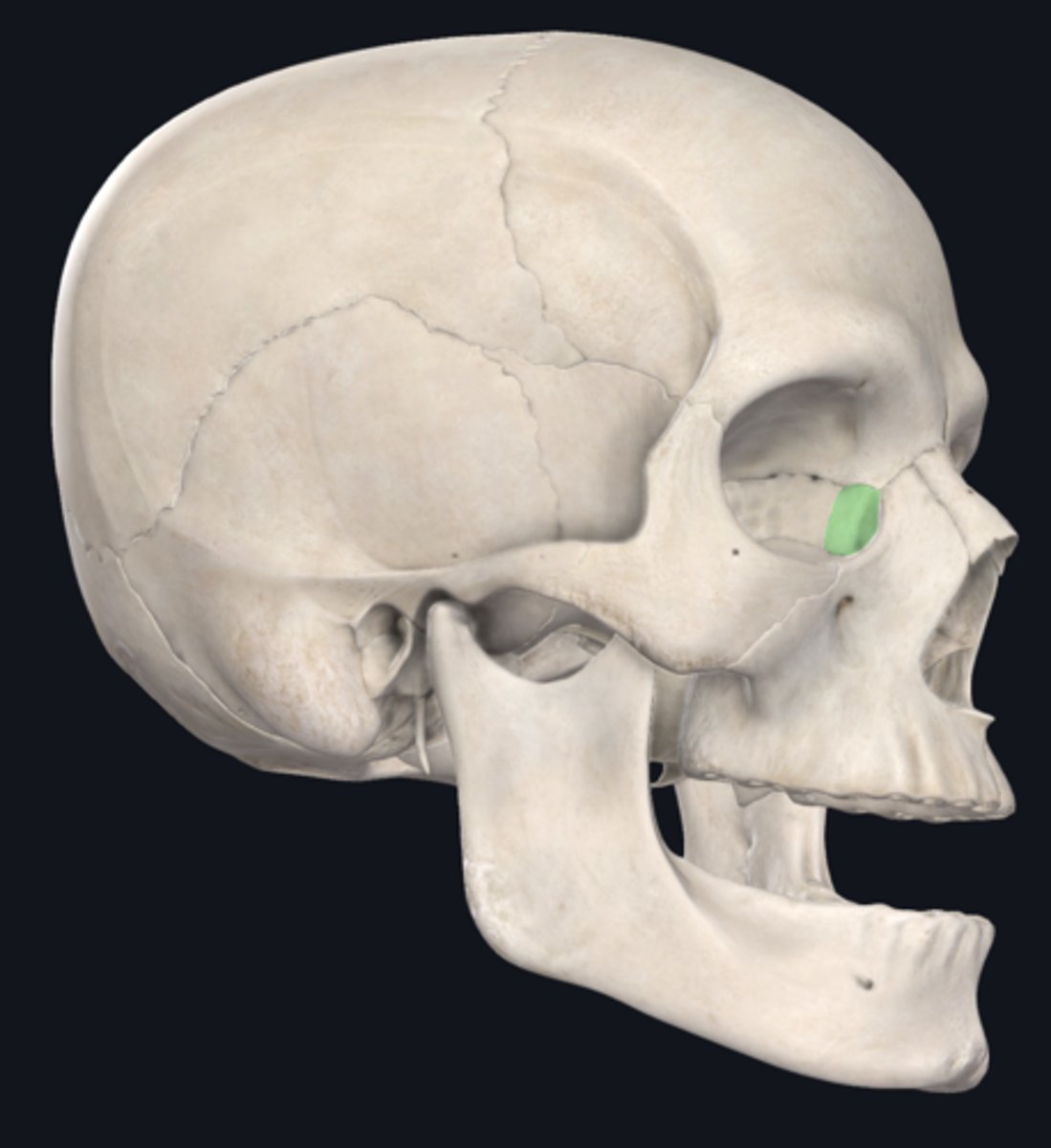
zygomatic bone
